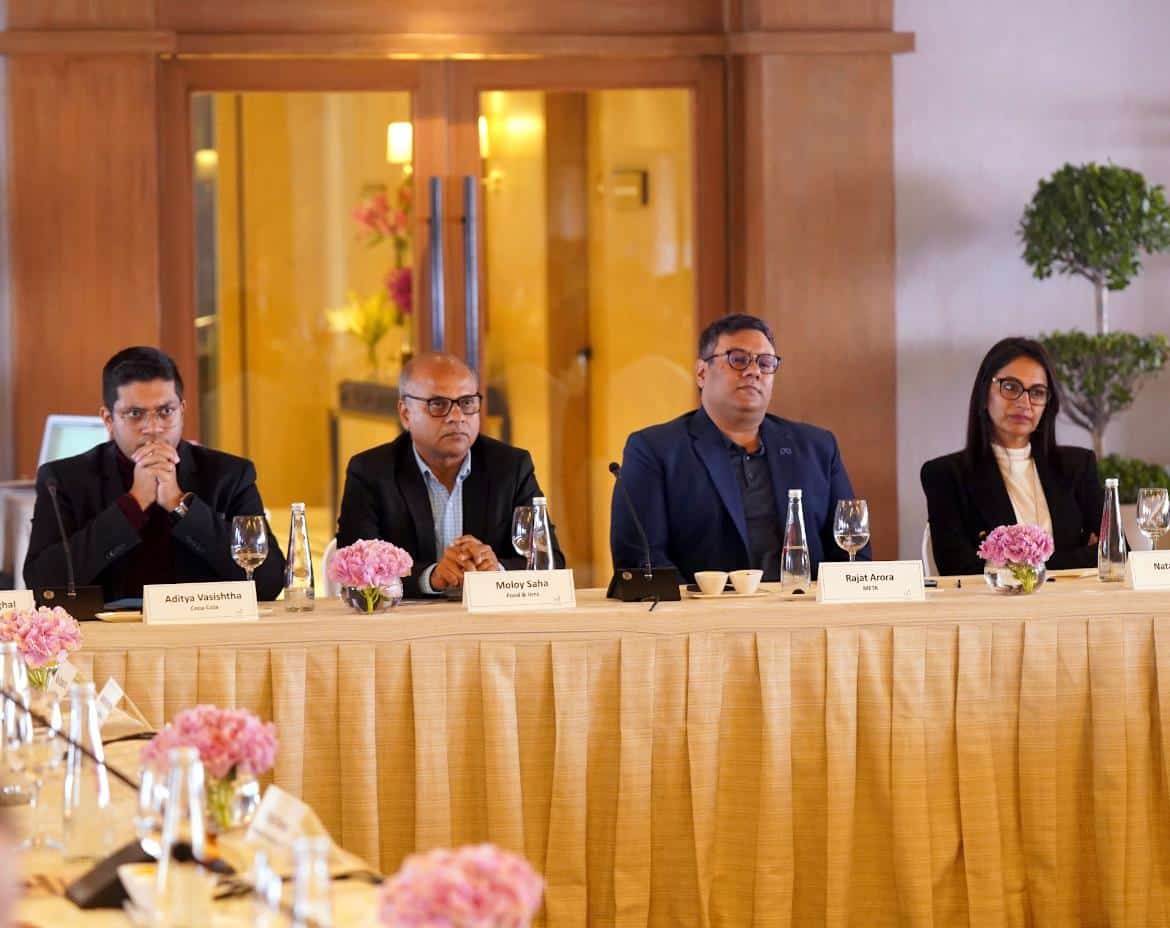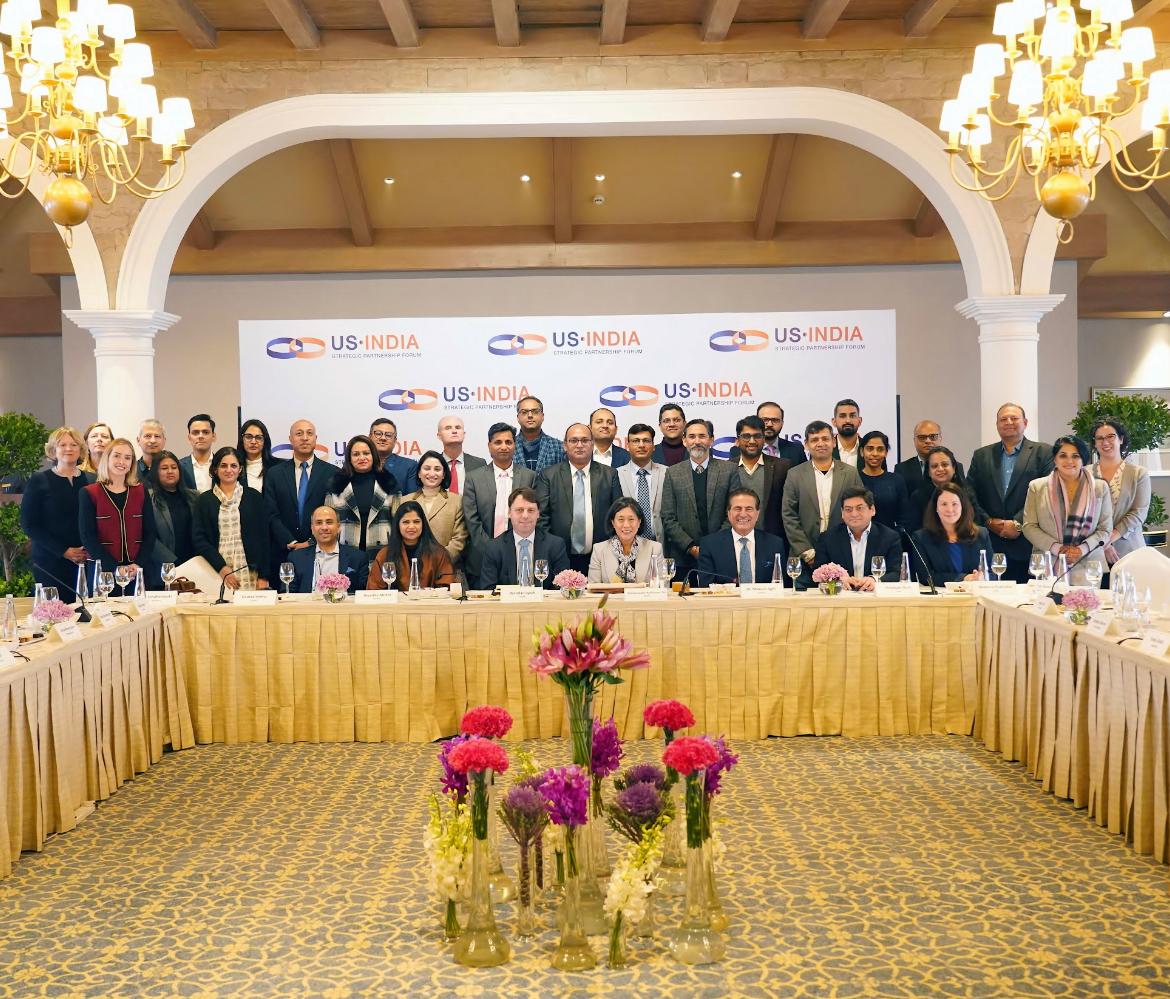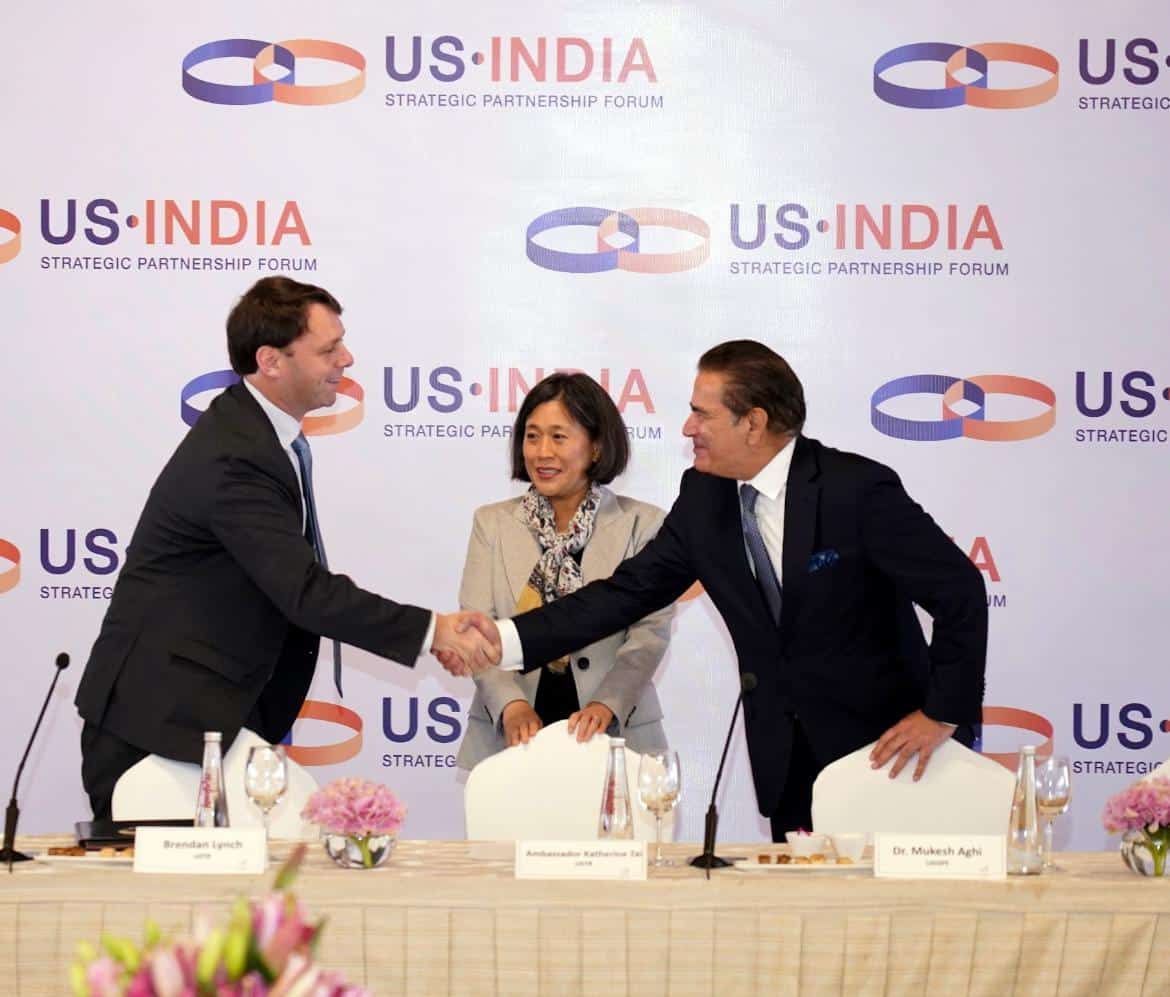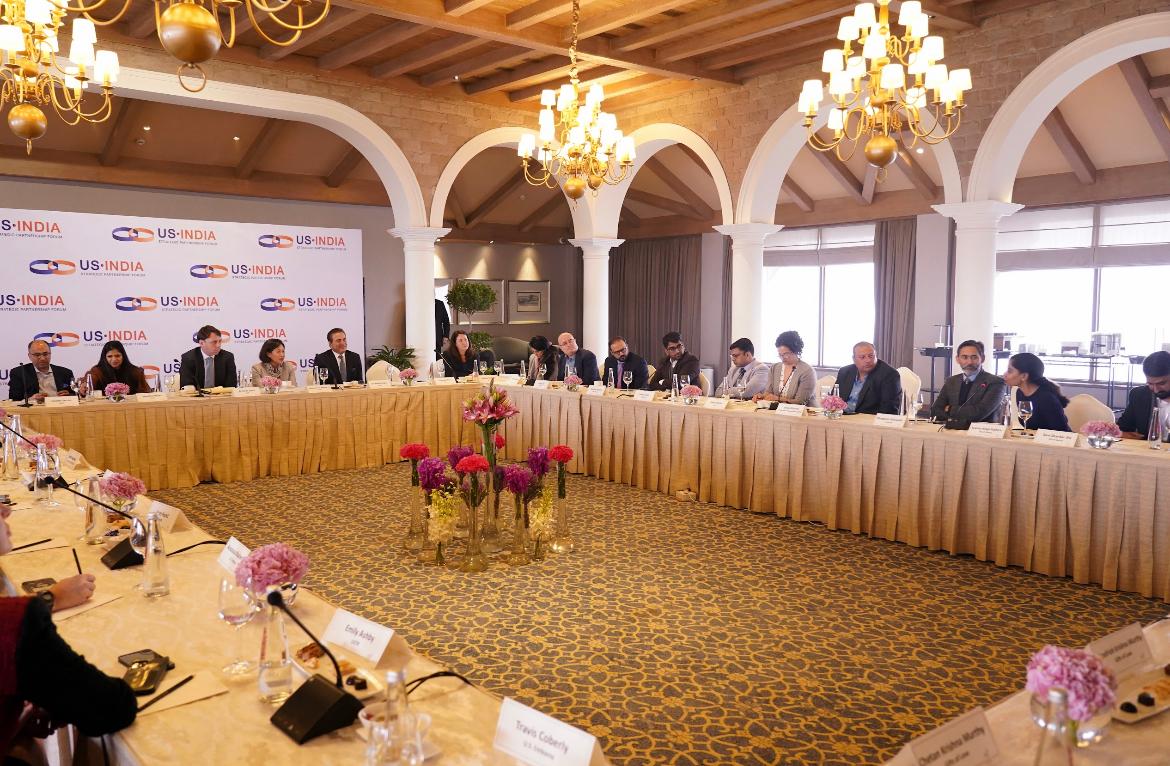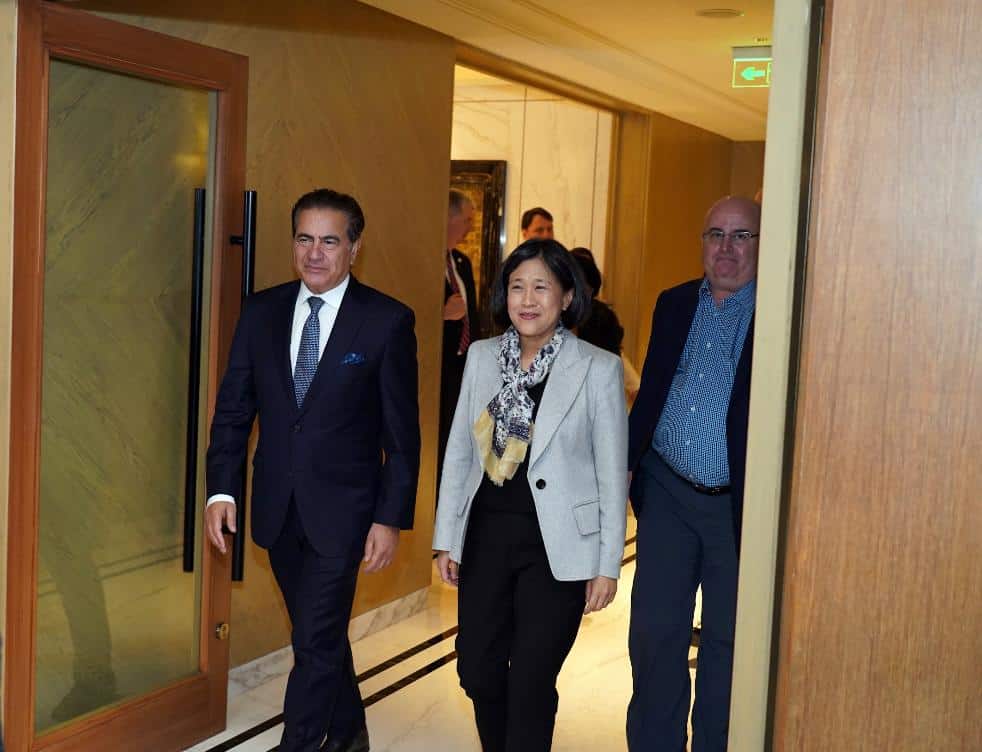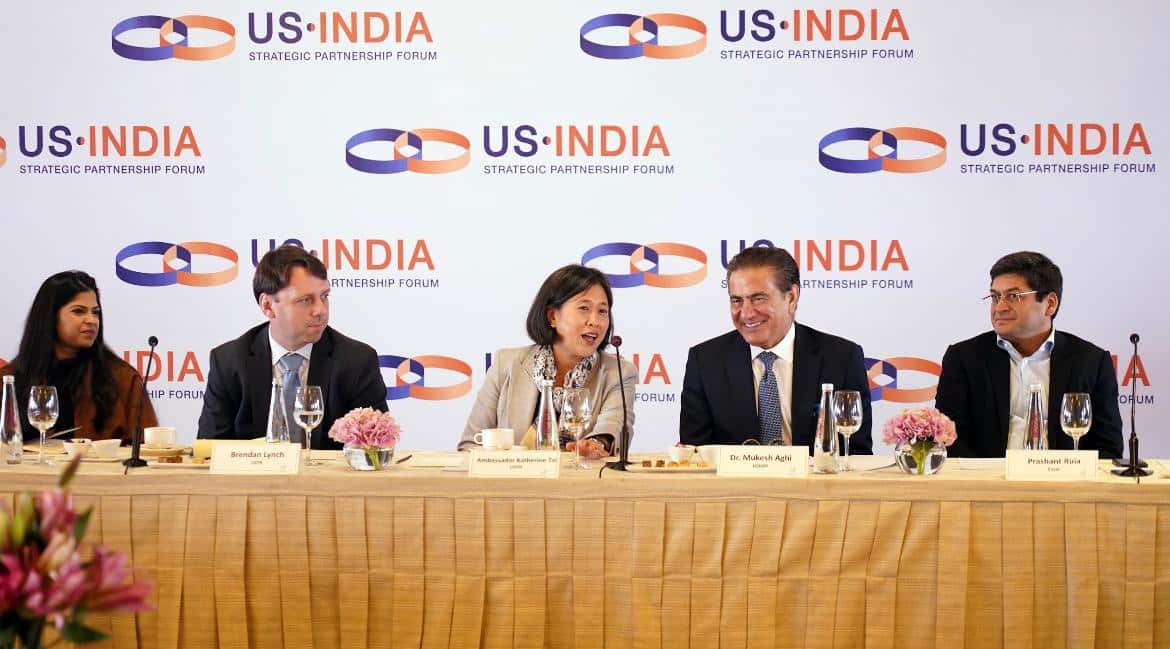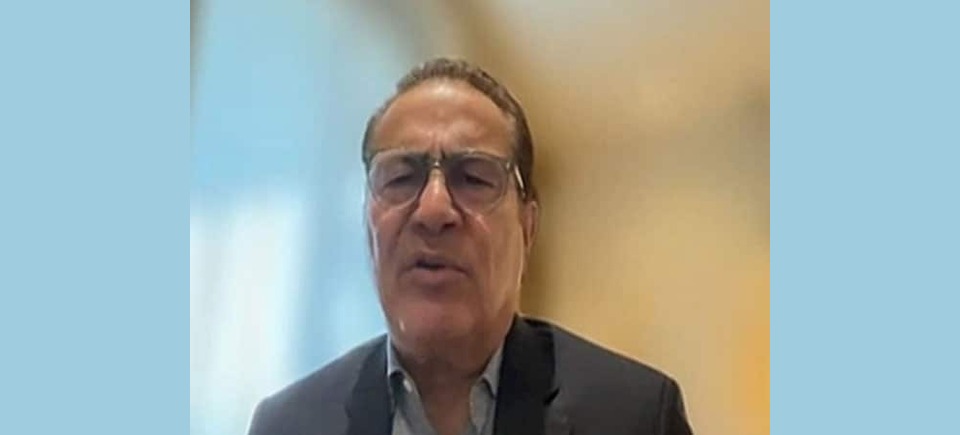
Archives: News

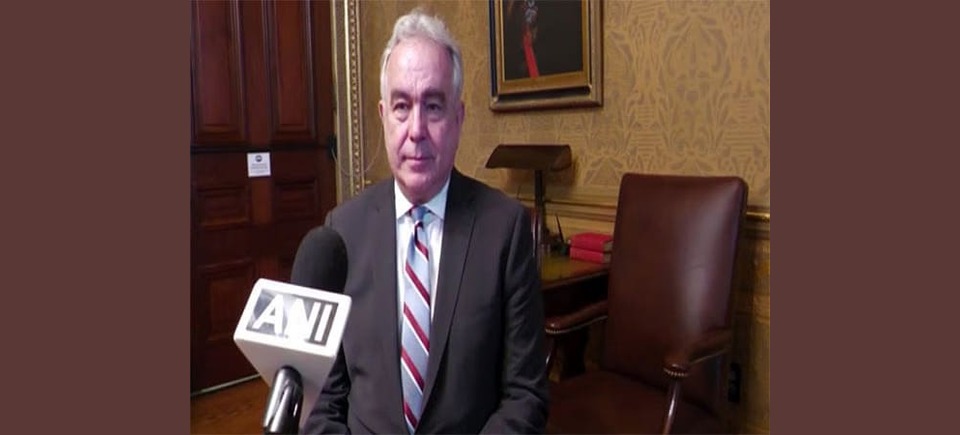
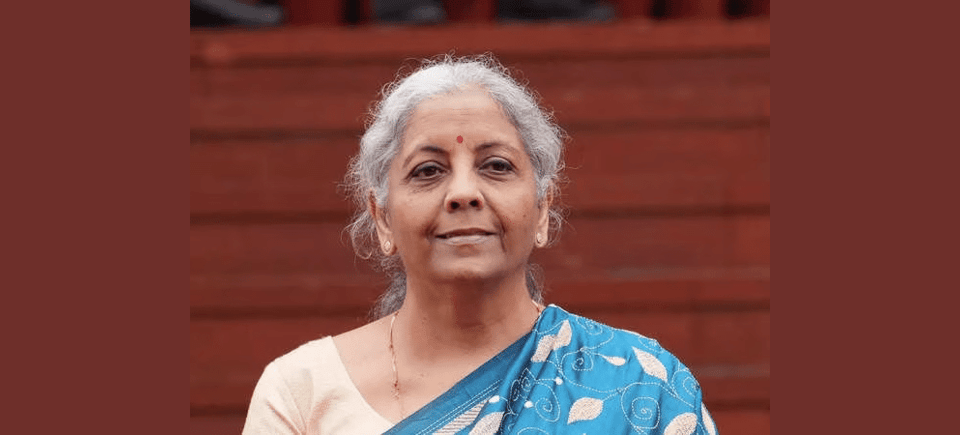
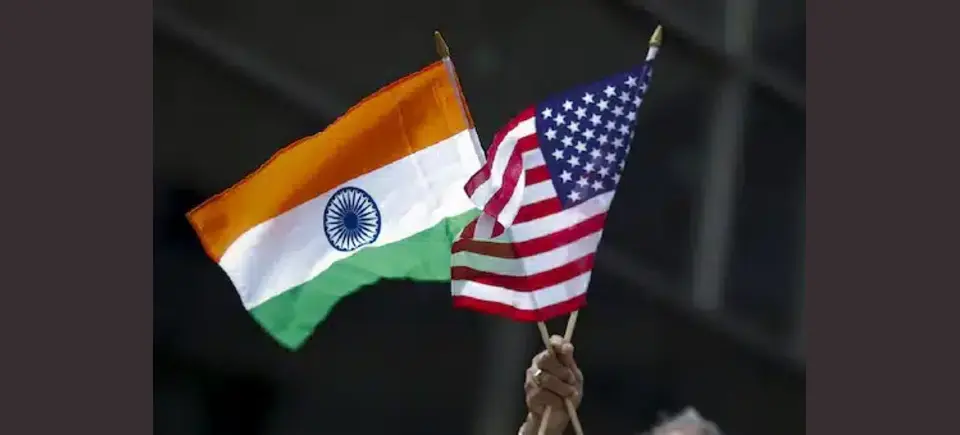


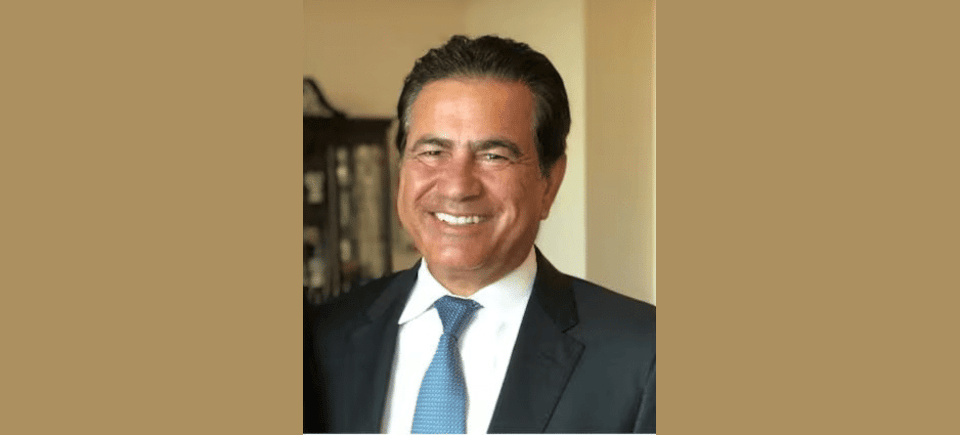


Washington, Jan 26 (PTI) India’s Ambassador to the US Taranjit Singh Sandhu has been one of the leading architects of the flourishing India-US relationship, the chief of a top India-centric American business and advocacy group has said.
In his remarks at a farewell reception hosted in honour of the outgoing Indian envoy here on Thursday, Mukesh Aghi, the president and CEO of US-India Strategic and Partnership Forum (USISPF), said Sandhu’s resume of achievements remains long and impressive.
“Ambassador Sandhu has been one of the leading architects of this relationship, which stands at its apex from the deep synergy in clean energy, education partnership, space collaboration, defence, and technology ties,” said at the farewell organised by the USISPF.
Sandhu, 61, retires from the foreign service after 35 years of diplomatic career this month.
However, when Ambassador Sandhu took the helm in Washington in February 2020, ominous times were about to upend the economies and suspend daily lives, Aghi said, adding that a cataclysmic pandemic meant new challenges even for a veteran diplomat.
Sandhu steered through COVID-19, helping Indian students return home, working through visa backlogs for the diaspora, and strengthening vaccine diplomacy between the two countries.
“A post-Covid-era saw the onset of Ambassador Sandhu helping lead the first in-principal Quad Summit in Washington, the restart of the Trade Policy Forum, and then the onset of the I2U2, IPEF, consolidating bilateral ties in multilateral settings,” he said.
The I2U2 is a grouping of Israel, India, the United Arab Emirates and the United States to deepen technological and private sector collaboration in the region and tackle transnational challenges in six focus areas: water, energy, transportation, space, health and food security.
The United States launched the Indo-Pacific Economic Framework for Prosperity (IPEF) along with countries like India, Australia, Indonesia, Japan, the Philippines, Singapore, Thailand, and Vietnam to advance resilience, sustainability, inclusiveness, economic growth, fairness, and competitiveness for participant economies.
“Today, the Indo-Pacific is a priority as Ambassador Sandhu has overseen new defence partnerships, from iCET to INDUS-X, to drone transfers to jet engine manufacturing deals, from semiconductors to supply chains, ushering in a new chapter in critical technology,” Aghi said.
The highlights of Sandhu’s tenure, he said, would be the historic state visit of Prime Minister Narendra Modi and President Joe Biden’s first visit to India as Commander-in-chief for a momentous G20 summit, and also organising former president Donald Trump’s maiden visit to the country.
However, one must remember that the relationship was not always smooth sailing, he noted.
“Sandhu’s perspicacity was evinced early on, during his first Washington stint as the First Secretary (Political) as he formed crucial relations on Capitol Hill, with both Democrat and Republican lawmakers, during a time of sanctions from the Clinton Administration,” he said.
“Today, the relationship is truly bipartisan, and the India Caucus and the Samosa Caucus, are in deep admiration of Ambassador Sandhu’s diplomatic efforts to steer the relationship from choppy waters then to the pristine seas now,” Aghi said.
His second stint in Washington was as second in command to S Jaishankar, as then DCM Sandhu and Ambassador Jaishankar, wrote the beginning chapters of Prime Minister Modi’s engagement with the United States, he noted.
“But more important than the dossiers, visits, and agreements, have been the intangible bonds of friendship that Ambassador Sandhu has forged with the diaspora. From young students to veteran business leaders, from entrepreneurs to titans, from cultural communities and caucuses, the diaspora across the US has at least one Ambassador Sandhu story,” he said.
“Historians will note that he changed the nature of the relationship, forged new connections, strengthened the strategic partnership, and above all remained affable and humble in challenging and celebratory times,” Aghi said.
Ashley Tellis, a top American expert on India, in his remarks, said that Sandhu has been an insidious contributor to this relationship because he understood right from the beginning how important this partnership is for the future of both countries.
“In his last tenure here in Washington, he had to deal with a very complex environment in terms of our bilateral relationship. But the fact that we have still managed to stay the course and move this relationship ever upward is a great tribute to you, Taranjit,” Tellis said.
Eminent Indian American defence expert Vikram Singh said Sandhu has been a steward of this relationship for an entire generation. “For those of us who have been involved, it’s been one of the best parts of our jobs trying to advance this relationship to have you as our partner. You are sought, kind of irreplaceable because you have this long span of history of the period of growth, dynamism, and transformation of the US-India partnership,” Singh said.
In his remarks, Sandhu recollected the words of Prime Minister Modi at an event hosted by USISPF in the city in which he said that the US-India partnership is not just for convenience, but for conviction, compassion and of shared commitment for a better future. “So our relationship touches the people. It is for development,” Sandhu said.
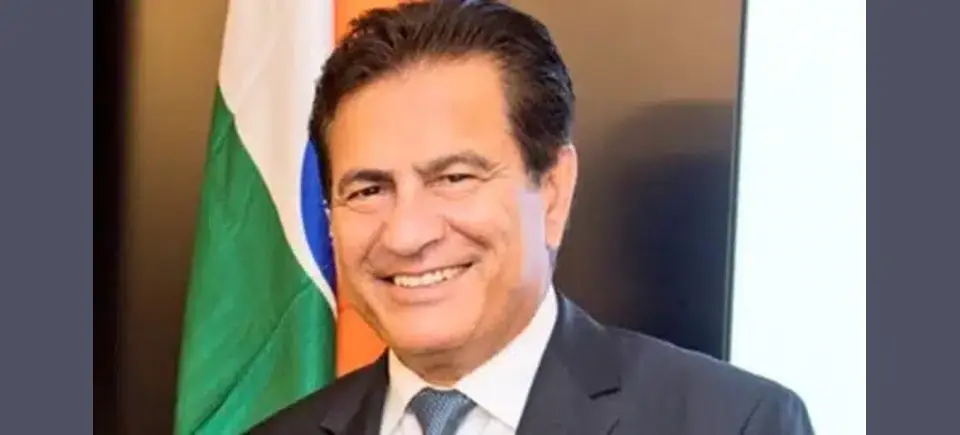
On the much anticipated electric vehicle (EV) major Tesla’s entry into India, Aghi, who was in India briefly to participate in the Vibrant Gujarat Summit recently, said that there is no discussion on the same as Tesla is awaiting India’s EV policy and that the company’s entry would involve a strong chip manufacturing ecosystem and not just a battery ecosystem. Edited excerpts:
India and the United States (US) have sandboxed the controversy around the alleged plot to assassinate Khalistan separatist Gurpatwant Singh Pannun as both countries are geopolitically aligned — with most US firms such as Apple Inc looking at India to de-risk their supply chain, Mukesh Aghi, President and Chief Executive Officer of the US-India Strategic Partnership Forum told Divya A and Ravi Dutta Mishra.
On the much anticipated electric vehicle (EV) major Tesla’s entry into India, Aghi, who was in India briefly to participate in the Vibrant Gujarat Summit recently, said that there is no discussion on the same as Tesla is awaiting India’s EV policy and that the company’s entry would involve a strong chip manufacturing ecosystem and not just a battery ecosystem. Edited excerpts:
Click Here for More.
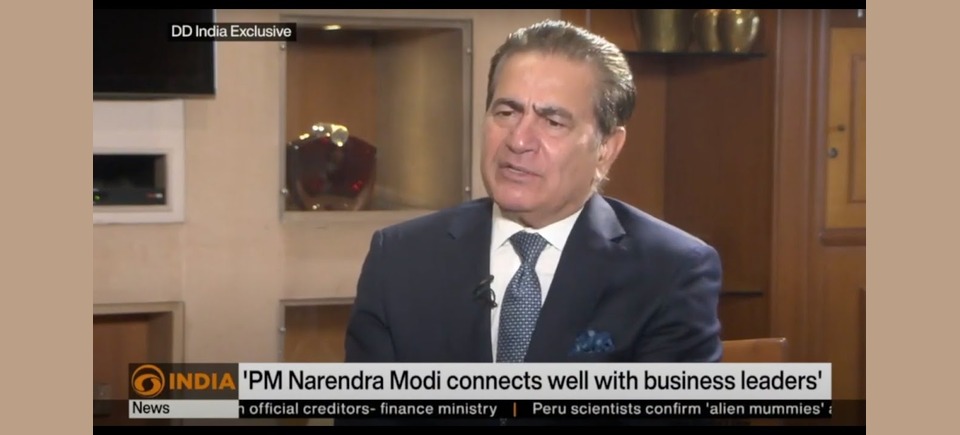
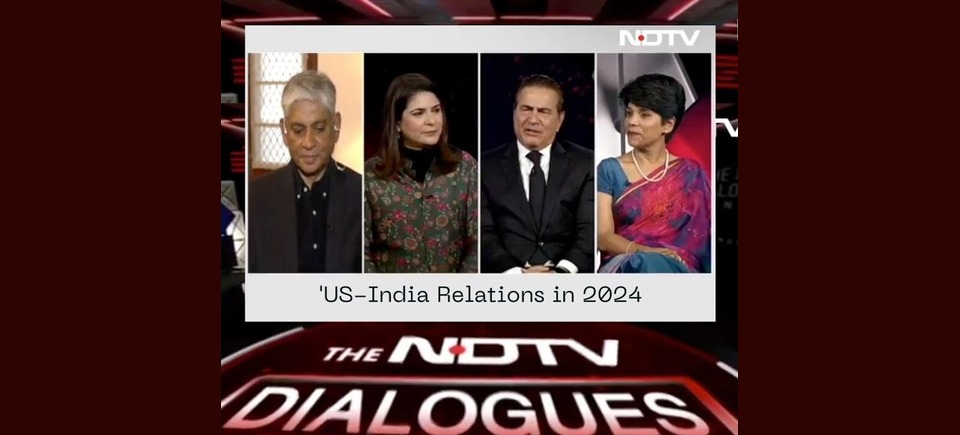

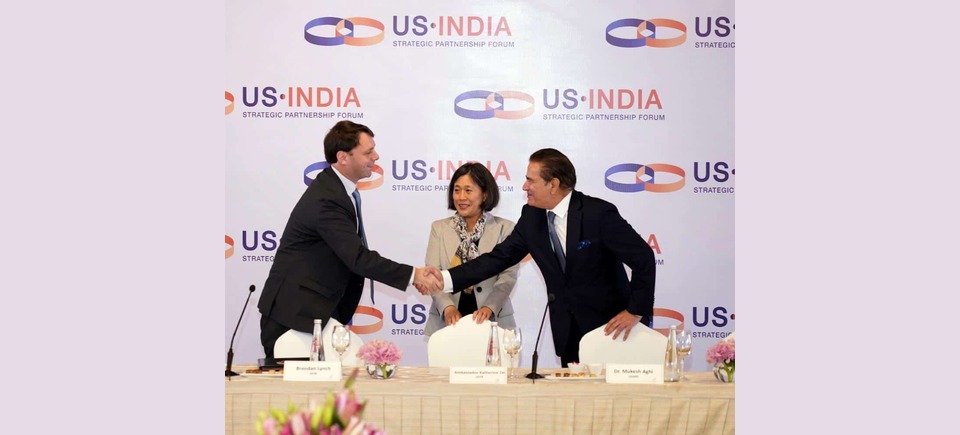
The U.S.-India Strategic Partnership Forum (USISPF) hosted a closed door roundtable discussion featuring Ambassador Katherine Tai, providing a platform for member companies specializing in collaborations with small and medium-sized enterprises (SMEs). Notable participants included public policy professionals from industry leaders such as Amazon, Meta, Coca-Cola, WinzO Games, JCI, Amway, T-Second, and Educational Testing Services (ETS), along with representatives from their affiliated SMEs.
These companies showcased programs tailored to cater to the unique needs of the SME community. Some participants presented initiatives directly supporting SMEs, while others emphasized their extensive networks and mentorship programs designed to empower SMEs within distinct industry ecosystems.
The roundtable, enriched by the presence of prominent women leaders and entrepreneurs such as Ms. Saumya Rathore (Co-Founder, WinzO Games), Ms. Hoofrish Krishnamurthy (Co- Founder, Gifts of Love), and Ms. Natasha Jog (Head of Public Policy, Instagram), underscored the evolving role of women in the Indian SME ecosystem. The discussion highlighted the significant contributions of women leaders in driving innovation, job creation, and fostering diversity, thereby shaping a more inclusive and dynamic business environment.
Throughout the dialogue with Ambassador Tai, the discussions delved into the evolving needs of SMEs, including startups, and the inherent challenges associated with entering new markets and participating in global trade. The collaborative discourse shed light on innovative approaches and programs implemented by member companies to support SMEs and startups.
The session also explored potential initiatives and policy changes related to U.S. government assistance to Micro, Small, and Medium Enterprises (MSMEs) in India, spearheaded by Ambassador Katherine Tai. The focus was on fostering collaboration between MSMEs and addressing key challenges in the dynamic landscape of global trade.

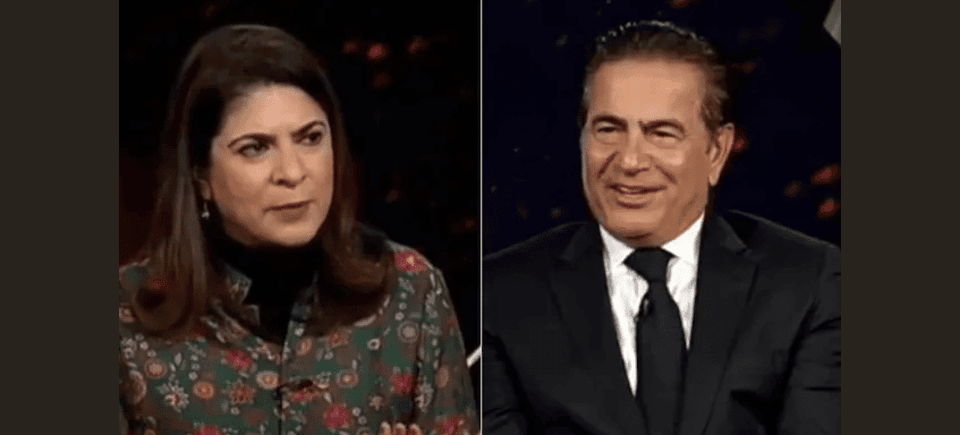
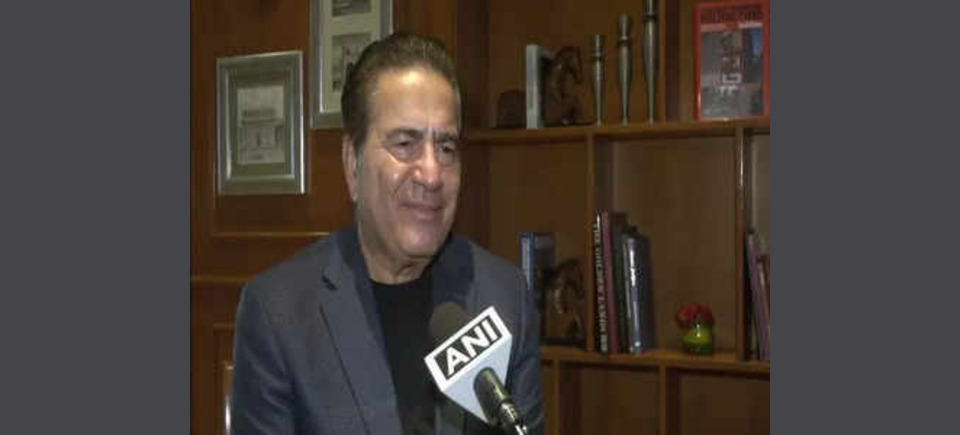
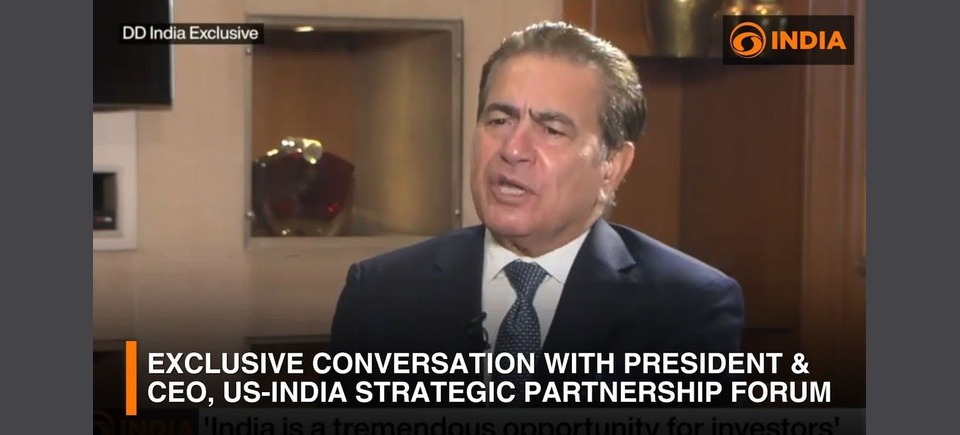
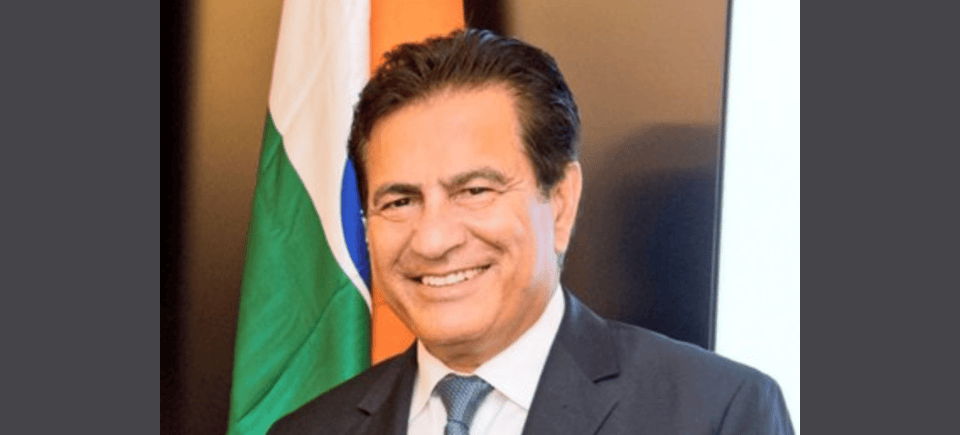

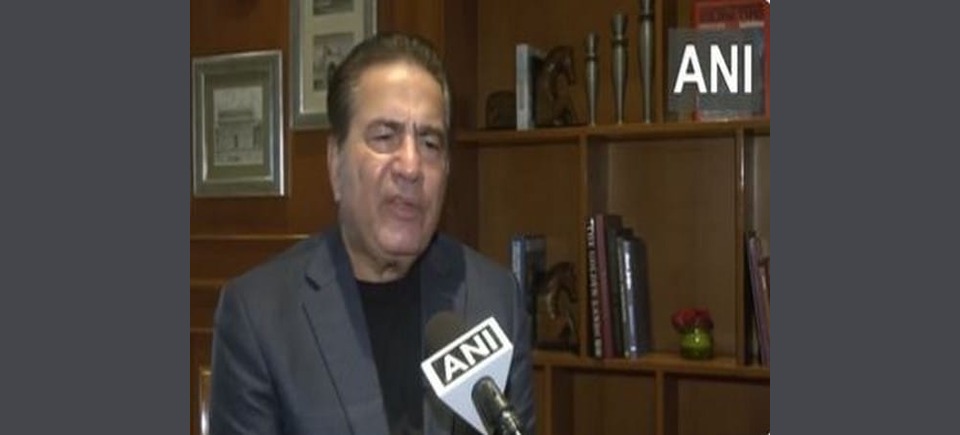
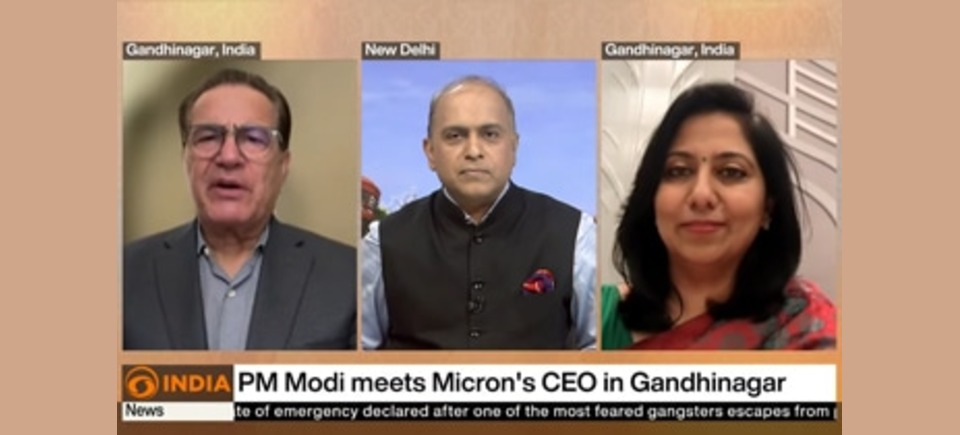
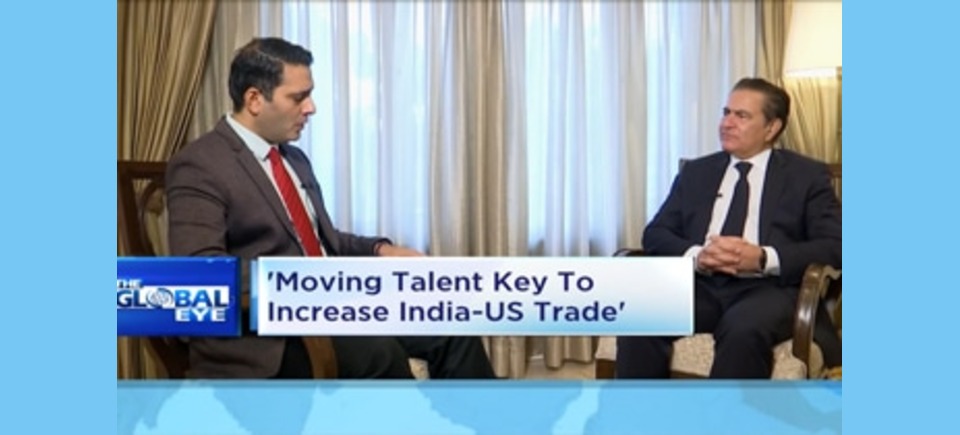
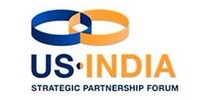
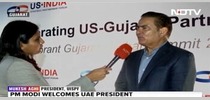

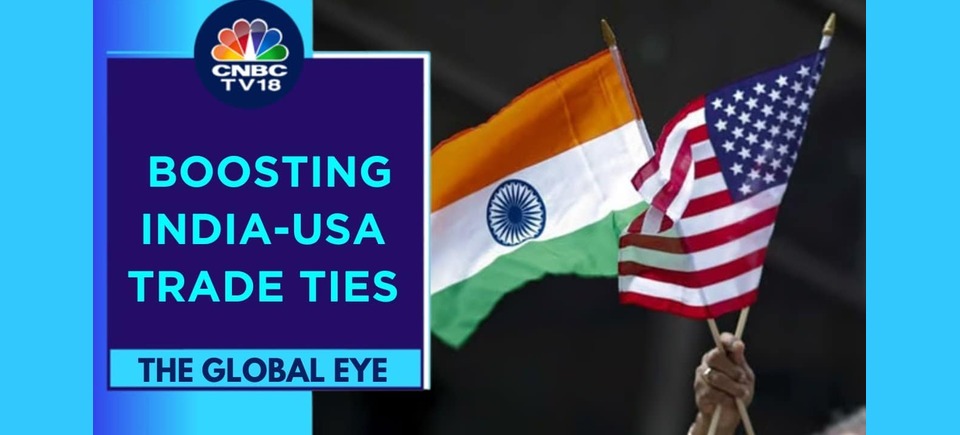

The US-India Strategic Partnership Forum (USISPF) on Tuesday announced its association as a partner organisation with the Vibrant Gujarat Global Summit 2024 from January 10th to 12th, 2024, in Gandhinagar.
“USISPF is honoured to lead a delegation comprising over 35 Fortune American companies, including Salesforce, Abbott, Blackstone, HSBC, UPS, Micron, Cisco, SHRM, and others. These companies also have plans to increase their investments in Gujarat. The delegation will be led by Lal Karsanbhai, President and CEO of Emerson, and co-led by USISPF President & CEO Dr. Mukesh Aghi,” the USIPF stated in an official release.
At the summit, the focus areas will include leveraging India’s burgeoning momentum in the hi-tech manufacturing space, particularly in avenues of semiconductors and chip manufacturing, as well as critical areas of the energy transition, chemicals and industrial manufacturing, aerospace, and defence.
“The companies are also eagerly exploring opportunities to build on the flagship Gujarat International Finance Tec-Cit (GIFT) City’s economic landscape,” the release added.
As part of the engagement at the summit, USISPF will host two insightful panel discussions on January 11 on the themes of the US-India Innovation Handshake and US-India Partnership.
In the US-India Innovation Handshake, the USISPF will focus on accelerating the Start-Up Ecosystem in partnership with iCreate, this panel will explore avenues to catalyse innovation and foster collaboration in the vibrant start-up ecosystem of both countries.
Additionally, under the US-India Partnership theme, the USISPF will explore Opportunities for Manufacturing and Global Value Chains. This panel will delve into the vast opportunities for collaboration in manufacturing and global value chains, showcasing the potential for growth and mutual benefit.
The president and CEO of USISPF, Mukesh Aghi, said, “It’s wonderful to be back in Gujarat and an honour for us at USISPF to lead a delegation of American companies to invest and contribute to the development of Gujarat, a state with a strong entrepreneurial spirit. Vibrant Gujarat Summit is a flagship program of the Government of Gujarat, and an investor summit whose success was personally spearheaded by Prime Minister Modi during his Chief Ministerial days and it’s commendable how far the summit has come in little over two decades.”
“The tenth edition accentuates the development and socio-economic growth in the western Indian state that epitomizes India’s entrepreneurial spirit and can-do attitude. Today, India is the fifth-largest economy and the fastest-growing major economy in the world, as investors remain optimistic about India’s growth at a time of global headwinds and de-risking supply chains,” he added.
The president and CEO of Emerson, Lal Karsanbhai, said, “I am honored to lead this distinguished delegation from the United States to the Vibrant Gujarat summit. Gujarat has emerged as a beacon of economic growth and innovation, and it is a privilege to witness first-hand the collaborative opportunities that exist between our nations. As we engage in discussions and explore partnerships, we look forward to fostering stronger ties that will not only benefit our businesses but also contribute to the global economic landscape.”
The participation of American companies will strengthen economic cooperation with the state of Gujarat and further deepen the US-India strategic and bilateral partnership.
The US-India Strategic Partnership Forum (USISPF), formed in 2017, is an independent non-profit, non-governmental, and non-partisan organization headquartered in Washington, D.C., with offices across both countries. Through its network of 400+ global companies, USISPF bridges the gap between business and government and fosters closer public-private sector partnerships across all facets of the economy and society in the United States and India.
The Vibrant Gujarat Global Summit was started in 2003 when he was the state’s chief minister.
The tenth edition of the Vibrant Gujarat Global Summit will be held from January 10 to 12. The theme for this year’s event is ‘Gateway to the Future’. The summit will celebrate ’20 Years of Vibrant Gujarat as the Summit of Success’.
The event, this year, will feature 34 partner countries and 16 partner organisations. The Ministry of Development of the North-Eastern Region will also utilise the Vibrant Gujarat platform to showcase investment opportunities in the Northeast.
The summit will feature various events including seminars and conferences on globally relevant topics such as Industry 4.0, Technology and Innovation, Sustainable Manufacturing, Green Hydrogen, Electric Mobility and Renewable Energy and Transition towards Sustainability.
In the Vibrant Gujarat Global Trade Show, which kicked off in the state capital on Tuesday, a range of products equipped with world-class, state-of-the-art technology are being showcased. E-mobility, startups, MSMEs, Blue Economy, Green Energy and Smart Infrastructure are some of the focus sectors of the Trade Show.
Earlier, on December 1, PM Modi met the UAE President on the sidelines of the COP-28 Summit and invited him to the Vibrant Gujarat Summit.
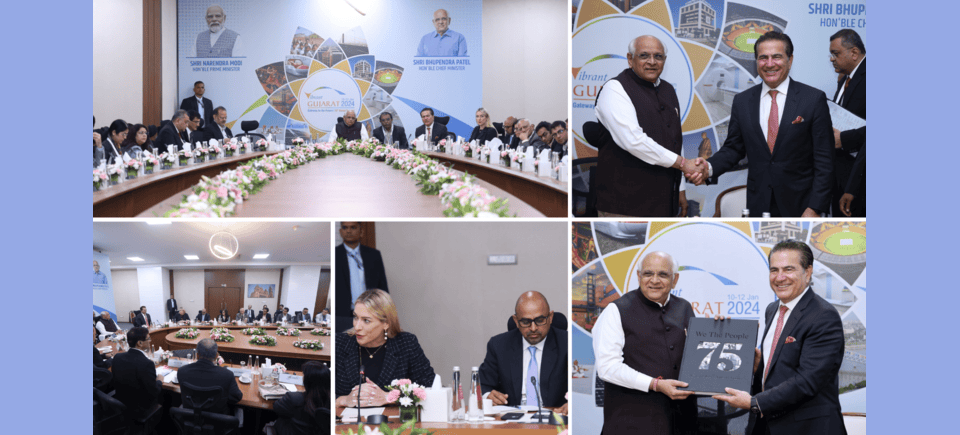
Washington, Thursday, January 11, 2024:
A high-level delegation from the US-India Strategic Partnership Forum (USISPF), led by Dr. Mukesh Aghi, President and CEO, participated in a constructive roundtable meeting with the Honorable Chief Minister of Gujarat, Shri Bhupendra Patel, on the sidelines of the Vibrant Gujarat Global Summit 2024.
Comprising of 35 Fortune American companies, the delegation delved into meaningful discussions regarding investment opportunities within the Gujarat International Finance Tec-City (GIFT) and International Financial Services Centre (GIFT IFSC). Additionally, they explored avenues for collaborative ventures with key stakeholders in Gujarat’s major industrial, business, IT, and FinTech sectors.
Chief Minister of Gujarat Shri Bhupendra Patel expressed enthusiasm about the ongoing collaboration between USISPF and Vibrant Gujarat, emphasizing the consistent efforts since 2017 in leading high-level industry delegations to the summit. Highlighting the significance of the US-India relationship, he noted on X (formerly Twitter) that the USA remains Gujarat’s major export destination. The Chief Minister mentioned that more than 120 American companies have established their base in Gujarat currently. He stated, “Had a fruitful meeting with the delegation of USISPF. Showcased the potential of GIFT IFSCA and the investment opportunities in this smart city.”
Dr. Mukesh Aghi, President & CEO of USISPF, expressed, “It’s an honor for USISPF to lead a delegation of American companies to invest and contribute to the development of Gujarat, a state that epitomizes India’s entrepreneurial spirit and can-do attitude. Our engagement at the Vibrant Gujarat Global Summit reaffirms our commitment to fostering economic ties and exploring avenues for mutual growth and development between the United States and Gujarat.”
The meeting highlights USISPF’s ongoing dedication to boosting US-Gujarat economic ties and unlocking avenues for shared prosperity.
About the US-India Strategic Partnership Forum (USISPF): The US-India Strategic Partnership Forum (USISPF) is committed to creating the most powerful partnership between the United States and India. As the only independent not-for-profit institution dedicated to strengthening the U.S.-India partnership in Washington, D.C., and in New Delhi, USISPF is the trusted partner for businesses, non-profit organizations, the diaspora, and the governments of India and the United States.
For immediate release.
For media inquiries, please contact:
Ankit Jain
Akshobh Giridharadas
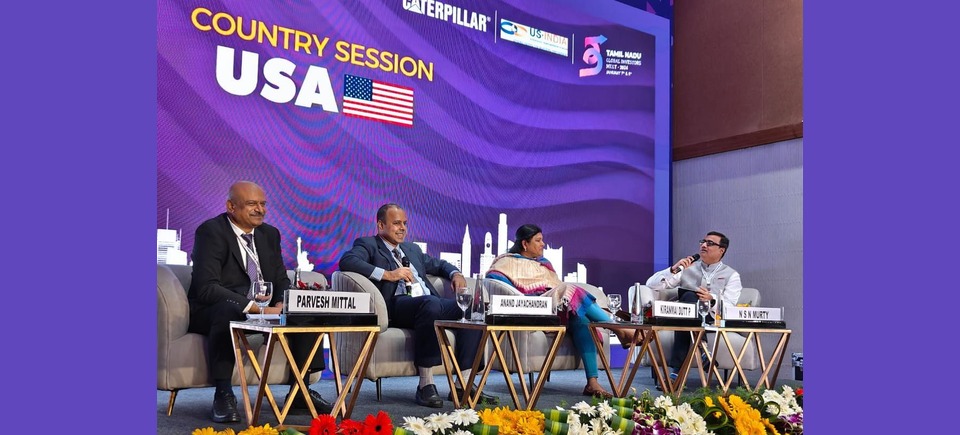
The distinguished panelists explored the convergence of technology, investigating how the synergy of technological advancements and collaborations can serve as pivotal drivers for fostering innovation and constructing vibrant ecosystems.
Panellists:
- Parvesh Mittal, Managing Director-India, Howden,
- Anand Jayachandran, Director – Government Engagement, Mastercard,
- Dr. Kiranmai Dutt Pendyala, Corporate Vice President – Human Resources, UPS India Technology Centre
Moderated by: NSN Murty, Partner & Leader, Government & Public Services, Deloitte
Special thanks to our panelists for their valuable insights that will shape the future of technology-driven economic growth.
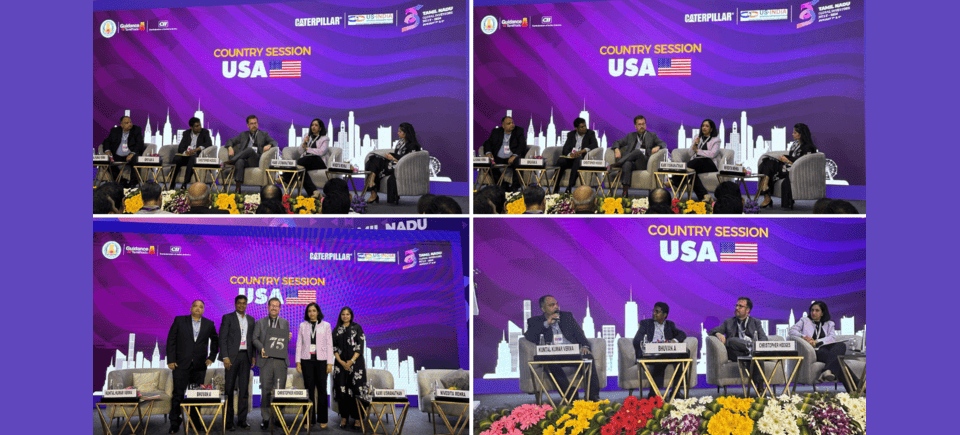
We had the honour of hosting the USA country session at the Tamil Nadu Global Investors Meet 2024. Our focus was on exploring investment opportunities in Tamil Nadu. Tamil Nadu’s business-friendly environment has attracted investments from several U.S. companies. During the session, we highlighted the importance of continued collaboration and partnerships between U.S. companies, research institutions, and their counterparts in Tamil Nadu. This collaborative effort aims to significantly contribute to the growth of India’s economy and further strengthen the bilateral relationship.
Panellists:
- Christopher Hodges, U.S. Consul General, Chennai
- Bhuvan Anandakrishnan, Vice-President, Caterpillar
- Kuntal Kumar Verma, Chief Manufacturing Officer, First Solar
- Kami Viswanathan, President – Middle East, Indian Subcontinentand Africa, FedEx
Moderator:
Nivedita Mehra, Managing Director, US-India Strategic Partnership
Forum (USISPF)
Thanks to our members and audience for joining the session!
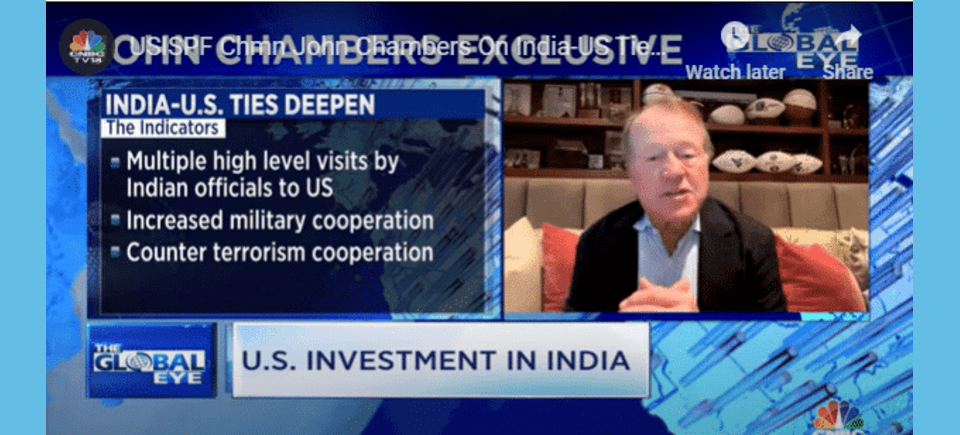
John Chambers, chairman of the US-India Strategic Partnership Forum (USISPF), on Friday (December 22) expressed unwavering optimism about the transformative potential of artificial intelligence (AI) in the year 2024.
In an exclusive interview with CNBC-TV18’s Parikshit Luthra, Chambers believes that AI will be the most groundbreaking technology in history, akin to the combined impact of the internet and cloud computing.
He emphasised that a close collaboration between India and the United States can lead this global shift, benefiting businesses and citizens alike and setting a model for the rest of the world.
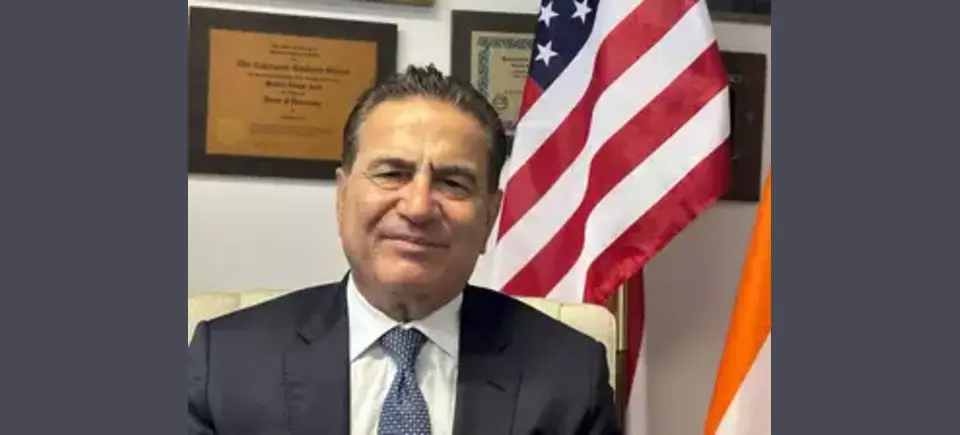
The relationship between India and the US has moved in a positive direction ranging from trade to defence and the two nations have shown a sense of deep understating of each other’s differences, the head of a top India-centric business and strategic group has said. Mukesh Aghi, CEO of the US-India Strategic and Partnership Forum (USISPF) said that there is more alignment between the two countries when it is looked at from the geopolitical QUAD perspective.
“I think in every aspect we (India-US relationship) have moved in a positive direction. You look at trade, which has gone up. You look at the military exercises, we’re doing more and more of those. We also have signed a lot of agreements with the US, especially in defence and space. We have agreed to repair the ships in our ports,” Aghi said on Wednesday.
“When you look at it from the geopolitical QUAD perspective, there’s more alignment between the two countries,” Aghi told PTI in an interview.
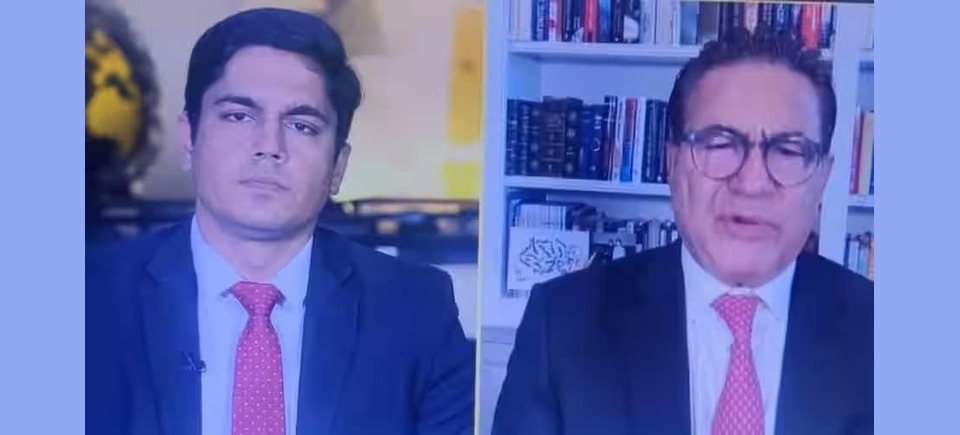
Mukesh Aghi, President & CEO of the US-India Strategic Partnership Forum (USISPF), has underscored the flourishing ties between the United States and India, shedding light on “bullish” sentiments of US investors on India. Speaking to our diplomatic correspondent Sidhant Sibal, Aghi stated, ” relationship has gone in a very positive direction, in a win-win fashion for both countries. you have to understand that the relationship is deep, much broader, and much more strategic between India and the United States”.
Highlighting the changing dynamics of global supply chains, Aghi noted, “US companies are looking at de-risking supply chain from China and India becomes a primary source from their perspective.” Highlighting the significant participation of US companies in Vibrant Gujarat in January, Aghi projected a continued growth in investments, highlighting, “You have US companies creating almost three and a half million jobs in India which are High Tech, High End paying jobs.”
He also spoke on President Biden not being able to attend India’s Republic Day, the Nikhil Gupta case etc.
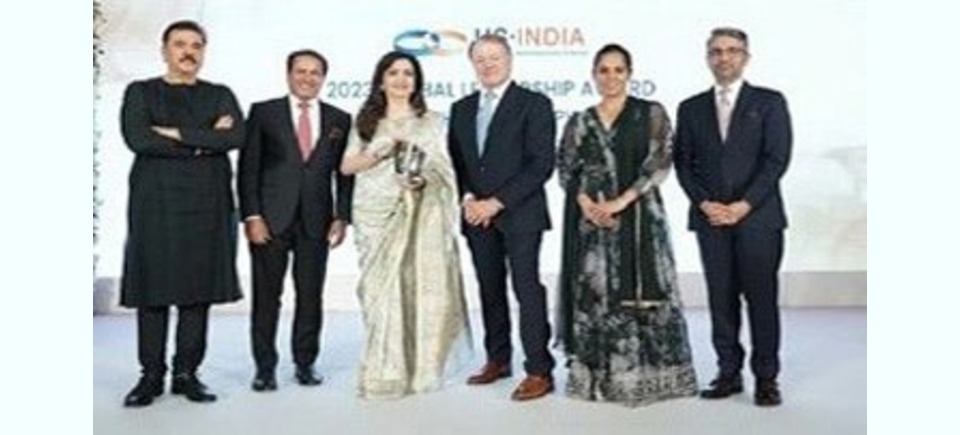
Nita Ambani receives Global Leadership Award from US-India Strategic Partnership Forum
The US-India Strategic Partnership Forum (USISPF) on Sunday (October 29) awarded Nita Ambani, Founder and Chairperson of Reliance Foundation, with the 2023 Global Leadership Award for Philanthropy and Corporate Social Responsibility.
Sharing the same, USISPF wrote on X (formerly known as Twitter), “USISPF honours Ms Nita Ambani, Founder and Chairperson of @ril_foundation with the Leadership Award for Philanthropy and Corporate Social Responsibility 2023. Ms. Ambani has been at the forefront of women’s empowerment, children’s education, promoting Indian arts and sports.”
In her award acceptance speech on stage, Nita Ambani said, “Today, I accept this award with humility and gratitude on behalf of my entire team. I represent the beating heart of Reliance, our beacon of hope and empowerment – Reliance Foundation, through which we have touched the lives of over 71 million people. At Reliance, doing good and giving back has always been a way of life. Long before CSR became a norm, Reliance has been fulfilling our CMR, our Corporate Moral Responsibility. It has now transformed into our philosophy of WE CARE. We care for the planet. We care for humanity. And we care for our nation.”
Applauding USISPF for their work, she added, “I also take this opportunity to convey my deep appreciation to USISPF and its leadership for being a strong bridge in deepening the natural bonds between India and the US. In just over six years, the Forum has strengthened people-to-people and business-to-business ties between India and US.”
Dr Mukesh Aghi, USISPF President and CEO, congratulated Ambani on her achievement and said, “We are delighted to award Nita M. Ambani for her tireless efforts to enrich the lives of many Indians. Nita M. Ambani is someone who believes that the work is never done and that there is so much more left to accomplish.”
Today, Reliance Foundation also tweeted regarding the same on X and wrote, “We are honoured to announce that our Founder & Chairperson, Mrs. Nita M. Ambani, has been awarded the prestigious 2023 Global Leadership Award for Philanthropy and Corporate Social Responsibility by the US-India Strategic Partnership Forum (USISPF).”
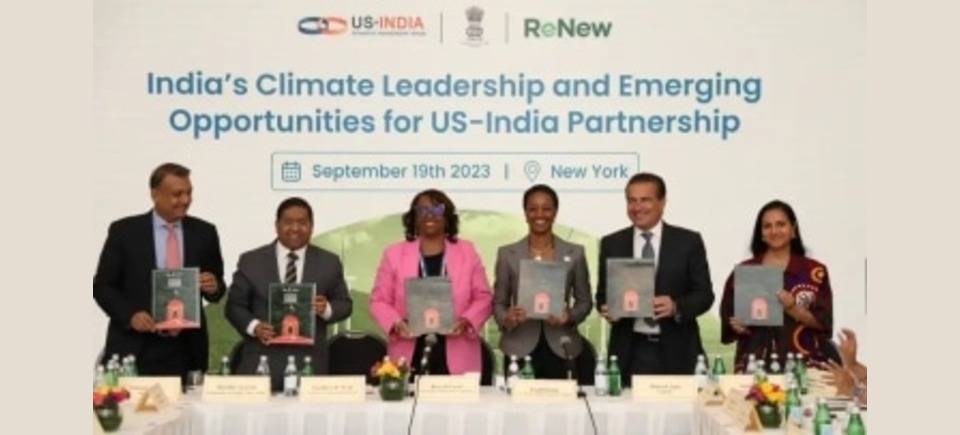
The recent G20 Summit in New Delhi emphasized climate action, energy security, climate finance, and the transition to a clean energy economy.
The US-India Strategic Partnership Forum (USISPF) and ReNew, working together with the Consulate General of India in New York, hosted a special meeting during Climate Week 2023 in New York City. They talked about the “US-India Climate Partnership and Emerging Opportunities.”
Key attendees included Geoffrey Pyatt from the US State Department, Ms Enoh Ebong from the US Trade and Development Agency (USTDA), Ms Anjali Kaur from the United States Agency for International Development (USAID), Reta Jo Lewis from the Export-Import Bank of the United States, Randhir Jaiswal (the Indian Consul General in New York), Dr. Mukesh Aghi (President and CEO of USISPF), Sumant Sinha (Founder, Chairman, and CEO of ReNew), Brad Crabtree (Assistant Secretary for the U.S. Department of Energy), and Ambassador Ruchira Kamboj (Permanent Representative of India to the United Nations).
This event brought together business leaders from the clean energy industry and government officials at the Indian Consulate in New York City. They discussed exciting opportunities for the US-India partnership in clean energy, research, and innovation.
During the event, they unveiled a report called “India’s global leadership on climate action.” This report launch was attended by Randhir Jaiswal, Mukesh Aghi, and Sumant Sinha, along with prominent government officials, industry leaders, and academics.
The United States and India are leading the global shift toward clean energy. They are cooperating in various areas such as energy supply chains, finance, business partnerships, and research and development.
One of the main goals discussed was helping countries and communities achieve their 2030 emissions reduction targets. These discussions build on the commitments made by President Joe Biden and Prime Minister Narendra Modi during his visit in June 2023. India is taking a strong stance on climate change action, with Prime Minister Modi mentioning India’s progress in solar energy and natural farming at the G20 Summit.
The recent G20 Summit in New Delhi emphasized climate action, energy security, climate finance, and the transition to a clean energy economy. Prime Minister Modi highlighted India’s role in addressing global crises and the challenges posed by geopolitical conflicts on energy prices.
Sumant Sinha, the Founder, Chairman, and CEO of ReNew, stressed the importance of global cooperation in tackling climate change. He praised India’s efforts in green hydrogen and carbon markets and the United States’ commitment to renewable energy and carbon capture research.
Randhir Jaiswal, India’s Consul General in New York, highlighted the significance of the US-India Strategic Clean Energy Partnership (SCEP) in achieving 2030 climate goals. He also noted India’s leadership in promoting green initiatives globally.
Mukesh Aghi, USISPF President and CEO, underlined the focus on hydrogen as a crucial energy source for global decarbonization. He mentioned the collaboration between Washington and New Delhi in supporting each other’s hydrogen missions and the positive impact on employment opportunities in India’s clean energy sector.
In essence, this event showcased the strong collaboration between the United States and India in addressing climate challenges and advancing clean energy solutions.
More information
https://www.financialexpress.com/business/defence-fueling-a-greener-future-us-india-partnership-for-clean-energy-and-climate-action-3251794/

At present, women make up for nearly half of India’s 95 crore registered voters but account for only 15% of lawmakers in Parliament and 10% in the state assemblies.
A bill to reserve one-third of the seats in the Lower House of India’s Parliament and state assemblies for women is a transformative piece of legislation and a push for gender parity and egalitarianism, the US-India Strategic Partnership Forum (USISPF) has said.
In a statement issued on Friday, USISPF president Mukesh Aghi also underlined the importance of having more women at the top of decision-making bodies in the world’s largest democracy.
The watershed bill received the Parliamentary nod on Thursday as Rajya Sabha voted unanimously in favour of it.
Prime Minister Narendra Modi thanked the MPs for supporting the legislation and said once more women assume leadership roles and join the nation-building process, they will become a guarantee of the country’s bright future.
Aghi said, “This is a major step by the Indian government and the honourable Prime Minister Shri Narendra Modi in achieving gender equality and increased representation”. India was one of the first countries in the world to have a woman prime minister and has had two women presidents, he noted.
“In the world’s largest democracy and now the most populous nation in the world, it behoves to have more women in the highest echelons of decision-making bodies. This bill is a transformative piece of legislation and is a push for gender parity and egalitarianism”, he added.
At present, women make up for nearly half of India’s 95 crore registered voters but account for only 15% of lawmakers in Parliament and 10% in the state assemblies.
More information
https://www.bqprime.com/nation/indias-womens-reservation-bill-is-a-transformative-piece-of-legislation-usispf
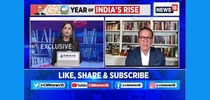
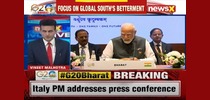
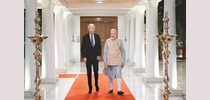
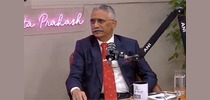
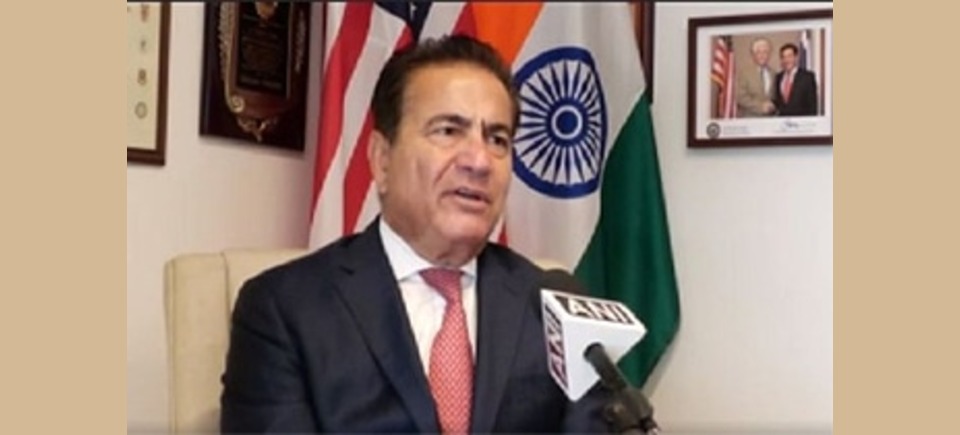
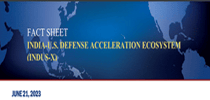
JUNE 21, 2023
Today, the U.S. Department of Defense (DoD) and the Indian Ministry of Defense (MoD) launched the IndiaU.S. Defense Acceleration Ecosystem (INDUS-X) to expand the strategic technology partnership and defense
industrial cooperation between our governments, businesses, and academic institutions. This initiative builds on a commitment by the U.S. and Indian National Security Advisors in January 2023 to launch an “Innovation
Bridge” to connect U.S. and Indian defense start-ups as part of the U.S.-India initiative on Critical and Emerging Technology (iCET). India’s Innovations for Defense Excellence (iDEX) and the Office of the Secretary of Defense (OSD) are leading INDUS-X activities for MoD and DoD, respectively.
With support from our governments, closer cooperation between our private sectors and research institutions will catalyze innovation within our defense industrial bases. Through INDUS-X, we will strengthen ties between our defense industrial ecosystems to make them more innovative, accessible, and resilient.
At the two-day catalyst event, hosted by the U.S.-India Business Council at the U.S. Chamber of Commerce, defense innovation stakeholders from across our governments, academic and research organizations, investors,
defense firms, technology incubators, industry associations, and other start-up enablers came together to develop ambitious initiatives to drive INDUS-X forward.
The below collaboration agenda outlines prospective actions for INDUS-X stakeholders to advance defense innovation between the United States and India. The agenda provides timelines and metrics to measure progress
in implementing collaboration initiatives envisioned under INDUS-X. INDUS-X stakeholders intend to advance this collaboration agenda through the following efforts:
Read More: FACT SHEET INDIA-U.S. DEFENSE ACCELERATION ECOSYSTEM (INDUS-X)
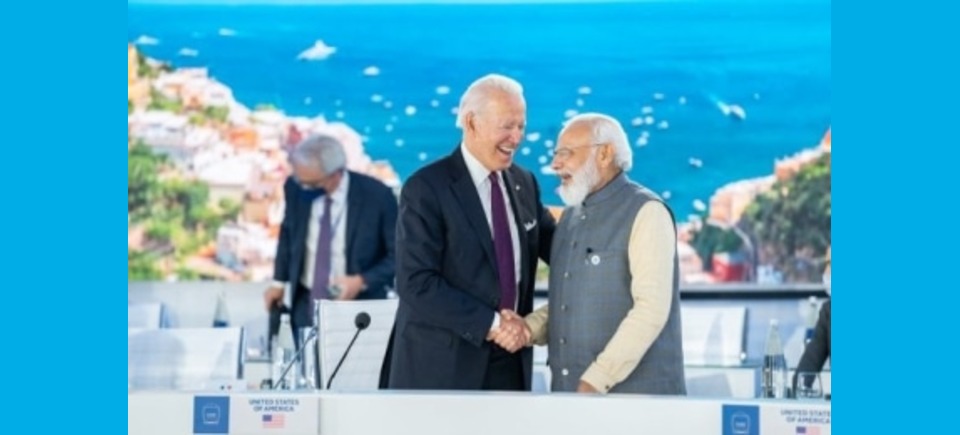
Exploring the trajectory of the relationship in four key sectors: defense, global order, business and technology, and climate change.
As Indian Prime Minister Narendra Modi prepares for his highly anticipated visit to Washington, the global stage is set for an important chapter in the India-U.S. relationship. As the United States deepens its Indo-Pacific engagement and India solidifies its regional prowess, the partnership between these democratic powerhouses has the potential to reshape the geopolitical chessboard. Against a backdrop of transformative changes, this pivotal moment prompts a question: What lies ahead for these two influential nations?
In this conversation-style piece, we bring together a group of accomplished experts, each illuminating a different facet of the complex tapestry that is India-U.S. relations. From shared concerns over global security to mutual interests in emerging technologies and sustainable development, our expert commentators dissect the intricate threads that bind these nations together – unraveling fresh prospects and critical challenges that await.
Elevating the Defense Partnership
–C. Raja Mohan
For nearly two decades and across many administrations, India and the United States have steadily expanded their bilateral strategic partnership. While much progress has been made in the last few years, Modi’s visit to Washington is expected to give the relationship “escape velocity,” in the words of a U.S. National Security Council official and Indo-Pacific coordinator. In boosting their bilateral cooperation amid a convergence of the two countries’ interests in Asia, the visit will focus on consolidating recent efforts to deepen ties in defense as well as the high-technology domain.
The last few weeks have seen intense consultations between the two sides and a series of high-profile visits to finalize the outcomes of the talks between Modi and U.S. President Joe Biden on June 22. U.S. Defense Secretary Lloyd Austin and National Security Advisor Jake Sullivan visited New Delhi earlier in June. India’s National Security Advisor Ajit Doval and Foreign Secretary Vinay Kwatra were in Washington in January and June of this year, respectively.
A framework for cooperation in advanced technologies, a road map for defense industrial cooperation, and an agreement for expanding strategic trade are now in place. Modi and Biden have been pressing their respective bureaucracies to overcome the many regulatory obstacles to more productive collaboration in these areas. Agreements to facilitate the manufacture of jet engines for Indian fighter aircraft by General Electric and to promote cooperation in critical and emerging technologies are expected to figure prominently among the deliverables from Modi’s state visit to Washington.
India, which could not access U.S. weapons during the Cold War, has bought $20 billion worth of arms over the last two decades. The armed forces in India and the United States engage in extensive bilateral military exercises and minilateral ones with the four partners in the Quad Forum – Australia, India, Japan, and the United States. The ambition is to look beyond arms purchases and facilitate the production of weapons in India through collaboration between defense firms in the two countries.
The incentive for the United States is helping India reduce its historical dependence on Russia for its military supplies. For New Delhi, it is about fulfilling Modi’s goal to turn India from the world’s largest importer of weapons into a major producer of weapons. Such collaboration will also help India bridge the massive gap in military capabilities with China with strong support from the United States. Both New Delhi and Washington have a strong interest in stabilizing the Asian balance of power and coping with the geopolitical churn triggered by China’s rise and Beijing’s assertiveness in Asia.
Navigating the Global Order
–Manjari Chatterjee Miller
The India-U.S. partnership has been transformed from a tense relationship into one of expanding cooperation across sectors. Although many, particularly in the United States, had hoped for a close partnership for years, few would have predicted the extent of the transformation in the relationship. India and the United States now collaborate on security challenges, defense, intelligence consultations, military exercises, health, disaster preparedness, emerging technologies, and even education. Both countries have concerns about China’s rise, contributing to a shared sense of urgency about the global order if China were to become the next superpower.
However, important challenges to the relationship remain. The United States worries about India’s commitment to the norms of the current global order and its perceived reluctance to rock the geopolitical boat. India’s reliance on Russian military imports and oil (Russia has displaced Iraq as India’s top oil supplier), and its reluctance to unambiguously condemn Russia in the Ukraine war, remain thorns. India’s position in the event of an escalation or even conflict in the Taiwan Strait is also ambiguous. The idea of mutual defense, a key plank of many of the United States’ bilateral partnerships, is unthinkable for the Indian government.
The state of Indian democracy and reports of the Indian government violating the civil liberties of minorities and journalists are another cause for U.S. concern. While the Biden administration is unlikely to make any public criticism – as made evident in Modi’s upcoming state visit – members of Congress may not have such inhibitions. Modi is set to address a joint meeting of Congress on June 22.
From India’s perspective, the Indian government was anxious, if not publicly critical, about the U.S. withdrawal from Afghanistan and what seemed to be a pivot away from important issues, such as Pakistan-sponsored cross-border terrorism. India also worries about the divisions in U.S. politics and what next year’s presidential election could portend for the United States’ performance on the world stage and its commitment to its partners. U.S. immigration policy also poses a problem. Legal pathways of immigration for Indian citizens, a highly skilled source of labor for the United States, have run into myriad issues, including absurdly long wait times for visas. The India-U.S. trade relationship is also narrowly focused and hampered by Indian protectionism.
Overall, India sees itself as having a large stake in the success of the India-U.S. relationship – a drastic change from its past attitude – and the United States sees India as one of its most valuable partners today. This trajectory is unlikely to change in the near future.
Elevating Business and Technology Horizons
–Mukesh Aghi
Modi’s upcoming visit to Washington holds historical significance, as it marks the first state visit by an Indian prime minister to the United States in over a decade. The India-U.S. strategic partnership, which I believe is the most defining relationship of the 21st century, encompasses a wide range of shared concerns and priorities. These include deepening trade and commercial ties, strengthening defense and technology relations, joint clean energy efforts, and collaboration on health care in the wake of the COVID-19 pandemic.
In addition to these priorities, there is a growing focus on rebuilding and restoring disrupted supply chains in the aftermath of the pandemic. Many CEOs are now adopting a “China plus one” strategy, seeking to diversify their supply chains. This presents an opportunity for New Delhi to bolster its manufacturing economy through initiatives such as Make in India and the Production Linked Incentives (PLI) schemes. Recent instances of successful India-U.S. commercial cooperation include Air India’s purchase of over 200 Boeing aircraft, which carries significant implications for the commercial partnership and the American manufacturing sector.
Furthermore, Apple’s decision to establish its first retail store in India not only enhances the country’s attractiveness to other tech companies but also showcases its capability to produce cutting-edge technology and strengthen its manufacturing potential. This move is a crucial indication that companies are diversifying their supply chains away from China. Given the geopolitical dynamics surrounding semiconductors, New Delhi can also signal its readiness to become a hub for chip manufacturing and case manufacturing.
Modi’s government has made commendable efforts to improve the business environment and simplify tax laws in India, addressing previous constraints on American investors. Initiatives like the Goods and Services Tax (GST) and labor law reforms have helped foster a more investor-friendly climate. Earlier this year, the Washington-New Delhi strategic partnership was strengthened by the Initiative on Critical and Emerging Technology (iCET), which encompasses areas such as quantum computing, artificial intelligence, defense, innovation, space, advanced telecom, and semiconductors. An anticipated announcement during the visit includes a potential jet engine deal that would not only foster commercial success but also boost India’s defense capabilities.
The India-U.S. partnership has the potential to transform the lives of citizens and tackle critical challenges in climate, supply chains, healthcare, and technology in the 21st century. Modi’s upcoming state visit underscores the significance of this partnership.
Advancing Climate Action and Sustainability
–Farwa Aamer and Meera Gopal
In recent times, the imperative to combat climate change and foster sustainable development has thrust climate and energy issues to the forefront of the India-U.S. bilateral relationship. The convergence of interests, shared commitment to climate action, and complementarity in expertise and resources provide a solid foundation for robust collaboration between the two countries.
Initiatives like the India-U.S. Partnership to Advance Clean Energy (PACE), launched in 2009, exemplify successful cooperation in research, technology transfer, and project implementation, fostering the growth of renewable energy deployment in India. Moreover, the 2021 Leaders Summit on Climate witnessed the launch of the India-U.S. Climate and Clean Energy Agenda 2030 Partnership, reaffirming the two nations’ dedication to the Paris Agreement and their long-standing willingness to work jointly to achieve their ambitious climate and clean energy targets. In the lead-up to the state visit, the promise of India-U.S. joint action has been publicly reiterated by both countries at various levels of engagements.
This partnership presents multiple opportunities, including reducing methane emissions, advancing the green hydrogen agenda, supporting India’s planned emissions trading system, and collaborating on decarbonization solutions as needed. There are ample prospects to jointly advance capacity for strengthening climate resilience, including increased research and development, data availability, and tools to help national, state, and local officials in climate adaptation planning.
Modi is likely to maintain the focus on promoting the Mission Lifestyle for Environment (LiFE) and securing financing for consumption reduction policies. Additionally, as the current president of the G-20, India has a unique opportunity to highlight its crucial role as the “voice” of the Global South for the West.
However, challenges persist, such as the necessity for international financing to achieve net-zero targets as well as the concerns surrounding an agreement on a Just Energy Transition Partnership (JETP) deal. The United States can assist by facilitating access to funds for India’s ambitious goals and working toward an equitable national energy transition plan that considers the socioeconomic impact of the coal phase-out.
Modi’s state visit has the potential to strengthen joint climate strategies ahead of COP28 – which includes the first-ever Global Stocktake under the United Nations Framework Convention on Climate Change – in December 2023. By deepening the partnership on clean energy and climate action, both nations can achieve their global climate goals while fostering economic growth, job creation, and energy security. This collaboration will serve as a powerful model for innovation and sustainable development, setting the stage for the wider Global South to follow suit.
More information
https://thediplomat.com/2023/06/modi-comes-to-washington-prospects-and-challenges-for-india-us-relations/
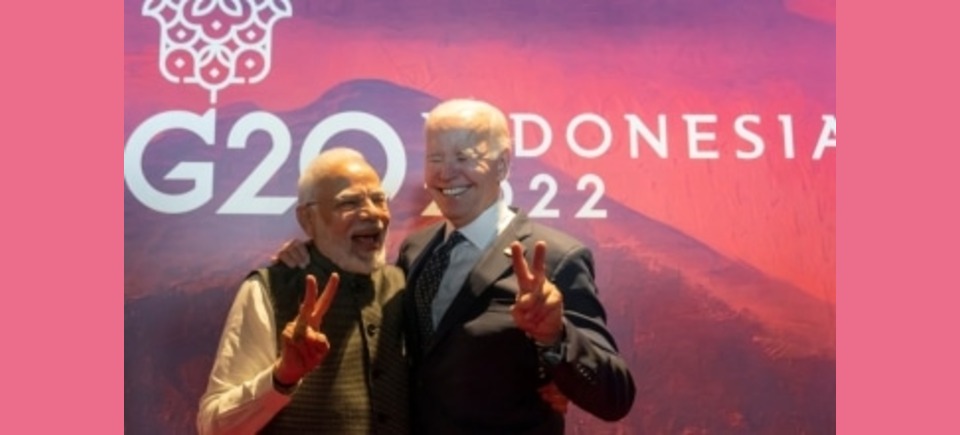
Defense deals and tech ties underpin Modi’s visit to Washington.
“My dream is that in 2020, the two closest nations in the world will be India and the United States,” then-Sen. Joe Biden said on a visit to New Delhi in 2006. They may not be quite there yet, but Biden is doing everything to ensure they end up much closer—especially economically and militarily—after Indian Prime Minister Narendra Modi visits next week.
Washington is rolling out the red carpet for Modi, hosting him for a state dinner, the Biden administration’s third such visit after welcoming French President Emmanuel Macron and South Korean President Yoon Suk-yeol within the past year. Modi will also address a joint session of Congress, his second time doing so as Indian prime minister.
It’s not just pomp and symbolism, however. The United States wants to bring India deeper into its manufacturing and defense orbit, with the added benefit of helping wean New Delhi’s military off Russia and U.S. supply chains off China. Although both sides have been tight-lipped on planned announcements, a number of expected agreements on semiconductor chips and fighter jet engines have been in the works for months, bolstered by visits to New Delhi by Secretary of Defense Lloyd Austin and National Security Advisor Jake Sullivan in the weeks leading up to Modi’s trip. This week, the two sides reportedly sealed a deal for India to buy more than two dozen American drones.
“While I will not spill the beans, I can tell you that the ceremonial and substantive parts of the visit will fully complement each other and will be unparalleled,” Taranjit Singh Sandhu, India’s ambassador to Washington, said at a recent event.
The India-U.S. relationship hasn’t always been smooth sailing, and potential frictions remain, but the two countries have increasingly zeroed in on an arena where they can achieve symbiosis. “If you ask me what I would bet on the most, what is that one force multiplier for this relationship, it is tech,” Sandhu said. “It is the master key to unlock the real potential in the relationship.”
Officials from both sides have spent months laying the groundwork—and acronyms. An initiative on critical and emerging technology (iCET), launched in late January by Sullivan and his Indian counterpart, Ajit Doval, commits to cooperation in areas such as artificial intelligence, quantum computing, space exploration, semiconductors, and defense technology. There has been more movement on the last two in particular: U.S. Secretary of Commerce Gina Raimondo and Indian Commerce Minister Piyush Goyal inked a bilateral semiconductor supply chain partnership in New Delhi in March, while Austin’s visit to New Delhi earlier this month yielded INDUS-X, or the India-U.S. Defense Acceleration Ecosystem, described by the Pentagon as a “new initiative to advance cutting-edge technology cooperation” between the two militaries.
The most significant developments are likely to take place on the defense front, particularly if recent discussions on jointly producing jet engines, long-range artillery, and military vehicles come to fruition next week, product of a yearslong rapprochement on sharing defense technology with India. “This is not just manufacturing in India, this is genuine tech transfer,” said Rudra Chaudhuri, director of New Delhi-based think tank Carnegie India. “That’s a big deal.”
In some ways, it is an opportunity for a marriage of convenience. About half of India’s military equipment is Russian-made, and although New Delhi has spent years trying to diversify that supply, Russia’s protracted war in Ukraine has increased the urgency of finding new bedfellows. Washington sees an opening.
“The one relationship which the U.S. has traditionally been wary of in closer defense ties with India has been the India-Russia partnership,” said Aparna Pande, director of the India Initiative at the Hudson Institute. “This is one chance where if India can be weaned away because of a lack of supply parts, problematic equipment, or Russia getting closer to China, [you can] maybe convince India to purchase more from the United States and U.S. partners and allies.”
China is another major source of mutual concern pushing Washington and New Delhi closer together. India’s relationship with China deteriorated earlier and far more dramatically, with military clashes on their shared border leading to an Indian purge of Chinese technology (including, notably, a TikTok ban) nearly three years ago. Chinese naval expansion into the Indian Ocean has also spooked India and reinforced the importance of the so-called Quad group of countries. The United States and its allies, meanwhile, are urgently trying to reorient and “friendshore” global tech supply chains to reduce dependence on China, which has spent years establishing itself as the world’s factory floor.
India presents a ready replacement in many ways, much of it stemming from its new status as the world’s most populous country. That means a large (and youthful) labor force, millions of whom are skilled engineers, and relatively low manufacturing costs that the Modi government is further bolstering with tax incentives under its signature “Make in India” program. Like China, India’s sheer size also presents a huge potential domestic market for U.S. companies, an advantage over other alternatives such as Vietnam and Mexico. If for decades dollars and cents determined the landscape of global technology production, geopolitics have become supreme.
More information
https://foreignpolicy.com/2023/06/15/india-united-states-tech-ties-biden-modi-visit-washington/

New York, Jun 13 (PTI) India and the US are realising that an equitable bilateral partnership is a win-win for both countries and their people, USISPF President and CEO Mukesh Aghi said. He also underlined that India is providing de-risking for US companies from China to manufacture in the country and is a growing market for American goods.
Ahead of Prime Minister Narendra Modi’s State Visit to the US next week, the US-India Strategic Partnership Forum (USISPF) chief recalled that during his earlier address to a joint session of the Congress in 2016, the Indian leader had stressed for the two countries to overcome the hesitation of history.
“What we are seeing on both sides, we are basically burying the past — the 1998 nuclear sanction and other aspects. Both countries are realising that an equitable partnership is a win-win both for the people of India and the people of United States,” Aghi told PTI in an exclusive interview.
More information
https://www.ptinews.com/news/business/india-us-realising-equitable-bilateral-partnership-a-win-win-for-both-usispf-chief/588087.html
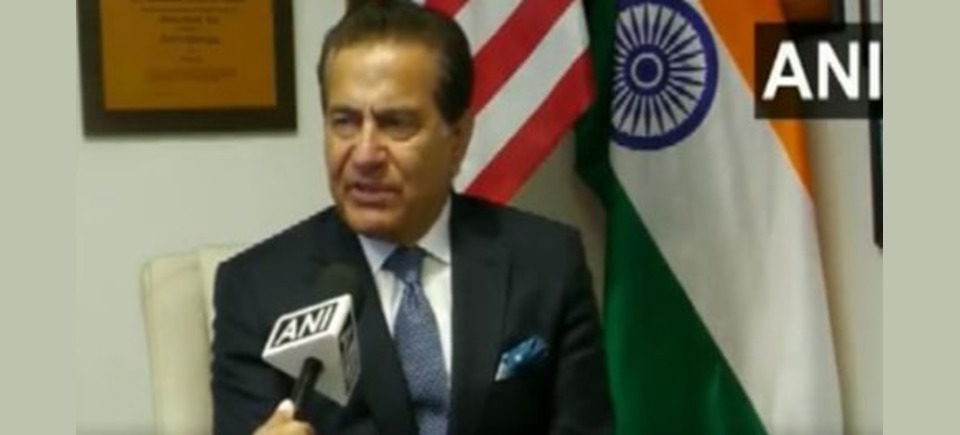
Ahead of Prime Minister Narendra Modi’s state visit to the USA, President & CEO of the US-India Strategic Partnership Forum Mukesh Aghi talked about how India has to deal with China and how technology can help India to have an upper hand in the diplomatic relationship.
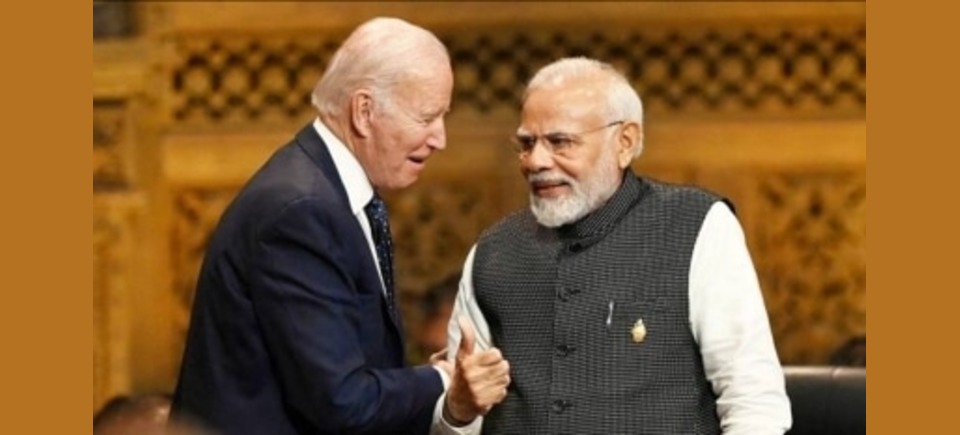
India and the US are realizing that an equitable bilateral partnership is a win-win for both countries and their people, the US-India Strategic Partnership Forum (USISPF) President and CEO Mukesh Aghi said.
He also underlined that India is providing de-risking for US companies from China to manufacture in the country and is a growing market for American goods.
Ahead of Prime Minister Narendra Modi’s State Visit to the US next week, the US-India Strategic Partnership Forum (USISPF) chief recalled that during his earlier address to a joint session of the Congress in 2016, the Indian leader had stressed for the two countries to overcome the hesitation of history.
“What we are seeing on both sides, we are basically burying the past — the 1998 nuclear sanction and other aspects. Both countries are realising that an equitable partnership is a win-win both for the people of India and the people of the United States,” Aghi told PTI in an exclusive interview.
“But more than that, these are two democracies, which look at the international order and (are) trying to maintain that order itself. From a geopolitical perspective, economic perspective and from a technology perspective and people-to-people perspective, it is a partnership which is win-win for both sides,” he said.
Aghi described the current times as “exciting” for Indo-US relations, saying after 75 years of independence, India is on a development path.
“It is a win-win partnership where US companies are also one of the biggest investors in India,” he said, adding that American companies are now setting up research and development centres and moving into innovation centres in India
“What we’re seeing is the partnership is elevating. There is more and more trust happening. Yes, there’s maturity, we will have a disagreement,” he said, citing the example of India’s oil purchases from Russia.
“But both (sides) have accepted those issues and moved on looking at the bigger challenges and opportunities. The relationship is growing to bigger heights and you’ll see more success coming in as we move forward,” Aghi added.
Modi will be welcomed as a State Guest in Washington DC on June 22 by President Joe Biden and First Lady Jill Biden. He will address a joint session of the US Congress the same day — the first Indian Prime Minister to be accorded the honour twice. Modi first addressed a joint meeting of the US Congress in June 2016.
The President and the First Lady will host Modi at a State Dinner on June 22.
Modi will address corporate leaders at a special event hosted by USISPF on June 23 at the Kennedy Center in Washington DC that is expected to be attended by over 1,200 business leaders and the focus will be on India’s importance from an investment perspective, he said.
On the challenges and opportunities for the two countries, Aghi said, on the geopolitical aspect, India’s neighbour China “has taken a very aggressive and assertive posture towards India. It does not treat India as an equal partner”.
“India needs at least 20 years of economic growth moving forward and that means it needs (an) alignment to deal with the aggressive neighbour itself and that’s where the US comes in.
“From a US perspective, India’s one country which has stood up to China, eyeball-to-eyeball on its border, and has not blinked. It sends a strong message that India can stand up to Chinese aggression,” he said.
“What India is providing is a de-risking for US companies from China to manufacture in India and at the same time a growing market, which is going to procure American goods,” he said.
He noted that USISPF operates on two broad principles that the economic prosperity of India is good for the US and US companies. Secondly, a militarily-strong India is good for regional stability.
“That’s where Make in India becomes a very critical role in the defence sector and that’s where you’ll see the deliverables coming in from the US side,” Aghi added.
He referred to the expected announcement of the GE engine deal, India acquiring drones from the US and other aspects of defence procurement during Modi’s visit.
“Where the US used to be reluctant to provide some critical technologies to India, now they’re willing to transfer the technology, not just only sell, to India. To me that shows that the trust factor, the dependence factor has moved dramatically,” he said.
Terming trade as an opportunity between the two nations, Aghi stressed that India and the US should start thinking toward a goal of having a trillion-dollar trade between the two economies and added that it is “absolutely” doable.
“That’s where we both have to keep on working and you don’t need a trade deal. I think if you just open up the market and make the ease of doing business easier, you will see things moving much, much faster,” he said.
He noted that the challenge that the countries need to work on is immigration.
“You have 1.2 million Indians waiting for the green card. We need to find a solution so (that) they become local residents, pay local taxes and become part of the society,” Aghi said.
More information
https://www.financialexpress.com/business/defence-expecting-announcement-of-the-ge-engine-deal-during-pm-modis-visit-says-usispf-chief-3123870/
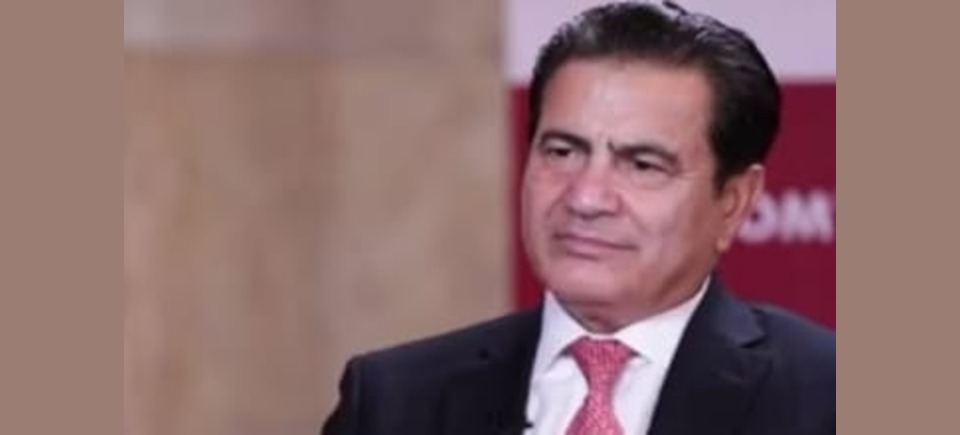
Mukesh Aghi says India is providing de-risking for US companies from China to manufacture in the country and is a growing market for American goods
India and the US are realising that an equitable bilateral partnership is a win-win for both countries and their people, US-India Strategic Partnership Forum (USISPF) President and CEO Mukesh Aghi said. He also underlined that India is providing de-risking for US companies from China to manufacture in the country and is a growing market for American goods.
Prior to Prime Minister Modi’s State Visit to the United States next week, the USISPF chief recalled that the Indian leader had stressed the need for the two countries to overcome the hesitancy of history during his earlier address to a joint session of Congress in 2016.
“What we are seeing on both sides, we are basically burying the past — the 1998 nuclear sanction and other aspects. Both countries are realising that an equitable partnership is a win-win both for the people of India and the people of the United States,” Aghi told PTI in an exclusive interview.
“But more than that, these are two democracies, which look at the international order and (are) trying to maintain that order itself. From a geopolitical perspective, economic perspective and from a technology perspective and people-to-people perspective, it is a partnership which is win-win for both sides,” he said.
Aghi described the current times as “exciting” for Indo-US relations, saying after 75 years of independence, India is on a development path.
“It is a win-win partnership where US companies are also one of the biggest investors in India,” he said, adding that American companies are now setting up research and development centres and moving into innovation centres in India.
“What we’re seeing is the partnership is elevating. There is more and more trust happening. Yes, there’s maturity, we will have disagreement,” he said, citing the example of India’s oil purchases from Russia.
“But both (sides) have accepted those issues and moved on looking at the bigger challenges and opportunities. The relationship is growing to bigger heights, and you’ll see more success coming in as we move forward,” Aghi added.
President Joe Biden and First Lady Jill Biden will welcome Modi as a State Guest in Washington DC on June 22. On the same day, he will address the joint session of the US Congress, becoming the first Indian prime minister to receive the honour twice. Modi first addressed a joint meeting of the US Congress in June 2016.
On June 23, Modi will address corporate leaders at USISPF’s annual conference at the Kennedy Center in Washington DC. Over 1,200 business leaders are expected to attend, and the discussion will focus on India’s investment potential.
On the challenges and opportunities for the two countries, Aghi said, on the geopolitical aspect, India’s neighbour China “has taken a very aggressive and assertive posture towards India. It does not treat India as an equal partner”.
“India needs at least 20 years of economic growth moving forward and that means it needs (an) alignment to deal with the aggressive neighbour itself and that’s where the US comes in.
“From a US perspective, India’s one country which has stood up to China, eyeball-to-eyeball on its border, and has not blinked. It sends a strong message that India can stand up to Chinese aggression,” he said.
India’s economy, which has a population of 1.4 billion and is growing at about 7 percent, is worth more than USD 3.75 trillion to US companies.
Aghi cited the example of Apple, saying that three years ago it did not manufacture anything in India. Next year, Apple is going to manufacture 20 million iPhone 14s in India and move into the iPad and Macbook space as well.
“What India is providing is a de-risking for US companies from China to manufacture in India and at the same time a growing market, which is going to procure American goods,” he said.
He noted that USISPF operates on two broad principles that economic prosperity of India is good for the US and US companies. Secondly, a militarily-strong India is good for regional stability.
“So, that means India has to become self-sufficient”, especially after the “debacle” of what is happening between Russia and Ukraine, he said.
“That’s where Make in India becomes a very critical role in the defence sector and that’s where you’ll see the deliverables coming in from the US side,” Aghi added.
He referred to the expected announcement of the GE engine deal, India acquiring drones from the US and other aspects of defence procurement during Modi’s visit.
“Where the US used to be reluctant of providing some critical technologies to India, now they’re willing to transfer the technology, not just only sell, to India. To me that shows that the trust factor, the dependence factor has moved dramatically,” he said.
“…we do expect something on GE engines where a deal will happen, where India can make GE jet engines in India. If this happens, India will be the fifth country in the world to make hot engines for planes” he added.
Terming trade as an opportunity between the two nations, Aghi stressed that India and the US should start thinking toward a goal of having a trillion-dollar trade between the two economies and added that it is “absolutely” doable.
“That’s where we both have to keep on working, and you don’t need a trade deal. I think if you just open up the market and make the ease of doing business easier, you will see things moving much, much faster,” he said.
He noted that the challenge that the countries need to work on is immigration.
“You have 1.2 million Indians waiting for the green card. We need to find a solution so (that) they become local residents, pay local taxes and become part of the society,” Aghi said.
He noted that Modi is the only global leader who has got along “very well” with three US presidents — Barack Obama, Donald Trump and Biden.
“That shows his character, that shows his leadership style,” Aghi said.
With Modi being invited to address a joint session of the US Congress for the second time, Aghi said addressing the US Congress is a “very, very important” event from a democracy perspective and from an international order perspective.
He said when Modi addressed the US Congress in 2016, it sent a message “but now it sends a very strong message” as, on one hand, “you have a Democratic president inviting him for a State Dinner and you have a Republican Speaker of the House inviting him to speak at the Congress. So, you have bipartisan support” for Modi.
Modi “will go down in history”, being able to position himself very strongly with the US Congress and the US administration, Aghi said.
More information
https://www.moneycontrol.com/news/business/india-us-realising-equitable-bilateral-partnership-a-win-win-for-both-usispf-chief-10790021.html

Washington [US], June 13 (ANI): Ahead of Prime Minister Narendra Modi’s visit to the US, Mukesh Aghi, President and Chief Executive Officer of the US-India Strategic Partnership Forum, on Monday (local time) said that India and the US are getting over the suspiciousness of each other. While speaking to ANI, Mukesh Aghi said that they are witnessing a much more “concrete, deeper and broader relationship” coming up between India and US.
Aghi said that India is taking an independent position at international forums. However, he noted that India also supports the US position. He also recalled PM Modi’s address to the joint session of the Congress.
In response to a question regarding the change in India-US ties over the years, he said, “Well, when Prime Minister spoke for the first time to a joint session of the Congress, he said we need to overcome the hesitation of history. And I think what we are seeing is both sides are coming, getting over the suspiciousness of each other.”
“We had in India 1998 sanctions and India couldn’t bring in a lot of those technologies. Now we’re seeing a lot of those technologies moving to India. We are seeing India stepping up in the international forum, taking an independent position, but it also supports the US position also. So, I think we are seeing a much more concrete, deeper and broader relationship coming up,” he added.
Mukesh Aghi said that India is looking for a transfer of technology and they do expect something on General Electric engines where a deal will happen. He said that the US is looking to create more jobs and they expect some orders on defence equipment from India.
Speaking to ANI regarding Prime Minister Narendra Modi’s visit to the US, Mukesh Aghi said, “Well, I think you can break this down with three broad categories. One is geopolitics. The second is on the economic side. And the third is on technology. So when you look at the concrete deliverables, obviously US is looking to create more jobs in the US. So we do expect some orders on defence equipment coming from the India side. So, it kind of helps US companies from a job creation perspective.”
He further said, “From a job creation perspective, India is looking for transfer of technology. So we do expect something on GE engines where a deal will happen, where India can make GE jet engines in India. So, if that happens, then India will be the fifth country in the world making hot engines for planes.”
Mukesh Aghi said that US and India are aligned to deal with China. Speaking to ANI, he said, “Then on the geopolitics side, I think it’s about messaging. The US-India are aligned to deal with the aggressive, assertive China. And I think that’s where you see as strong messaging coming in, both by President Biden and Prime Minister Modi right now.”
He said that India needs to have technology to deal with China. He said that they are witnessing the Biden administration agreeing to transfer some technology to India so that they can manufacture and it becomes self-reliant in the defence sector.
Responding about China being a common thread that is binding Republicans and Democrats, he said, “Well, you have to understand from an India perspective, it shares a 3000-kilometre-long border with China, which China doesn’t agree with the border itself. India has to deal with the aggressive China, basically a dominant China. We’ve had soldiers killed on both sides of the border itself.”
He further said, “So, India needs to have technology. It needs to have enough resources to deal with that assertive posture of China. India’s supply from Russia is drying out. So, it needs other sources and is focused on building most of those stuff in India. So, what we are seeing is the Biden administration agreeing to transfer some complex technology to India so you can manufacture, and India becomes a self-reliant defence area. So, yes, there is an alignment on the positioning posture of China and how to deal with China.”
Speaking about the Kennedy Center event set to be held on June 23, Mukesh Aghi said, “Well, one of the pillars of the relationship is economy. It is about de-risking US companies from China. It is about getting to a newer, larger market, which is India. So, what we’re seeing is most of the US companies are looking at how do you de-risk your supply chain and have a China plus one strategy and India plays a pivotal role in that area.”
“India also with the 1.4 billion people, is a large market. It’s going to grow as the spending power goes up in India. So I think those companies are looking at having India as a potential market. And a classic example is Apple. Apple three years ago didn’t produce anything in India, and the next day, it’s going to produce 20 million iPhone 14. But, it is also its fastest growing market in the world itself. So, there are market opportunity, their trade opportunity, their economic investment opportunity, and that’s a win-win for both countries.”
Mukesh Aghi said that Indian-Americans are the “most affluent minority group” from US President Joe Biden’s perspective. He said that Indian-Americans are the “most educated” and they participate in the civic society quite efficiently. Around 7000 Indian-American community will be welcoming PM Modi at the South Lawn.
Responding to a question regarding the importance given to Indian-Americans, he said, “Well, you have to look at from President Biden’s perspective, Indian Americans are the most affluent minority group. They are the most educated and they participate in civic society quite efficiently itself and from a Biden campaign perspective, if you can get contribution coming into a political campaign, it’s a winning factor. If you can get them voting in the swing state, it has an impact on the electoral college itself. So from that perspective, I think it is a strong motive from Biden to get almost 5 million Indian Americans on its cap side.”
He further said, “When you look at from Prime Minister Modi’s perspective, you have to understand there are 35 billion Indians who live outside India and if they look at their GDP, it’s almost 50 per cent of India’s GDP. So, they are a vital source of investment, technology and influence. So, I think Prime Minister Modi caters to that successfully. And what we have seen is every time he goes to a country, that country’s investment into India spikes up dramatically. So, it is a win-win for both President and the Prime Minister to cater to Indian Americans.”
Indian Americans are eagerly preparing to extend a warm welcome to PM Modi during his state visit to the US from June 21-24. Thousands of expatriate Indians will gather in Washington during the visit of PM Modi, who will arrive in the US at the invitation of US President Joe Biden and First Lady Jill Biden.
While a group of Indian Americans are planning to go to Andrews Air Force Base when the Prime Minister’s Air India One lands on June 21 afternoon from New York and over 600 community members are planning to gather at Freedom Plaza in front of the Willard Intercontinental in Washington located near the White House where the PM will be staying during his visit.
More information
https://www.aninews.in/news/world/asia/we-see-much-more-concrete-relationship-us-india-strategic-partnership-forum-ceo20230613055432/

India and US ‘model’ strategic partnersNew York, Jun 11 (PTI) Prime Minister Narendra Modi’s state visit to the US is a “major milestone” for the bilateral ties, the chairman of a leading India-US advocacy group has said, underling that New Delhi and Washington will be the “model” for how two strategic partners can work together across sectors.
Prime Minister Modi is visiting the US from June 21-24 at the invitation of US President Biden and First Lady Jill Biden. “I think it’s a major milestone for the future. I’ve always been the biggest bull on India and the future of India and what economically can be accomplished by India’s leadership on the global stage,” US-India Strategic Partnership Forum (USISPF) Chairman John Chambers told PTI in an exclusive interview.
Chambers, the Chairman Emeritus at Cisco and founder of JC2 Ventures, underlined the potential of the US and India to be the “most strategic partnership” in the world.
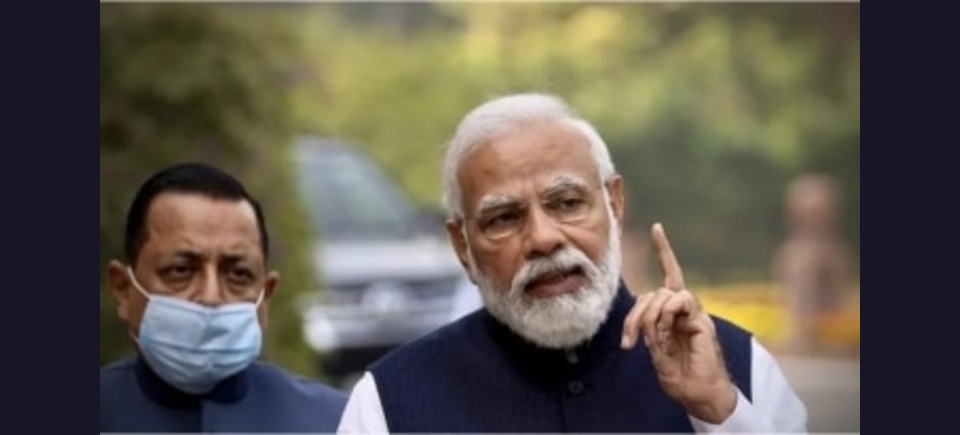
Prime Minister Narendra Modi’s state visit to the US is a ‘major milestone’ for the bilateral ties, the chairman of a leading India-US advocacy group has said, underling that New Delhi and Washington will be the ‘model” for how two strategic partners can work together across sectors.
Prime Minister Modi is visiting the US from June 21-24 at the invitation of US President Biden and First Lady Jill Biden.
‘I think it’s a major milestone for the future. I’ve always been the biggest bull on India and the future of India and what economically can be accomplished by India’s leadership on the global stage,’ US-India Strategic Partnership Forum (USISPF) Chairman John Chambers told PTI in an exclusive interview.
Chambers, the Chairman Emeritus at Cisco and founder of JC2 Ventures, underlined the potential of the US and India to be the “most strategic partnership’ in the world.
This partnership will positively impact not only businesses between the two countries but jobs as well in each of the 28 states and union territories of India and 50 states in the US, he said.
Modi will be welcomed as a State Guest in Washington DC on June 22 and will address a joint session of the US Congress the same day, the first Indian prime minister to be accorded this honour twice.
He first addressed the joint meeting of the US Congress in June 2016. The US President and the First Lady will host Prime Minister Modi at a State dinner on June 22.
Chambers said ‘when you have the two biggest democracies who share a common vision of what technology can do for the future of our countries, for the future of standard of living, job creation and defence, it’s rare that that comes together at a point in time which is what we have now.’ Chambers added that there will be challenges in the relationship as well.
‘Nothing this complex, with this type of results, comes without challenges,” he said.
“But if I were betting on one country in Asia, it’s India. If I were betting on two, I’d bet on India twice. I think we will also be the model for how two strategic partners, not allies, partners, can work together on everything from economics to job creation to technology exchange to defence etc. So it’s a magical moment,’ he said.
Chambers said that in Modi, he has seen a ‘leader that is like almost no other that I’ve seen in 40 years.’ Chambers described Modi as a ‘charismatic leader who is able to outline a vision and to get people both excited about it but he has the ability to execute on it. That is rare in today’s world.’ He emphasised that the Indian leader gets along with both Democrats and Republican leaders in the US.
‘I think he is a uniting force in this world. And I think the most important partnership that will exist for the next two-three decades will be what the US and India can do across” a spectrum of areas.
‘What you really see is our two countries’are joined at the hip at every level,’ Chambers said.
He noted the several interactions and exchanges between top leaders from both countries ahead of the state visit including between External Affairs Minister S Jaishankar and Secretary of State Antony Blinken, Finance Minister Nirmala Sitharaman and US Treasury Secretary Janet Yellen, Commerce Minister Piyush Goyal and United States Trade Representative Katherine Tai well as National Security Advisors from the two countries Ajit Doval and Jake Sullivan.
‘So what you see is a very broad building of relationships in many areas and each of them in and of themselves being important, but when you put them together into an architecture that it becomes game-changing. And so I think it’s important to realise this is a long-term play,’ he said.
Chambers described digitalisation in India as a ‘powerful’ vision. ‘What you see now is no longer an India that is a slow follower. You see an India that is an innovator, a mover and shaker that can really drive through it.’ Chambers also noted the cooperation between India and the US in multilateral fora such as the Quad that includes Australia and Japan and I2U2 – India, Israel, UAE and the US.
‘Now, where we’re going is a chance to redefine what is possible. So my view on this visit is you take it one more step,’ he said adding that “this is an ongoing process.’ Chambers said he ‘can’t wait to watch’ Modi’s address to the US Congress and said expectations are obviously high from the visit.
He added that going by how the foundation has been built, ‘I think it’s going to be a tremendous visit and tremendous results, not necessarily in the next week, but tremendous results over the next years. That really is what it’s all about.’
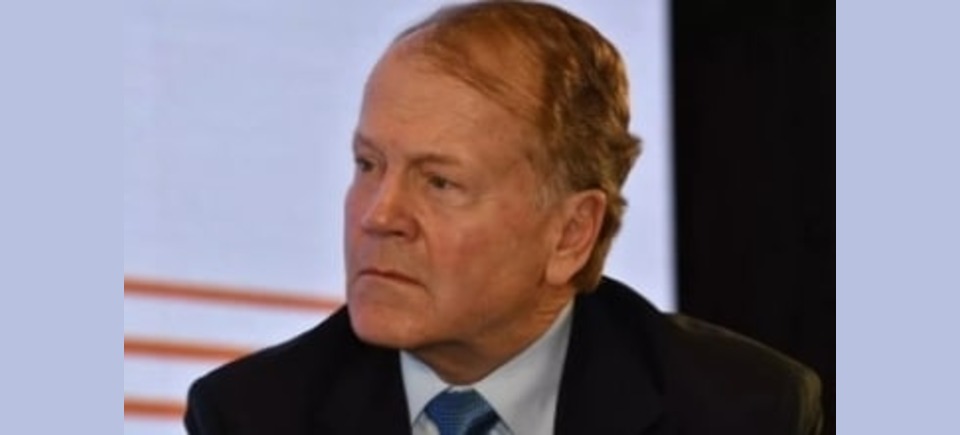
India-US partnership will positively impact not only businesses between the two countries but jobs as well in each of the 28 States and Union Territories of India and 50 States in the US: John Chambers.
Prime Minister Narendra Modi’s state visit to the US is a “major milestone” for the bilateral ties, the chairman of a leading India-US advocacy group has said, underling that New Delhi and Washington will be the “model” for how two strategic partners can work together across sectors.
Prime Minister Modi is visiting the US from June 21-24 at the invitation of US President Biden and First Lady Jill Biden.
“I think it’s a major milestone for the future. I’ve always been the biggest bull on India and the future of India and what economically can be accomplished by India’s leadership on the global stage,” US-India Strategic Partnership Forum (USISPF) Chairman John Chambers told PTI in an exclusive interview.
Chambers, the Chairman Emeritus at Cisco and founder of JC2 Ventures, underlined the potential of the US and India to be the “most strategic partnership” in the world.
This partnership will positively impact not only businesses between the two countries but jobs as well in each of the 28 States and Union Territories of India and 50 States in the US, he said.
Modi will be welcomed as a State Guest in Washington DC on June 22 and will address a joint session of the US Congress the same day, the first Indian prime minister to be accorded this honour twice.
He first addressed the joint meeting of the US Congress in June 2016. The US President and the First Lady will host Prime Minister Modi at a State dinner on June 22.
Chambers said “when you have the two biggest democracies who share a common vision of what technology can do for the future of our countries, for the future of standard of living, job creation and defence, it’s rare that that comes together at a point in time which is what we have now.” Chambers added that there will be challenges in the relationship as well.
“Nothing this complex, with this type of results, comes without challenges,” he said.
“But if I were betting on one country in Asia, it’s India. If I were betting on two, I’d bet on India twice. I think we will also be the model for how two strategic partners, not allies, partners, can work together on everything from economics to job creation to technology exchange to defence etc. So it’s a magical moment,” he said.
Chambers said that in Modi, he has seen a “leader that is like almost no other that I’ve seen in 40 years.” Chambers described Modi as a “charismatic leader who is able to outline a vision and to get people both excited about it but he has the ability to execute on it. That is rare in today’s world.” He emphasised that the Indian leader gets along with both Democrats and Republican leaders in the US.
“I think he is a uniting force in this world. And I think the most important partnership that will exist for the next two-three decades will be what the US and India can do across” a spectrum of areas.
“What you really see is our two countries…are joined at the hip at every level,” Chambers said.
He noted the several interactions and exchanges between top leaders from both countries ahead of the state visit including between External Affairs Minister S Jaishankar and Secretary of State Antony Blinken, Finance Minister Nirmala Sitharaman and US Treasury Secretary Janet Yellen, Commerce Minister Piyush Goyal and United States Trade Representative Katherine Tai well as National Security Advisors from the two countries Ajit Doval and Jake Sullivan.
“So what you see is a very broad building of relationships in many areas and each of them in and of themselves being important, but when you put them together into an architecture that it becomes game-changing. And so I think it’s important to realise this is a long-term play,” he said.
Chambers described digitalisation in India as a “powerful” vision. “What you see now is no longer an India that is a slow follower. You see an India that is an innovator, a mover and shaker that can really drive through it.” Chambers also noted the cooperation between India and the US in multilateral fora such as the Quad that includes Australia and Japan and I2U2 – India, Israel, UAE and the US.
“Now, where we’re going is a chance to redefine what is possible. So my view on this visit is you take it one more step,” he said adding that “this is an ongoing process.” Chambers said he “can’t wait to watch” Modi’s address to the US Congress and said expectations are obviously high from the visit.
He added that going by how the foundation has been built, “I think it’s going to be a tremendous visit and tremendous results, not necessarily in the next week, but tremendous results over the next years. That really is what it’s all about.”

Prime Minister Narendra Modi’s state visit to the US is a “major milestone” for the bilateral ties, the chairman of a leading India-US advocacy group has said, underling that New Delhi and Washington will be the “model” for how two strategic partners can work together across sectors.
Prime Minister Modi is visiting the US from June 21-24 at the invitation of US President Biden and First Lady Jill Biden.
“I think it’s a major milestone for the future. I’ve always been the biggest bull on India and the future of India and what economically can be accomplished by India’s leadership on the global stage,” US-India Strategic Partnership Forum (USISPF) Chairman John Chambers told PTI in an exclusive interview.
Chambers, the Chairman Emeritus at Cisco and founder of JC2 Ventures, underlined the potential of the US and India to be the “most strategic partnership” in the world.
This partnership will positively impact not only businesses between the two countries but jobs as well in each of the 28 states and union territories of India and 50 states in the US, he said.
Modi will be welcomed as a State Guest in Washington DC on June 22 and will address a joint session of the US Congress the same day, the first Indian prime minister to be accorded this honour twice.
He first addressed the joint meeting of the US Congress in June 2016. The US President and the First Lady will host Prime Minister Modi at a State dinner on June 22.
Chambers said “when you have the two biggest democracies who share a common vision of what technology can do for the future of our countries, for the future of standard of living, job creation and defence, it’s rare that that comes together at a point in time which is what we have now.”
Chambers added that there will be challenges in the relationship as well.
“Nothing this complex, with this type of results, comes without challenges,” he said.
“But if I were betting on one country in Asia, it’s India. If I were betting on two, I’d bet on India twice. I think we will also be the model for how two strategic partners, not allies, partners, can work together on everything from economics to job creation to technology exchange to defence etc. So it’s a magical moment,” he said.
Chambers said that in Modi, he has seen a “leader that is like almost no other that I’ve seen in 40 years.”
Chambers described Modi as a “charismatic leader who is able to outline a vision and to get people both excited about it but he has the ability to execute on it. That is rare in today’s world.” He emphasised that the Indian leader gets along with both Democrats and Republican leaders in the US.
“I think he is a uniting force in this world. And I think the most important partnership that will exist for the next two-three decades will be what the US and India can do across” a spectrum of areas.
“What you really see is our two countries…are joined at the hip at every level,” Chambers said.
He noted the several interactions and exchanges between top leaders from both countries ahead of the state visit including between External Affairs Minister S Jaishankar and Secretary of State Antony Blinken, Finance Minister Nirmala Sitharaman and US Treasury Secretary Janet Yellen, Commerce Minister Piyush Goyal and United States Trade Representative Katherine Tai well as National Security Advisors from the two countries Ajit Doval and Jake Sullivan.
“So what you see is a very broad building of relationships in many areas and each of them in and of themselves being important, but when you put them together into an architecture that it becomes game-changing. And so I think it’s important to realise this is a long-term play,” he said.
Chambers described digitalisation in India as a “powerful” vision. “What you see now is no longer an India that is a slow follower. You see an India that is an innovator, a mover and shaker that can really drive through it.”
Chambers also noted the cooperation between India and the US in multilateral fora such as the Quad that includes Australia and Japan and I2U2 – India, Israel, UAE and the US.
“Now, where we’re going is a chance to redefine what is possible. So my view on this visit is you take it one more step,” he said adding that “this is an ongoing process.”
Chambers said he “can’t wait to watch” Modi’s address to the US Congress and said expectations are obviously high from the visit.
He added that going by how the foundation has been built, “I think it’s going to be a tremendous visit and tremendous results, not necessarily in the next week, but tremendous results over the next years. That really is what it’s all about.”
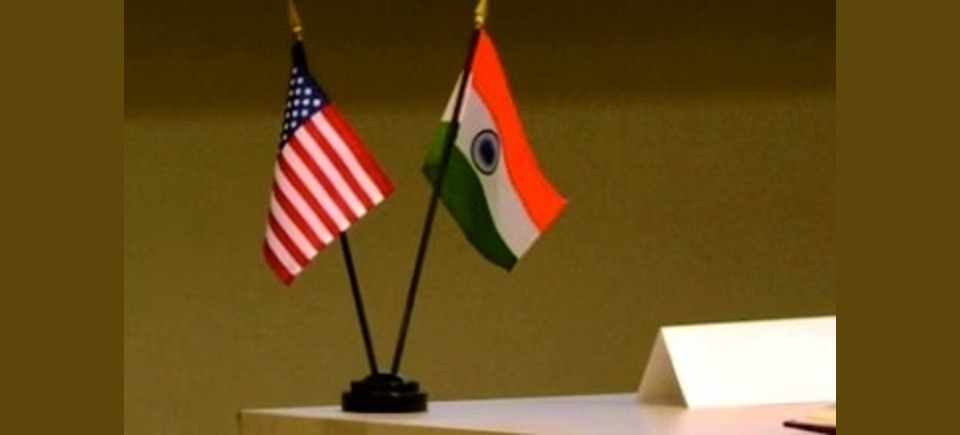
PM Modi’s state visit to the US is a major milestone for the bilateral ties, the chairman of a leading India-US advocacy group has said
Prime Minister Narendra Modi’s state visit to the US is a major milestone for the bilateral ties, the chairman of a leading India-US advocacy group has said, underling that New Delhi and Washington will be the model” for how two strategic partners can work together across sectors.
Prime Minister Modi is visiting the US from June 21-24 at the invitation of US President Biden and First Lady Jill Biden.
I think it’s a major milestone for the future. I’ve always been the biggest bull on India and the future of India and what economically can be accomplished by India’s leadership on the global stage, US-India Strategic Partnership Forum (USISPF) Chairman John Chambers told PTI in an exclusive interview.
Chambers, the Chairman Emeritus at Cisco and founder of JC2 Ventures, underlined the potential of the US and India to be the “most strategic partnership in the world.
This partnership will positively impact not only businesses between the two countries but jobs as well in each of the 28 states and union territories of India and 50 states in the US, he said.
Modi will be welcomed as a State Guest in Washington DC on June 22 and will address a joint session of the US Congress the same day, the first Indian prime minister to be accorded this honour twice.
He first addressed the joint meeting of the US Congress in June 2016. The US President and the First Lady will host Prime Minister Modi at a State dinner on June 22.
Chambers said when you have the two biggest democracies who share a common vision of what technology can do for the future of our countries, for the future of standard of living, job creation and defence, it’s rare that that comes together at a point in time which is what we have now.
Chambers added that there will be challenges in the relationship as well.
Nothing this complex, with this type of results, comes without challenges,” he said.
“But if I were betting on one country in Asia, it’s India. If I were betting on two, I’d bet on India twice. I think we will also be the model for how two strategic partners, not allies, partners, can work together on everything from economics to job creation to technology exchange to defence etc. So it’s a magical moment, he said.
Chambers said that in Modi, he has seen a leader that is like almost no other that I’ve seen in 40 years.
Chambers described Modi as a charismatic leader who is able to outline a vision and to get people both excited about it but he has the ability to execute on it. That is rare in today’s world. He emphasised that the Indian leader gets along with both Democrats and Republican leaders in the US.
I think he is a uniting force in this world. And I think the most important partnership that will exist for the next two-three decades will be what the US and India can do across” a spectrum of areas.
What you really see is our two countriesare joined at the hip at every level, Chambers said.
He noted the several interactions and exchanges between top leaders from both countries ahead of the state visit including between External Affairs Minister S Jaishankar and Secretary of State Antony Blinken, Finance Minister Nirmala Sitharaman and US Treasury Secretary Janet Yellen, Commerce Minister Piyush Goyal and United States Trade Representative Katherine Tai well as National Security Advisors from the two countries Ajit Doval and Jake Sullivan.
So what you see is a very broad building of relationships in many areas and each of them in and of themselves being important, but when you put them together into an architecture that it becomes game-changing. And so I think it’s important to realise this is a long-term play, he said.
Chambers described digitalisation in India as a powerful vision. What you see now is no longer an India that is a slow follower. You see an India that is an innovator, a mover and shaker that can really drive through it.
Chambers also noted the cooperation between India and the US in multilateral fora such as the Quad that includes Australia and Japan and I2U2 – India, Israel, UAE and the US.
Now, where we’re going is a chance to redefine what is possible. So my view on this visit is you take it one more step, he said adding that “this is an ongoing process.
Chambers said he can’t wait to watch Modi’s address to the US Congress and said expectations are obviously high from the visit.
He added that going by how the foundation has been built, I think it’s going to be a tremendous visit and tremendous results, not necessarily in the next week, but tremendous results over the next years. That really is what it’s all about.
More information
https://www.business-standard.com/amp/world-news/india-us-model-for-strategic-partners-to-work-together-usispf-chairman-123061100097_1.html
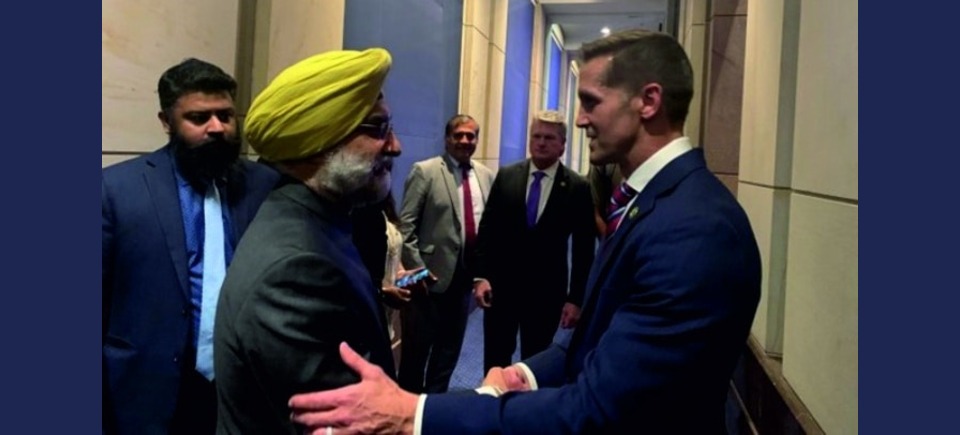
WASHINGTON, DC – With the aim of raising policy issues that affect the community, and engaging in discussions with more than 75 Congressional representatives and their staff, Indian American delegates of the Foundation of India and Indian Diaspora Studies (FIIDS) on April 27, gathered here on Capitol Hill.
“On our advocacy day, we focused on three critical issues: immigration, US-India relations, and religious phobia,” said Khanderao Kand, Founding Director of FIIDS. He said the group “strongly advocated” for the abolition of country-wise limits on employment-based permanent residency; accelerating the Initiative of Critical and Emerging Technology, to counter China, and the expansion of QUAD to include regional countries, addressing security concerns about Taiwan, and the Indo-Pacific region. On “religious phobia faced by faiths of Indian origin,” he said measures had been proposed including a congressional resolution on the matter.
House representatives and their staff were actively engaged, asked questions, and shared comments, a press release said. It singled out Congressman Josh Harder for discussing the significance of an Indo-US alliance and delegates lauding Congressman Raja Krishnamoorthi, for his work on immigration matters.
The day concluded with a celebration reception, which brought together house members, their staff, diplomats, think tank experts, officials, and delegates. This event was supported by the American Jewish Community, Congressman Andy Barr, and Dr. Suvas Desai.
Among the speakers was Nancy Izzo Jackson, Deputy Assistant Secretary in the Bureau of South and Central Asian Affairs who emphasized the consequential nature of the US-India relationship, including QUAD and various projects, such as food security and climate change through green technology advancements.
Jason Isaacson, Chief Policy & Political Affairs Officer of AJC, India’s ambassador to the US Taranjit Singh Sandhu, Nadav Zysblat, Minister-Counselor (Political) from the Embassy of Israel, Dr. Rahul Gupta, Director of the National Drug Control Policy, Mukesh Aghi, CEO and President of the US India Strategic Partnership Forum, were among those who spoke on various aspects of India-US relations Elected officials who spoke were Reps Raja Krishnamoorthi, Carolyn Maloney, Glenn Grothman, Dan Mauser, Mike Collins, Dr. Rich McCormick, David Schweikert, Shri Thanedar and Ro Khanna.
More information
https://indiawest.com/fiids-holds-advocacy-day-on-capitol-hill/
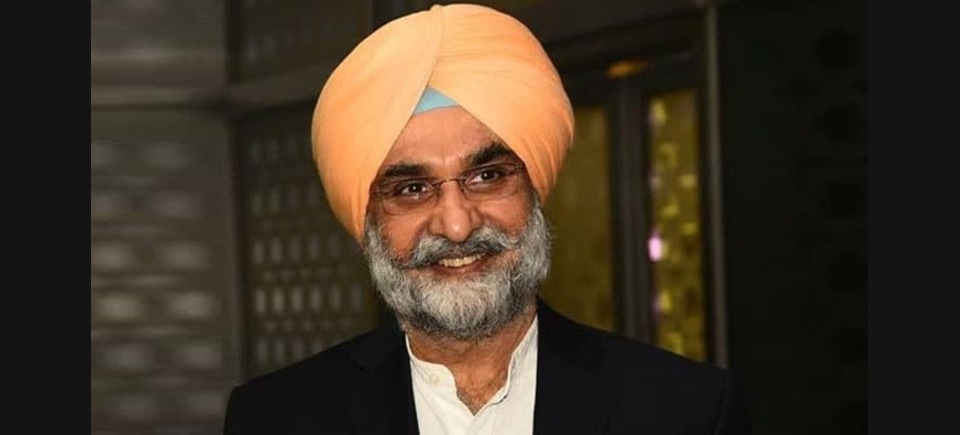
Washington, May 11 Prime Minister Narendra Modi’s visit to the US next month is “historic” and will underscore that the partnership between the two nations is people-centric, people-driven, and is good for the world at large, India’s top diplomat here has said.
President Biden will host Prime Minister Modi for an Official State Visit to the United States, which will include a state dinner, on June 22, the White House announced on Wednesday.
“The upcoming visit will affirm the deep and close partnership between the US and India and the warm bonds of family and friendship that link Americans and Indians together,” White House Press Secretary Karine Jean-Pierre said in a statement while announcing the visit.
India’s Ambassador to the US Taranjit Singh Sandhu told PTI that Modi’s forthcoming official state visit to the US, at the invitation of President Biden, is “historic”.
“Prime Minister and President Biden have together imparted significantly new vigour and momentum to our bilateral ties. The visit will be an opportunity for the two leaders to spend time together, take stock of the progress achieved and provide guidance on the future limitless possibilities,” he said.
“The visit will also underscore that India-US partnership is people-centric and people-driven, and that it is not just for the two countries, but for the world at large,” Sandhu said.
White House Press Secretary Jean-Pierre said on Wednesday the visit will strengthen the two countries’ shared commitment to a free, open, prosperous, and secure Indo-Pacific and shared resolve to elevate the strategic technology partnership, including in defence, clean energy, and space.
The US, India and several other world powers have been talking about the need to ensure a free, open and thriving Indo-Pacific in the backdrop of China’s rising military manoeuvring in the resource-rich region.
China claims nearly all of the disputed South China Sea, though Taiwan, the Philippines, Brunei, Malaysia and Vietnam all claim parts of it. Beijing has built artificial islands and military installations in the South China Sea. China also has territorial disputes with Japan in the East China Sea.
China and its diplomats have been attacking the Indo-Pacific concept from the beginning claiming that it is aimed at containing Beijing.
“The leaders will discuss ways to further expand our educational exchanges and people-to-people ties, as well as our work together to confront common challenges from climate change to workforce development and health security,” Jean-Pierre said.
The White House’s announcement on Biden’s invitation to Modi has been widely welcomed.
“I am delighted that the White House has invited the Prime Minister for a state visit which will help strengthen the strategic partnership between our nations,” Indian American Congressman Ro Khanna told PTI.
Khanna is the Co-Chair of the Congressional India Caucus, the largest country-specific caucus in the House of Representatives.
Mukesh Aghi, president of US India Strategic and Partnership Forum, said Modi’s visit in June will be a wonderful opportunity to elevate the bilateral partnership to the next level.
“President Biden and Prime Minister Modi will be meeting in a few weeks’ time at the Quad Leader’s Summit in Australia and later this year at the G20 in India. Both leaders have used minilaterals such as the Quad, I2U2, and the G20 summits to work on common goals,” Aghi said.
“However, the state visit will provide a valuable and timely opportunity for both Washington and New Delhi to strengthen the edifice of this strategic partnership and work on enhancing commercial ties, building resilient supply chains, and creating new synergies in the critical and emerging technology domain,” he said.
Atul Keshap, president of US India Business Council, said the invitation is a big diplomatic gesture from the United States.
“India was last honoured with a State Visit in 2009. That PM Modi is being honoured with only the third State Visit of the Biden Administration shows the respect and affection the American people have for a rising India,” he said.
It is entirely good and proper that the world’s two greatest democracies further cement their strategic, economic, and technology convergence in these turbulent geostrategic times,” he said.
“The state visit will remind the world that India and America still have so much more potential to capture in our bilateral relations, reflecting the energy and talent of our demographics and our systems, which serve to empower our free peoples,” Keshap said.
Aparna Pande, from the Hudson Institute think-tank, said India is key to the security, diplomatic, and commercial architecture that the United States is building across the Indo Pacific.
“For the Modi government also, a stronger strategic partnership with the United States is critical to boosting India’s leverage in the global arena,” Pande said.
More information
https://theprint.in/world/pm-modis-us-visit-historic-good-for-world-ambassador-sandhu/1567763/

The current trend of US companies setting up Innovation Centres in India is very encouraging, says Aghi.
In its latest episode of Policy Square in association with BW Businessworld, Davinder Sandhu, Chairperson of Primus Partners, sat down in conversation with Mukesh Aghi to talk about the economic and strategic partnership between the United States and India, with a particular emphasis on the technology sector.
This year, the US emerged as India’s largest trading partner, marking a significant shift in dynamics. How do you envision this trend progressing, and what are your perspectives on it?
I believe that the US-India relationship is the most important relationship of the 21st century. This has been stated by President Obama, President Trump and President Biden. You have to look at this relationship from multiple angles. First is the geopolitical angle. We are living in an age where the current order is being challenged by China. While we all live by the guidelines or the order, China would like to dictate its own. India has border disputes with China, which is going to push India dramatically. From that perspective, India needs friends to deal with the issue and the US becomes a friend.
The second aspect is the opportunity for India. China was the manufacturing hub for the globe, but with the COVID issue and China’s assertive approach to changing the world order, every boardroom in the US and Europe is asking the question, “How do we de-risk our supply chain?” India becomes a natural place for them to explore. In fact, today we have Tim Cook in New Delhi. Apple is going to produce roughly 20 million iPhone 14s in 2024 – almost 7 per cent of their global production – and that number keeps going up.
So, I think from a geopolitical perspective, an economic perspective, and a people-to-people perspective, we have around five million Indian Americans in the US, with double the average income of an American itself. Biden has positioned 150 of those Indian Americans in his administration, and he has nominated Ajay Banga as President of the World Bank. In every aspect, the relationship is getting more and more cemented and [becoming] stronger.
There is a clear interest in utilising supply chains, given India’s significant technical capacity, efficient company management, and robust legal framework. With the recent establishment of a technology partnership between the two countries, what steps are necessary for American companies to maintain this momentum?
If we look at it from an American company’s perspective, they are looking for competitive and efficient production of their goods so that they can sell around the world. The reason they went to China was definitely due to cost and scalability, and they are also looking at India from that perspective. It’s important to sit down with some of these companies and have a dialogue about what they need, just like they did with Apple and set up a PLI scheme so they can be globally competitive and make the same margins. It’s important to make policy broader and let these companies adjust to that environment.
The second aspect is that the ease of doing business has to get better. India needs to benchmark itself not just within states, but with countries like Singapore and Finland that have a world-class environment for doing business. The third factor is infrastructure. While from a tax and wages perspective, India is the same as or better than China, when it comes to the logistics supply chain, the cost of moving goods is 20 per cent higher. India needs to keep improving its infrastructure, including ports, airports, railways, and highways, to make these companies more efficient in the global supply chain.
The third factor is giving these companies a level playing field. If India wants to be an export nation and a global economy of USD five or USD 10 trillion, it needs to bring in global competition. Things have improved in the last 10 years or five years, but for India to be a global leader in every aspect, it needs to compete globally.
I believe that India possesses a talented group of youngsters brimming with innovative ideas, which has propelled the country into being one of the leading startup nations globally, while the United States has always been at the forefront of innovation, particularly in the pharma and IT industries. India offers a pool of young talent, and the US possesses a well-developed investment system. Therefore, how can the two collaborate to push forward innovation and startups?
The startups in India are becoming global, but they need a bridge to become even more global. There are issues related to investment, access to markets and taxation. For instance, there is now an angel tax, which can harm startups. Why can’t startups go for IPOs and raise capital in Nasdaq and other markets outside of India? When we look at these issues more closely, it becomes apparent that it is essential to find ways to get cheap capital from the US into India. The private equity firms currently have roughly two trillion dollars in capital, which is not being utilized, and India could be the place to leverage that capital. Additionally, once a good startup idea is found, we need to provide access to Fortune 500 companies. These are the issues we’re trying to address. We have taken a dozen companies from India, and their valuations have shot up into the billions of dollars. It’s a win-win situation. So, for every startup we have taken to the US, for every person they hire with an average salary in the US of USD 175,000, they add eight people in India also. It’s cost-effective, and both countries benefit. Therefore, startup support is a critical area that we should explore and support.
Ecommerce has been one of the main components of startups, as it facilitates access to markets and ideas. There has been extensive dialogue around e-commerce regulations, and India acknowledges that ecommerce and logistics were instrumental in keeping it afloat during the pandemic. Therefore, with this realization, could you please provide insights into the stance of US e-commerce giants and what India could do to improve the regulatory environment to facilitate their operations?
Well, with a population of 1.4 billion people, the retail segment in India is fragmented and the infrastructure is limited, and the cost of real estate is extremely high. Therefore, it is important to leverage e-commerce to provide world-class services to consumers. The companies operating in this space are advocating for a level playing field, transparency in policy-making, and predictability. They are concerned that their future investments may be impacted if laws change abruptly. While India is willing to work on these issues, they are also focused on protecting small-time SMEs and maintaining their jobs. The key is to find a balance that integrates them into the supply chain, creating a win-win situation for all parties involved.
On my way here, I was wondering if I was ChatGPT, what would I ask you? So, coming to the important conversation around artificial intelligence, I think both countries have been very good in technology, information services and software. How do you think we can both collaborate better in getting the best out of AI for people in our respective countries?
That is a discussion I had the last couple of days with the leadership in Delhi because you have an opportunity that can become a threat, if not handled right. Therefore, it is critical for both countries to start having conversations from a policymaker’s perspective and establish common guidelines and barriers, to ensure that we do not move in the wrong direction with AI. India has tremendous resources to build AI, while the US has fantastic algorithms on the AI side. If we merge those algorithms with the data of 1.4 billion people, we can come up with fantastic solutions that will be a win-win. However, it is important for policymakers on both sides to sit down and discuss how they can establish certain fences around AI so that it does not become a threat to society.
As [you were] previously the President of IBM in India and still maintain connections in the industry, I would like to ask for your views on the conversations around data protection and data onshoring in India. While there is a new data protection bill, stakeholders are still discussing what more needs to be done. What is the American industry’s view on data protection and what do you believe needs to be done to encourage greater cooperation and conversation while also respecting the sensitivities involved?
Stagnant data holds no value; dynamic data drive solutions. We cannot fragment data as we live in a global world. Once we begin to fragment it, we lose the value of the data itself. Therefore, it is essential that we maintain dynamic data while also protecting the interests of the country and its citizens. As we transition to the next phase, each individual’s data becomes their own asset, and they should be able to decide how to share their data, whether for market, research, or any testing purposes. Additionally, we must consider data from a national security perspective. However, this does not mean that every piece of data is a national security issue. The bill looks at countries where data can be shared, and it is important to keep this in mind as we move forward with the bill. The government is currently undergoing extensive consultation, and the old bill has been discarded, which I believed was redundant. The new bill is more encouraging, and there will be more fine-tuning as we progress.
India has clearly produced a great global public good in terms of citizen intervention and building up a tech stack of citizen and public data. I think there is tremendous potential to scale this up for the benefit of both countries, both in terms of human and sub-commercial advantage. Look at what the pandemic [or] UIDAI has done. It’s a system that has brought together a huge number of possibilities. So how can the US and Indian industries come together to leverage this global public good that India has created over the last five or seven years, and take it forward to the whole world?
One thing I have to commend the government for is creating its own vaccine during the COVID crisis, which was affordable at around INR 150, while in the US, we were paying USD 18 even though it was provided by the government. However, what’s even more important is the ability to administer over two billion shots across territories and geographies that were previously inaccessible. To me, this demonstrates the government’s effectiveness and efficiency, sending a message that India can be a pharmacy to the world, providing scalable and affordable healthcare solutions not only to its citizens but also to the rest of the world. India spends less than two per cent of its GDP on healthcare, while the US spends 18 per cent, yet India is often more efficient than the US in many cases. Therefore, this is an area where both countries can work together.
I find the current trend of US companies coming into India to set up innovation centres and develop solutions for the rest of the world very encouraging. Pfizer, Merck, Qualcomm, and Samsung are leveraging Indian talent to drive value proposition, not just from an IP perspective, but also solutions. With over 326 space startups in India, the country is becoming a hotbed of innovation, with frugal engineering that is effective, scalable, and global. Therefore, I see a win-win value proposition between the two countries, and we should leverage this to our advantage.
Regarding the UPI stack, I think it’s a phenomenal story for India. I was in a pharmacy in Khan Market, and someone purchased medicine for Indian rupee seven by simply scanning the QR code, and the transaction was efficient, effective, and secure. If we can take this technology to the rest of the world, which we have already done in Singapore, it will be a game-changer.
More information
https://www.businessworld.in/article/USISPF-President-Mukesh-Aghi-On-Future-Of-Indo-American-Partnership/10-05-2023-475952/
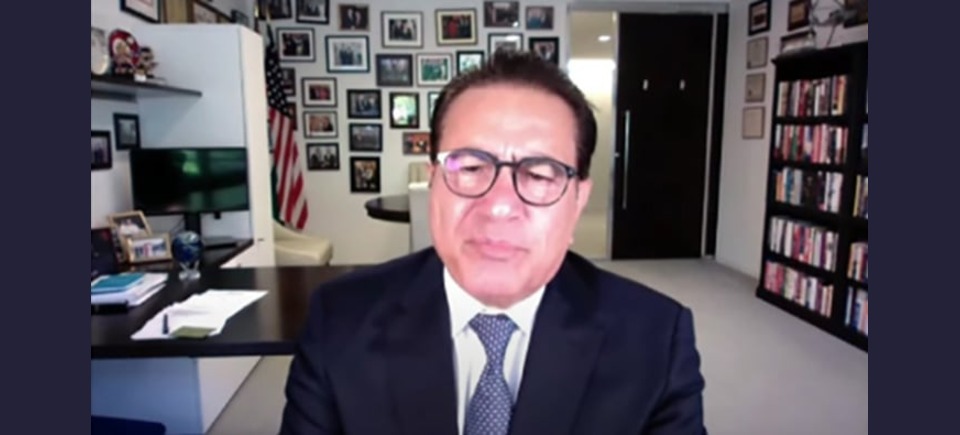
Analysing the growing involvement of Indians in the US political arena, Dr Mukesh Aghi in an exclusive interview to Connected to India said, “Indians are the most affluent minority group in the US and they feel the need to contribute to the country which they have migrated to. One aspect of this is political participation.”
Dr Aghi is the president and Chief Executive Officer of the US-India Strategic Partnership Forum, a bilateral and non-partisan trade association created to develop and sustain political and economic Indo-US ties. He works extensively with business and government leaders in the US and India to promote bilateral trade and diplomatic relations.
“Indians seemed to be leaning towards the Republican Party in recent times, with 30 per cent of eligible Indian-Americans voting for the GOP in the last election; up from 20 per cent in the previous polls,” added Dr Aghi.
You can watch our exclusive interview with Dr Aghi here where he talks about the growing India-US bilateral trade, complementary relations between the two largest democracies and political activation among Indian Americans.
More information
https://www.connectedtoindia.com/indians-in-us-feel-the-need-to-contribute-to-the-country-theyve-migrated-to-mukesh-aghi-10918.html
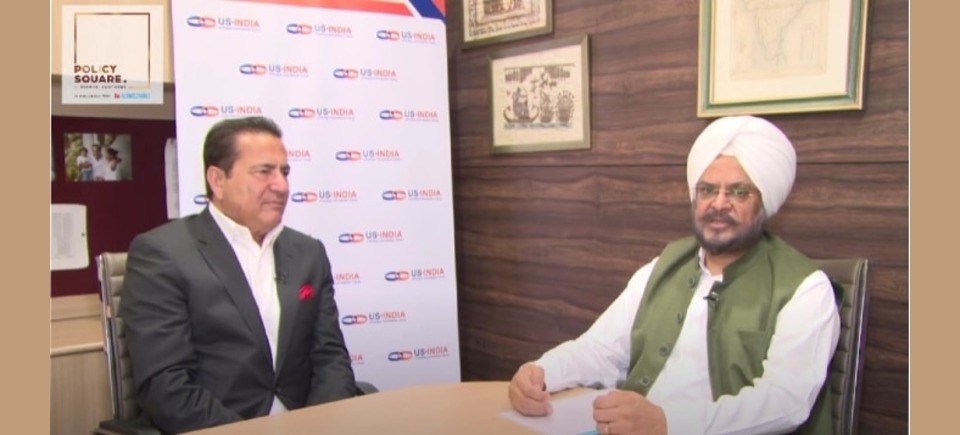
We are excited to present to you the latest edition of Policy Square, a joint effort by Primus Partners and Business World. In this episode of Policy Square, Dr. Mukesh Aghi, President and CEO of the US-India Strategic Partnership Forum (USISPF), engages in a thought-provoking discussion with Mr. Davinder Sandhu, Chairperson, Primus Partners, shedding light on five critical areas for a continued strategic partnership between India and the US. These areas include manufacturing, national security in emerging technology, aligning bilateral and multilateral priorities by leveraging India’s human resources, and trade.
Moreover, the conversation delves into the geopolitical dynamics of current times and how India and the US can form a powerful alliance, the global economy, the impact of new technologies such as AI, and favorable policies that promote accessibility & ease of doing business.
We thank Dr. Mukesh Aghi for sharing his valuable insights and recommendations on how to maximize the potential of this bilateral relationship. His profound thoughts have shed light on various avenues for collaboration, including other promising domains that warrant exploration by both nations.
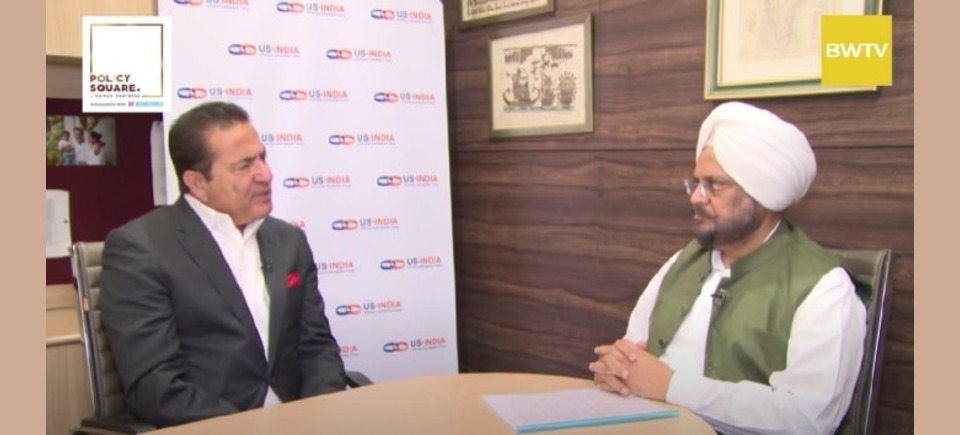
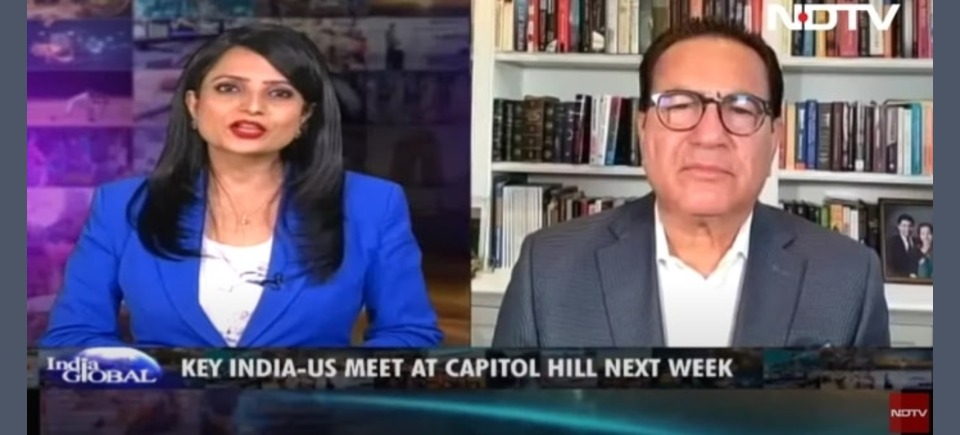

Eric Garcetti has arrived in India, thus ending the longest period since the United States has gone without an ambassador to India. Since Ambassador Ken Juster served his last days in January 2021, Roosevelt House in New Delhi had been without an occupant.
Ambassador Garcetti will no doubt hit the ground running and will be soon settling into an Indian summer after making the rounds in Washington. The former mayor’s experience of having been the executive of a large metropolitan like Los Angeles gives him a sharp perspective on the economic issues and prioritising the need to attract investors, all of which play a vital part as we seek to strengthen the commercial relationship.
On a personal front, the incoming ambassador shares a special affinity for India, having visited the country in his youth and having studied Hindi in college. During his time as Mayor, he interacted with Indian officials on matters pertaining to energy, ports, culture, and urbanisation and of course catered to the large diaspora in the Los Angeles metropolitan county.
As Ambassador, Garcetti will have a plate full of US-India engagement on the horizon with the Quad Summit in Australia, India hosting G20 world leaders, and an impending state visit by Prime Minister Modi over the summer.
One of the key aspects is that Garcetti is a well-known confidant of President Biden and this close convivial working relationship will expedite key decisions, which at times in the past could be stuck through layers of formal bureaucracy.
Garcetti’s biggest impact will be to help expedite the wait times as the visa backlog across all categories from working professionals to business visas, tourist, and student visas were severely affected due to the pandemic. The bureaucratic delays have exacerbated the wait times as several people have been unable to secure an appointment across the embassy and consulates in India.
His priorities will be threefold. On the commercial relationship, the US is now India’s largest trading partner, with annual bilateral trade touching near $200 billion. The commercial relationship remains robust with major American manufacturers looking at India for electronic manufacturing as companies seek a China plus-one strategy.
As India works to promote the investment climate and enhance the ease of doing business environment, Garcetti will be a key champion for American industry, creating a win-win situation as the positive tailwinds align in his favour.
On the geopolitical and geo-strategic part, Garcetti will reap the benefits of successive administration efforts, right from the Bush administration to the Civil Nuclear Deal, to the Biden Administration’s push for the inaugural Initiative for Critical and Emerging Technologies (iCET).
Defence has been one of the cornerstones of the US-India strategic partnership and Garcetti understands this well through his former background in the military as a US Navy reserve. The relationship has grown from almost zero sales to $20 billion in defence relationship since the seminal US-India civil nuclear arrangement. The new Ambassador’s top priorities will be to consolidate and build on these defence partnerships as the Indo-Pacific Quad gets momentum and the I2U2 begins to fructify in the same manner.
Furthermore, there is a vital opportunity for both American defence manufacturers as New Delhi seeks to gradually wean away from a dependence on the Russian-era arsenal. The war in Ukraine has galvanised the need to look at consolidating imports from the US, France and Israel, and the effects of the war on Russia’s military will also add to a supply chain issue for India in the long run, should this dependence continue.
The technology industry for decades has provided the US with a global competitive edge, and Silicon Valley continues to epitomise that hub for innovation. The time is ripe to focus on co-development and technology sharing, as iCET has opened this golden avenue. As the race for semiconductors heats up, the US and India can work towards chip manufacturing and focus on shared military technologies through the sale of jet engine technology.
Garcetti will be tasked to carry on the progress we have seen this year from the restart of the US-India Commercial Dialogue and the US-India CEO Forum. The commercial partnership is focused on rebuilding resilient supply chains, both to recover from pandemic losses and preclude a supply chain lacuna.
Furthermore, a stronger and stable supply chain network and a critical technology partnership with the U.S. will make Garcetti’s job easier to bat for American investors. This is the ideal win-win scenario as India seeks to consolidate its domestic and high-tech manufacturing base and American investors will need to be the lion’s share of those investments. Apart from the Trade Policy Forum (TPF), both India and the US underscore their priorities to build a stronger trade relationship through the Indo-Pacific Economic Framework (IPEF).
The upcoming G20 in India will touch on pertinent aspects of energy from climate finance to a much-needed shift to cleaner sources of energy and reducing dependency on fossil fuels in the emerging market world. And an impending state visit by Prime Minister Modi later this summer will give both Washington and New Delhi a chance to renew their larger and more specific bilateral goals, and energy collaboration with the strategic clean energy partnership could certainly be one of them.
However, most importantly, the underlying strength of the US-India relationship is epitomised in the people-to-people ties and one that is the secret ingredient of the strategic partnership.
Recent footage of Commerce Secretary Raimondo, partaking in the colourful festival of Holi with External Affairs Minister Jaishankar and Defence Minister, Rajnath Singh won the internet.
Increased American engagement with the Indian diaspora will be one of Garcetti’s top priorities, as his predecessor, Ambassador Juster partook in basketball activities as NBA teams made a splash across India.
Given his background in the southern Californian city of Los Angeles, codified as Hollywood central, Garcetti can help build on diaspora cultural linkage through Hollywood and Bollywood initiatives, as the Indian film industry has now garnered mainstream attention on American shores through the many years. Especially after the performance of RRR at the Oscars recently, a win for cultural diplomacy and the arts.
Visas continue to play an important part in ensuring education continuity, with constant student exchanges, and the recovery in the number of Indian students in the United States post the pandemic.
The eminent economist turned diplomat, John Kenneth Galbraith, known for his towering stature, served as President Kennedy’s envoy to India in the early 1960s and perhaps helped build the strong edifice US-India relations sit on today. This was far before, any nuclear deal was signed, or any commercial agreement was penned. In fact, it was during a time when India was rampantly socialist that was juxtaposed with American capitalism. But Galbraith had a deep affinity for the people of India, and saw as early as 1963, the possibility (when many may have seen none), of a US-India strategic partnership, based on shared democratic values and the people to people to relations.
Galbraith set the tone for his successors, eminent personalities such as Chester Bowles, Daniel Patrick Moynihan, Tom Pickering and Frank Wisner. Eric Garcetti has an opportunity to add himself to the roster of stalwarts by being empathetic, connecting with the population emotionally, and building a much stronger US-India partnership.
—The author, Dr. Mukesh Aghi, is President & CEO of the US-India Strategic Partnership Forum (USISPF).
More information
New Us Ambassador To India — Eric Garcetti To Pave The Way For A Stronger Partnership (cnbctv18.com)

USISPF chief Mukesh Aghi on Sunday observed that the Silicon Valley Bank (SVB) has been the go-to bank for the US and foreign tech startups and members of the venture capital industry for years and its abrupt halt has left several of its customers worldwide in a crisis.
Welcoming the measures taken to fully preserve the insured and uninsured deposits at the now collapsed Silicon Valley Bank, the US India Strategic and Partnership Forum (USISPF) has said a swift resolution is vital for the United States to maintain its leadership in the global startup and innovation ecosystem.
USISPF chief Mukesh Aghi on Sunday observed that the Silicon Valley Bank (SVB) has been the go-to bank for the US and foreign tech startups and members of the venture capital industry for years and its abrupt halt has left several of its customers worldwide in a crisis.
He said the most immediate task was to prevent the contagion beyond the current limited case and maintain the US leadership in the global startup ecosystem by ensuring a swift and orderly resolution of the matter.
“The authorities have done so, realising that failure to protect the value of deposits would cripple many of these startup firms, resulting in the loss of hundreds of thousands of jobs and impacting millions of lives globally. Furthermore, the startup ecosystem in the United States is tightly integrated with the ecosystem globally,” Aghi said in a statement.
“The financial crippling of many startups would reverberate around the world, especially in innovative countries like Ireland, Israel and India. The important measures were to preclude the loss of credibility and trust in Silicon Valley, which if lost, might never be restored and would further erode the United States’ position as the global startup leader,” he said.
California-based Silicon Valley Bank, the 16th largest bank in the United States, was closed on Friday by the California Department of Financial Protection and Innovation which later appointed the Federal Deposit Insurance Corporation (FDIC) as its receiver.
One of the United States’ most significant and successful exports has been the idea of the American Dream, a dream many founders and co-founders of startups have emulated, Aghi said, noting that the USISPF research shows that more than 70 per cent of startups have immigrant co-founders, and as of 2022, over 50 CEOs of public companies are of Indian origin.
“In the tech space, both the United States and India have seen tremendous collaboration and convergence. The synergy is best epitomised by India’s tech talent and the United States’ robust tech sector,” he said.
The technology industry for decades has provided the US with a global competitive edge, and Silicon Valley continues to epitomise that hub for innovation. During his 2015 visit to the Valley, Prime Minister Narendra Modi had said, “California is one of the last places in the world to see the sunset, but it is here that new ideas see the first light of day.”
The startup innovation economy houses millions of jobs, liquidity, and dreams, all of which stand at significant risk if liquidity goes awry, he said. USISPF’s immediate focus is to help ensure the safety of deposits of startups and venture capitalists (VCs) to be assured of security in a timely and efficient manner, Aghi noted.
“The dislocation of funds from SVB is not just a financial crisis, but can snowball into a tech crisis. As such, we thank the Federal Reserve, the FDIC, and the US Treasury Department for acting swiftly and for reassurance to startups during this crisis. In the future, I urge the White House and Treasury Department, working in partnership with the Congress, to strengthen the regional banking system,” Aghi said.
“The US startup ecosystem has a tremendous impact worldwide, so immediate action was needed and thus taken to protect it during this critical time,” the USISPF president added.
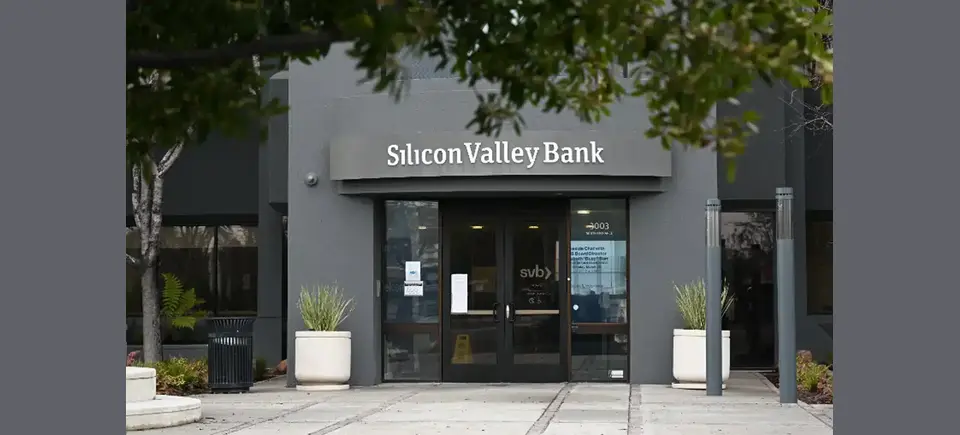
USISPF chief Mukesh Aghi said that the Silicon Valley Bank has been the go-to bank for the US and foreign tech startups and members of the venture capital industry for years and its abrupt halt has left several of its customers worldwide in a crisis.
Washington: Welcoming the measures taken to fully preserve the insured and uninsured deposits at the now collapsed Silicon Valley Bank, the US India Strategic and Partnership Forum (USISPF) has said a swift resolution is vital for the United States to maintain its leadership in the global startup and innovation ecosystem.
USISPF chief Mukesh Aghi on Sunday observed that the Silicon Valley Bank (SVB) has been the go-to bank for the US and foreign tech startups and members of the venture capital industry for years and its abrupt halt has left several of its customers worldwide in a crisis.
He said the most immediate task was to prevent the contagion beyond the current limited case and maintain the US leadership in the global startup ecosystem by ensuring a swift and orderly resolution of the matter.
“The authorities have done so, realising that failure to protect the value of deposits would cripple many of these startup firms, resulting in the loss of hundreds of thousands of jobs and impacting millions of lives globally. Furthermore, the startup ecosystem in the United States is tightly integrated with the ecosystem globally,” Aghi said in a statement.
“The financial crippling of many startups would reverberate around the world, especially in innovative countries like Ireland, Israel and India. The important measures were to preclude the loss of credibility and trust in Silicon Valley, which if lost, might never be restored and would further erode the United States’ position as the global startup leader,” he said.
California-based Silicon Valley Bank, the 16th largest bank in the United States, was closed on Friday by the California Department of Financial Protection and Innovation which later appointed the Federal Deposit Insurance Corporation (FDIC) as its receiver.
One of the United States’ most significant and successful exports has been the idea of the American Dream, a dream many founders and co-founders of startups have emulated, Aghi said, noting that the USISPF research shows that more than 70 per cent of startups have immigrant co-founders, and as of 2022, over 50 CEOs of public companies are of Indian origin.
“In the tech space, both the United States and India have seen tremendous collaboration and convergence. The synergy is best epitomised by India’s tech talent and the United States’ robust tech sector,” he said.
The technology industry for decades has provided the US with a global competitive edge, and Silicon Valley continues to epitomise that hub for innovation. During his 2015 visit to the Valley, Prime Minister Narendra Modi had said, “California is one of the last places in the world to see the sunset, but it is here that new ideas see the first light of day.” The startup innovation economy houses millions of jobs, liquidity, and dreams, all of which stand at significant risk if liquidity goes awry, he said. USISPF’s immediate focus is to help ensure the safety of deposits of startups and venture capitalists (VCs) to be assured of security in a timely and efficient manner, Aghi noted.
“The dislocation of funds from SVB is not just a financial crisis, but can snowball into a tech crisis. As such, we thank the Federal Reserve, the FDIC, and the US Treasury Department for acting swiftly and for reassurance to startups during this crisis. In the future, I urge the White House and Treasury Department, working in partnership with the Congress, to strengthen the regional banking system,” Aghi said.
“The US startup ecosystem has a tremendous impact worldwide, so immediate action was needed and thus taken to protect it during this critical time,” the USISPF president added.
More information
https://www.ndtv.com/business/us-india-partnership-forum-hails-swift-action-to-protect-silicon-valley-bank-depositors-3855460

New Delhi, Delhi, India:
In light of the sudden collapse of Silicon Valley Bank, Dr. Mukesh Aghi, President and CEO of the US-India Strategic Partnership Forum’s Startup Connect Program thanks the U.S. Federal Reserve, the Federal Deposit Insurance Corporation (FDIC), and the U.S. Treasury Department for the steps they have taken to fully preserve the insured and uninsured deposits. A swift resolution is vital for the United States to maintain its leadership in the global startup and innovation ecosystem.
Silicon Valley Bank (SVB) has been the go-to bank for U.S. and foreign tech startups and members of the venture capital (V.C.) industry for years, and its abrupt halt has left several of its customers worldwide in crisis. The most immediate task was to prevent contagion beyond this limited case and maintain U.S. leadership in the global startup ecosystem by ensuring a swift and orderly resolution at SVB. The authorities have done so, realizing that failure to protect the value of deposits would cripple many of these startup firms, resulting in the loss of hundreds of thousands of jobs and impacting millions of lives globally.
Furthermore, the startup ecosystem in the United States is tightly integrated with the ecosystem globally. The financial crippling of many startups would reverberate around the world, especially in innovative countries like Ireland, Israel, and India. The important measures were to preclude the loss of credibility and trust in Silicon Valley, which if lost, might never be restored and would further erode the United States’ position as the global startup leader.
United States as the Innovation Engine of the World
One of the United States’ most significant and successful exports has been the idea of the American Dream, a dream many founders and co-founders of startups have emulated.
USISPF research shows that more than 70% of startups have immigrant co-founders, and as of 2022, over 50 CEOs of public companies are of Indian origin.
In the tech space, both the United States and India have seen tremendous collaboration and convergence. The synergy is best epitomized by India’s tech talent and the United States’ robust tech sector.
The technology industry for decades has provided the United States with a global competitive edge, and Silicon Valley continues to epitomize that hub for innovation. During his 2015 visit to the Valley, Prime Minister Narendra Modi stated, “California is one of the last places in the world to see the sunset, but it is here that new ideas see the first light of day.”
Decisive Action
The startup innovation economy houses millions of jobs, liquidity, and dreams, all of which stand at significant risk if liquidity goes awry. USISPF’s immediate focus is to help ensure the safety of deposits of startups and V.C.s to be assured of security in a timely and efficient manner. The dislocation of funds from SVB is not just a financial crisis but can snowball into a tech crisis. As such, we thank the Federal Reserve, the FDIC, and the U.S. Treasury Department for acting swiftly and for reassurance to startups during this crisis. In the future, I urge the White House and Treasury Department, working in partnership with Congress, to strengthen the regional banking system.
The U.S. startup ecosystem has a tremendous impact worldwide, so immediate action was needed and thus taken to protect it during this critical time.
About the US-India Strategic Partnership Forum (USISPF)
The US-India Strategic Partnership Forum (USISPF), whose chairman is John Chambers, is committed to creating the most powerful partnership between the United States and India. As the only independent not-for-profit institution dedicated to strengthening the U.S.-India partnership in Washington, D.C., and in New Delhi, USISPF is the trusted partner for businesses, non-profit organizations, the diaspora, and the governments of India and the United States.
About U.S. – India Startup Connect Program
The Startup Connect Program provides a platform for founders and CEOs to mentor burgeoning tech talent and startups, leveraging USISPF’s B2B connectivity. The invaluable mentorship from Fortune 500 executives and robust support from a policy perspective seeks to help improve the regulatory environment for startups to expand in the U.S. The Program supports entrepreneurs who move to the U.S. and seek to expand their enterprise there, creating thousands of technology jobs and boosting the Silicon Valley ecosystem. Umesh Sachdev, Founder and CEO of Uniphore, and Vinod Muthukrishnan, Chief Customer Officer of Uniphore, are co-chairs of the Program.
More information
https://www.businesswireindia.com/usispfs-startup-connect-statement-on-silicon-valley-bank-crisis-83516.html

America’s Big Banks Amidst the bankruptcy of Silicon Valley Bank (SVB), the Biden administration has announced that the depositors of this bank will be able to withdraw their money from today, with the aim of maintaining public confidence in the country’s banking system and protecting the US economy. An official statement said that after receiving the recommendation of the Federal Deposit Insurance Corporation (FDIC) and the central bank Federal Reserve and discussions with President Joe Biden, Treasury Secretary Janet Yellen on Sunday decided to complete the resolution of the bank, as well as depositors. has authorized the FDIC to take steps to fully protect the interests of
Due to the sinking of the bank, there was increased concern among the depositors.
California-based Silicon Valley Bank, the 16th largest US bank, was shut down by the California Department of Financial Security and Innovation on Friday. It has appointed the FDIC as the bank’s resolver. The bank ran into trouble when its customers, including venture capital firms and those backed by them, started withdrawing their deposits. Depositors of the bank will be able to access their full funds from Monday, March 13, said a joint statement issued by the US Treasury Department, the Federal Reserve and the FDIC. Taxpayers will not have to bear the loss associated with the resolution of Silicon Valley Bank.
Big relief to startups around the world
In the statement, a similar systematic risk exception has been announced for Signature Bank of New York. This bank was closed on Monday. Welcoming the steps taken to protect the interests of SVB’s depositors, the US India Strategic and Partnership Forum (USISPF) has said that a swift and orderly solution is necessary to maintain America’s leadership in the global startup and innovation ecosystem. USISPF chief Mukesh Aghi said the authorities have taken steps. They know that failing to protect the value of deposits will put many startup companies in jeopardy, resulting in the loss of thousands of jobs and affecting millions of people around the world.
More information
https://presswire18.com/big-relief-to-the-depositors-of-silicon-valley-bank-will-be-able-to-withdraw-money-from-today/

New Delhi [India], March 13 (ANI/BusinessWire India): In light of the sudden collapse of Silicon Valley Bank, Dr Mukesh Aghi, President and CEO of the US-India Strategic Partnership Forum’s Startup Connect Program thanks the U.S. Federal Reserve, the Federal Deposit Insurance Corporation (FDIC), and the U.S. Treasury Department for the steps they have taken to fully preserve the insured and uninsured deposits. A swift resolution is vital for the United States to maintain its leadership in the global startup and innovation ecosystem.
Silicon Valley Bank (/topic/silicon-valley-bank) (SVB) has been the go-to bank for U.S. and foreign tech startups and members of the venture capital (V.C.) industry for years, and its abrupt halt has left several of its customers worldwide in crisis. The most immediate task was to prevent contagion beyond this limited case and maintain U.S. leadership in the global startup ecosystem by ensuring a swift and orderly resolution at SVB. The authorities have done so, realizing that failure to protect the value of deposits would cripple many of these startup firms, resulting in the loss of hundreds of thousands of jobs and impacting millions of lives globally.
Furthermore, the startup ecosystem in the United States is tightly integrated with the ecosystem globally. The financial crippling of many startups would reverberate around the world, especially in innovative countries like Ireland, Israel, and India. The important measures were to preclude the loss of credibility and trust in Silicon Valley, which if lost, might never be restored and would further erode the United States’
position as the global startup leader.
United States as the Innovation Engine of the World
One of the United States’ most significant and successful exports has been the idea of the American Dream, a dream many founders and co-founders of startups have emulated. USISPF research shows that more than 70 per cent of startups have immigrant co-founders, and as of 2022, over 50 CEOs of public companies are of Indian origin. In the tech space, both the United States and India have seen tremendous collaboration and convergence. The synergy is best epitomized by India’s tech talent and the United States’ robust tech sector.
The technology industry for decades has provided the United States with a global competitive edge, and Silicon Valley continues to epitomize that hub for innovation. During his 2015 visit to the Valley, Prime Minister Narendra Modi stated, “California is one of the last places in the world to see the sunset, but it is here that new ideas see the first light of day.”
Decisive Action
The startup innovation economy houses millions of jobs, liquidity, and dreams, all of which stand at significant risk if liquidity goes awry. USISPF‘s immediate focus is to help ensure the safety of deposits of startups and V.C.s to be assured of security in a timely and efficient manner. The dislocation of funds from SVB is not just a financial crisis but can snowball into a tech crisis. As such, we thank the Federal Reserve, the FDIC, and the U.S. Treasury Department for acting swiftly and for reassurance to startups during this crisis. In the future, I urge the White House and Treasury Department, working in partnership with Congress, to strengthen the regional banking system.
The U.S. startup ecosystem has a tremendous impact worldwide, so immediate action was needed and thus taken to protect it during this critical time.

Business Wire India
In light of the sudden collapse of Silicon Valley Bank, Dr. Mukesh Aghi, President and CEO of the US-India Strategic Partnership Forum’s Startup Connect Program thanks the U.S. Federal Reserve, the Federal Deposit Insurance Corporation (FDIC), and the U.S. Treasury Department for the steps they have taken to fully preserve the insured and uninsured deposits. A swift resolution is vital for the United States to maintain its leadership in the global startup and innovation ecosystem.
Silicon Valley Bank (SVB) has been the go-to bank for U.S. and foreign tech startups and members of the venture capital (V.C.) industry for years, and its abrupt halt has left several of its customers worldwide in crisis. The most immediate task was to prevent contagion beyond this limited case and maintain U.S. leadership in the global startup ecosystem by ensuring a swift and orderly resolution at SVB. The authorities have done so, realizing that failure to protect the value of deposits would cripple many of these startup firms, resulting in the loss of hundreds of thousands of jobs and impacting millions of lives globally.
Furthermore, the startup ecosystem in the United States is tightly integrated with the ecosystem globally. The financial crippling of many startups would reverberate around the world, especially in innovative countries like Ireland, Israel, and India. The important measures were to preclude the loss of credibility and trust in Silicon Valley, which if lost, might never be restored and would further erode the United States’ position as the global startup leader.
United States as the Innovation Engine of the World
One of the United States’ most significant and successful exports has been the idea of the American Dream, a dream many founders and co-founders of startups have emulated.
USISPF research shows that more than 70% of startups have immigrant co-founders, and as of 2022, over 50 CEOs of public companies are of Indian origin.
In the tech space, both the United States and India have seen tremendous collaboration and convergence. The synergy is best epitomized by India’s tech talent and the United States’ robust tech sector.
The technology industry for decades has provided the United States with a global competitive edge, and Silicon Valley continues to epitomize that hub for innovation. During his 2015 visit to the Valley, Prime Minister Narendra Modi stated, “California is one of the last places in the world to see the sunset, but it is here that new ideas see the first light of day.”
Decisive Action
The startup innovation economy houses millions of jobs, liquidity, and dreams, all of which stand at significant risk if liquidity goes awry. USISPF’s immediate focus is to help ensure the safety of deposits of startups and V.C.s to be assured of security in a timely and efficient manner. The dislocation of funds from SVB is not just a financial crisis but can snowball into a tech crisis. As such, we thank the Federal Reserve, the FDIC, and the U.S. Treasury Department for acting swiftly and for reassurance to startups during this crisis. In the future, I urge the White House and Treasury Department, working in partnership with Congress, to strengthen the regional banking system.
The U.S. startup ecosystem has a tremendous impact worldwide, so immediate action was needed and thus taken to protect it during this critical time.
About the US-India Strategic Partnership Forum (USISPF)
The US-India Strategic Partnership Forum (USISPF), whose chairman is John Chambers, is committed to creating the most powerful partnership between the United States and India. As the only independent not-for-profit institution dedicated to strengthening the U.S.-India partnership in Washington, D.C., and in New Delhi, USISPF is the trusted partner for businesses, non-profit organizations, the diaspora, and the governments of India and the United States.
About U.S. – India Startup Connect Program
The Startup Connect Program provides a platform for founders and CEOs to mentor burgeoning tech talent and startups, leveraging USISPF’s B2B connectivity. The invaluable mentorship from Fortune 500 executives and robust support from a policy perspective seeks to help improve the regulatory environment for startups to expand in the U.S. The Program supports entrepreneurs who move to the U.S. and seek to expand their enterprise there, creating thousands of technology jobs and boosting the Silicon Valley ecosystem. Umesh Sachdev, Founder and CEO of Uniphore, and Vinod Muthukrishnan, Chief Customer Officer of Uniphore, are co-chairs of the Program.
New Delhi, Delhi, India

New Delhi [India], March 13 (ANI/BusinessWire India): In light of the sudden collapse of Silicon Valley Bank, Dr Mukesh Aghi, President and CEO of the US-India Strategic Partnership Forum’s Startup Connect Program thanks the U.S. Federal Reserve, the Federal Deposit Insurance Corporation (FDIC), and the U.S. Treasury Department for the steps they have taken to fully preserve the insured and uninsured deposits. A swift resolution is vital for the United States to maintain its leadership in the global startup and innovation ecosystem.
Silicon Valley Bank (SVB) has been the go-to bank for U.S. and foreign tech startups and members of the venture capital (V.C.) industry for years, and its abrupt halt has left several of its customers worldwide in crisis. The most immediate task was to prevent contagion beyond this limited case and maintain U.S. leadership in the global startup ecosystem by ensuring a swift and orderly resolution at SVB. The authorities have done so, realizing that failure to protect the value of deposits would cripple many of these startup firms, resulting in the loss of hundreds of thousands of jobs and impacting millions of lives globally.
Furthermore, the startup ecosystem in the United States is tightly integrated with the ecosystem globally. The financial crippling of many startups would reverberate around the world, especially in innovative countries like Ireland, Israel, and India. The important measures were to preclude the loss of credibility and trust in Silicon Valley, which if lost, might never be restored and would further erode the United States’ position as the global startup leader.
United States as the Innovation Engine of the World
One of the United States’ most significant and successful exports has been the idea of the American Dream, a dream many founders and co-founders of startups have emulated.
USISPF research shows that more than 70 per cent of startups have immigrant co-founders, and as of 2022, over 50 CEOs of public companies are of Indian origin.
In the tech space, both the United States and India have seen tremendous collaboration and convergence. The synergy is best epitomized by India’s tech talent and the United States’ robust tech sector.
The technology industry for decades has provided the United States with a global competitive edge, and Silicon Valley continues to epitomize that hub for innovation. During his 2015 visit to the Valley, Prime Minister Narendra Modi stated, “California is one of the last places in the world to see the sunset, but it is here that new ideas see the first light of day.”
Decisive Action
The startup innovation economy houses millions of jobs, liquidity, and dreams, all of which stand at significant risk if liquidity goes awry. USISPF’s immediate focus is to help ensure the safety of deposits of startups and V.C.s to be assured of security in a timely and efficient manner. The dislocation of funds from SVB is not just a financial crisis but can snowball into a tech crisis. As such, we thank the Federal Reserve, the FDIC, and the U.S. Treasury Department for acting swiftly and for reassurance to startups during this crisis. In the future, I urge the White House and Treasury Department, working in partnership with Congress, to strengthen the regional banking system.
The U.S. startup ecosystem has a tremendous impact worldwide, so immediate action was needed and thus taken to protect it during this critical time.
This story is provided by BusinessWire India. ANI will not be responsible in any way for the content of this article.
More information
https://theprint.in/ani-press-releases/usispfs-startup-connect-statement-on-silicon-valley-bank-crisis/1439365/

USISPF chief Mukesh Aghi said that the Silicon Valley Bank has been the go-to bank for the US and foreign tech startups and members of the venture capital industry for years and its abrupt halt has left several of its customers worldwide in a crisis.
Washington: Welcoming the measures taken to fully preserve the insured and uninsured deposits at the now collapsed Silicon Valley Bank, the US India Strategic and Partnership Forum (USISPF) has said a swift resolution is vital for the United States to maintain its leadership in the global startup and innovation ecosystem.
USISPF chief Mukesh Aghi on Sunday observed that the Silicon Valley Bank (SVB) has been the go-to bank for the US and foreign tech startups and members of the venture capital industry for years and its abrupt halt has left several of its customers worldwide in a crisis.
He said the most immediate task was to prevent the contagion beyond the current limited case and maintain the US leadership in the global startup ecosystem by ensuring a swift and orderly resolution of the matter.
“The authorities have done so, realising that failure to protect the value of deposits would cripple many of these startup firms, resulting in the loss of hundreds of thousands of jobs and impacting millions of lives globally. Furthermore, the startup ecosystem in the United States is tightly integrated with the ecosystem globally,” Aghi said in a statement.
“The financial crippling of many startups would reverberate around the world, especially in innovative countries like Ireland, Israel and India. The important measures were to preclude the loss of credibility and trust in Silicon Valley, which if lost, might never be restored and would further erode the United States’ position as the global startup leader,” he said.
California-based Silicon Valley Bank, the 16th largest bank in the United States, was closed on Friday by the California Department of Financial Protection and Innovation which later appointed the Federal Deposit Insurance Corporation (FDIC) as its receiver.
One of the United States’ most significant and successful exports has been the idea of the American Dream, a dream many founders and co-founders of startups have emulated, Aghi said, noting that the USISPF research shows that more than 70 per cent of startups have immigrant co-founders, and as of 2022, over 50 CEOs of public companies are of Indian origin.
“In the tech space, both the United States and India have seen tremendous collaboration and convergence. The synergy is best epitomised by India’s tech talent and the United States’ robust tech sector,” he said.
The technology industry for decades has provided the US with a global competitive edge, and Silicon Valley continues to epitomise that hub for innovation. During his 2015 visit to the Valley, Prime Minister Narendra Modi had said, “California is one of the last places in the world to see the sunset, but it is here that new ideas see the first light of day.” The startup innovation economy houses millions of jobs, liquidity, and dreams, all of which stand at significant risk if liquidity goes awry, he said. USISPF’s immediate focus is to help ensure the safety of deposits of startups and venture capitalists (VCs) to be assured of security in a timely and efficient manner, Aghi noted.
“The dislocation of funds from SVB is not just a financial crisis, but can snowball into a tech crisis. As such, we thank the Federal Reserve, the FDIC, and the US Treasury Department for acting swiftly and for reassurance to startups during this crisis. In the future, I urge the White House and Treasury Department, working in partnership with the Congress, to strengthen the regional banking system,” Aghi said.
“The US startup ecosystem has a tremendous impact worldwide, so immediate action was needed and thus taken to protect it during this critical time,” the USISPF president added.
More information
https://www.ndtv.com/business/us-india-partnership-forum-hails-swift-action-to-protect-silicon-valley-bank-depositors-3855460

In light of the sudden collapse of Silicon Valley Bank, Dr Mukesh Aghi, President and CEO of the US-India Strategic Partnership Forum’s Startup Connect Program thanks the U.S. Federal Reserve, the Federal Deposit Insurance Corporation (FDIC), and the U.S. Treasury Department for
the steps they have taken to fully preserve the insured and uninsured deposits. A swift resolution is vital for the United States to maintain its leadership in the global startup and innovation ecosystem.
In light of the sudden collapse of Silicon Valley Bank, Dr Mukesh Aghi, President and CEO of the US-India Strategic Partnership Forum’s Startup Connect Program thanks the U.S. Federal Reserve, the Federal Deposit Insurance Corporation (FDIC), and the U.S. Treasury Department for the steps they have taken to fully preserve the insured and uninsured deposits. A swift resolution is vital for the United States to maintain its leadership in the global startup and innovation ecosystem. Silicon Valley Bank (SVB) has been the go-to bank for U.S. and foreign tech startups and members of the venture capital (V.C.) industry for years, and its abrupt halt has left several of its customers worldwide in crisis. The most immediate task was to prevent contagion beyond this limited case and maintain U.S. leadership in the global startup ecosystem by ensuring a swift and orderly resolution at SVB. The authorities have done so, realizing that failure to protect the value of deposits would cripple many of these startup firms, resulting in the loss of hundreds of thousands of jobs and impacting millions of lives globally. Furthermore, the startup ecosystem in the United States is tightly integrated with the ecosystem globally. The financial crippling of many startups would reverberate around the world, especially in innovative countries like Ireland, Israel, and India. The important measures were to preclude the loss of credibility and trust in Silicon Valley, which if lost, might never be restored and would further erode the United States’ position as the global startup leader.
United States as the Innovation Engine of the World
One of the United States’ most significant and successful exports has been the idea of the American Dream, a dream many founders and co-founders of startups have emulated.USISPF research shows that more than 70 per cent of startups have immigrant co-founders, and as of 2022, over 50 CEOs of public companies are of Indian origin. In the tech space, both the United States and India have seen tremendous collaboration and convergence. The synergy is best epitomized by India’s tech talent and the United States’ robust tech sector.
The technology industry for decades has provided the United States with a global competitive edge, and Silicon Valley continues to epitomize that hub for innovation. During his 2015 visit to the Valley, Prime Minister Narendra Modi stated, “California is one of the last places in the world to see the sunset, but it is here that new ideas see the first light of day.”
Decisive Action
The startup innovation economy houses millions of jobs, liquidity, and dreams, all of which stand at significant risk if liquidity goes awry. USISPF’s immediate focus is to help ensure the safety of deposits of startups and V.C.s to be assured of security in a timely and efficient manner. The dislocation of funds from SVB is not just a financial crisis but can snowball into a tech crisis. As such, we thank the Federal Reserve, the FDIC, and the U.S. Treasury Department for acting swiftly and for reassurance to startups during this crisis. In the future, I urge the White House and Treasury Department, working in partnership with Congress, to strengthen the regional banking system. The U.S. startup ecosystem has a tremendous impact worldwide, so immediate action was needed and thus taken to protect it during this critical time.
This story is provided by BusinessWire India.will not be responsible in any way for the content of this article.
More information
https://www.lokmattimes.com/business/usispfs-startup-connect-statement-on-silicon-valley-bank-crisis/

Washington [US], February 1 (ANI): Reacting to India’s Union Budget 2023-2024, the Chief Executive Officer (CEO) and President of the US-India Strategic Partnership Forum, Dr Mukesh Aghi said that it provides a roadmap for stability, growth and development.
In an official statement, he added how the seven priorities of the Union budget pave the way for growth and job creation for India.
“India’s Union Budget 2023-24 provides a roadmap for stability, growth and development. The 7 priorities and the economic agenda pave way for India @100 giving a strong impetus to growth, job creation and stabilising the macro economy amidst global headwinds,” Aghi said.
Finance Minister Sitharaman started her Budget speech at 11 am on Wednesday, the last full Budget of the Modi government in its second term. Like the previous two Union Budgets, Union Budget 2023-24 is also presented in paperless form.
This year’s Budget holds much significance as the country is scheduled to have the next Lok Sabha election in April-May 2024.
Highlighting how the Union Budget 2023 has taken into consideration the needs of all sectors of the economy, the USISPF CEO said, “The Union Budget 2023 has taken into consideration the needs of all sectors of the economy, reflecting the Indian Government’s commitment towards a prosperous and inclusive India. Increased government spending in critical areas of the economy such as agriculture, Green Energy & infrastructure, education and new age technology adoption are indeed welcome announcements towards India @100.”
The budget session of the Parliament began on Tuesday with President’s address, subsequently tabling the Economic Survey for 2022-23. The formal exercise to prepare the annual Budget for the next financial year (2023-24) commenced on October 10.
The Economic Survey, tabled in the Parliament on Tuesday, noted India’s GDP is expected to grow in the range of 6 to 6.8 per cent in the coming financial year 2023-24. This is in comparison to the estimated 7 per cent this fiscal and 8.7 per cent in 2021-22.
More information
https://www.aninews.in/news/world/us/union-budget-2023-is-a-roadmap-for-stability-growth-says-us-india-strategic-partnership-forum20230201232355/
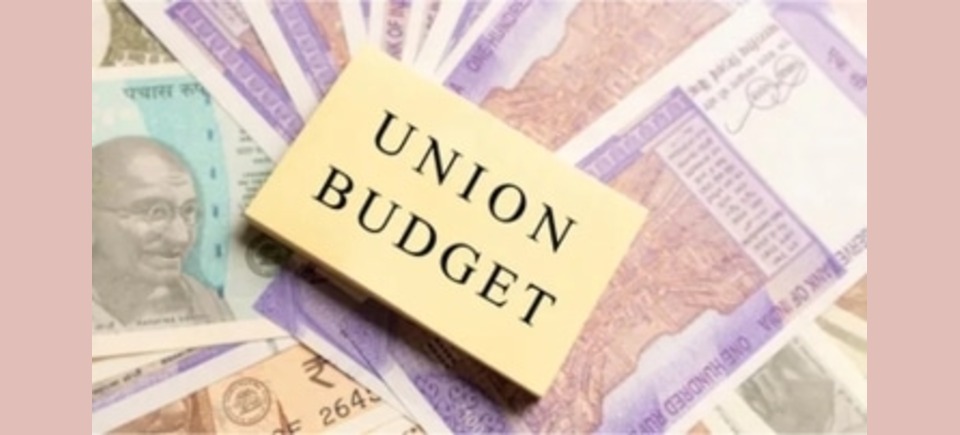
The Union Budget presented by Finance Minister Nirmala Sitharaman provides a roadmap for stability, growth and development, the head of an American non-profit business advocacy and strategic partnership group that is centred towards India said Wednesday.
Mukesh Aghi, President and CEO of US India Strategic and Partnership Forum (USISPF) also said that the budget took into consideration the needs of all sectors of the economy, reflecting the Indian Government’s commitment towards a prosperous and inclusive India.
“India’s Union Budget 2023-24 provides a roadmap for stability, growth and development. The 7 priorities and the economic agenda paves way for India @100 giving a strong impetus to growth, job creation and stabilizing the macro economy amidst global headwinds,” said Aghi.
“The Union Budget 2023 has taken into consideration the needs of all sectors of the economy, reflecting the Indian Government’s commitment towards a prosperous and inclusive India. Increased government spending in critical areas of the economy such as agriculture, Green Energy & infrastructure, education and new age technology adoption are indeed welcome announcements towards India @100,” Aghi said.
Welcoming the proposed rationalisation of tax rates in the Union Budget, USISPF praised the concessional tax rate of 15 per cent for cooperative societies setting up manufacturing or production and increased threshold limits for presumptive taxation schemes.
It welcomed the proposal to introduce a new programme that will boost research and innovation in the pharmaceutical sector through centres of excellence. This will greatly encourage the industry to invest more in research and development, it said.
The budget brings in measures for improving ease of doing business, USISPF said as it welcomed the proposals of decriminalisation of certain offences under the Income Tax Act, use of PAN as a common identifier and extended incorporation dates for eligible startups claiming tax exemption.
More information
https://www.moneycontrol.com/news/business/budget/union-budget-2023-provides-roadmap-for-stability-growth-and-development-usispf-9986401.html/amp

Reacting to India’s Union Budget 2023-2024, the Chief Executive Officer (CEO) and President of the US-India Strategic Partnership Forum, Dr Mukesh Aghi said that it provides a roadmap for stability, growth and development.
In an official statement, he added how the seven priorities of the Union budget pave the way for growth and job creation for India.
“India’s Union Budget 2023-24 provides a roadmap for stability, growth and development. The 7 priorities and the economic agenda pave way for India @100 giving a strong impetus to growth, job creation and stabilising the macro economy amidst global headwinds,” Aghi said.
Finance Minister Sitharaman started her Budget speech at 11 am on Wednesday, the last full Budget of the Modi government in its second term. Like the previous two Union Budgets, Union Budget 2023-24 is also presented in paperless form.
This year’s Budget holds much significance as the country is scheduled to have the next Lok Sabha election in April-May 2024.
Highlighting how the Union Budget 2023 has taken into consideration the needs of all sectors of the economy, the USISPF CEO said, “The Union Budget 2023 has taken into consideration the needs of all sectors of the economy, reflecting the Indian Government’s commitment towards a prosperous and inclusive India. Increased government spending in critical areas of the economy such as agriculture, Green Energy & infrastructure, education and new age technology adoption are indeed welcome announcements towards India @100.”
The budget session of the Parliament began on Tuesday with President’s address, subsequently tabling the Economic Survey for 2022-23. The formal exercise to prepare the annual Budget for the next financial year (2023-24) commenced on October 10.
The Economic Survey, tabled in the Parliament on Tuesday, noted India’s GDP is expected to grow in the range of 6 to 6.8 per cent in the coming financial year 2023-24. This is in comparison to the estimated 7 per cent this fiscal and 8.7 per cent in 2021-22.
More information
https://theprint.in/world/union-budget-2023-is-a-roadmap-for-stability-growth-says-us-india-strategic-partnership-forum/1348764/
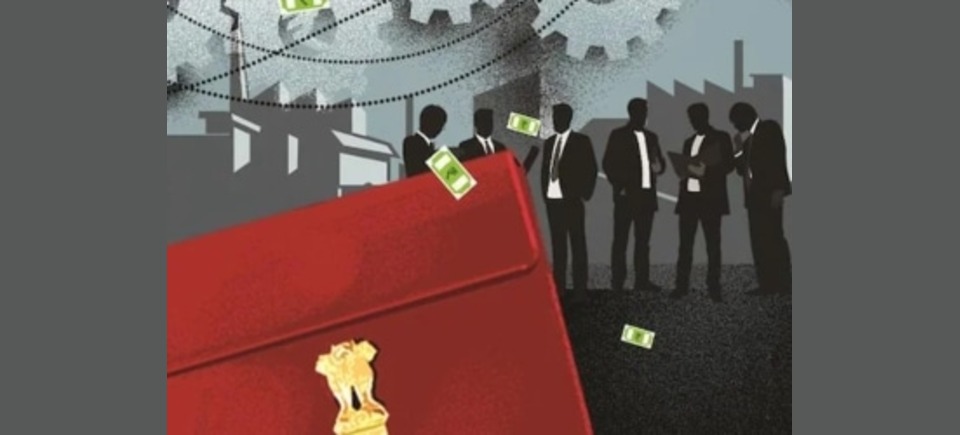
The Union Budget presented by Finance Minister Nirmala Sitharaman provides a roadmap for stability, growth and development, the head of an American non-profit business advocacy and strategic partnership group that is centred towards India said Wednesday.
Mukesh Aghi, President and CEO of US India Strategic and Partnership Forum (USISPF) also said that the budget took into consideration the needs of all sectors of the economy, reflecting the Indian Government’s commitment towards a prosperous and inclusive India.
India’s Union Budget 2023-24 provides a roadmap for stability, growth and development. The 7 priorities and the economic agenda paves way for India @100 giving a strong impetus to growth, job creation and stabilizing the macro economy amidst global headwinds,” said Aghi.
“The Union Budget 2023 has taken into consideration the needs of all sectors of the economy, reflecting the Indian Government’s commitment towards a prosperous and inclusive India. Increased government spending in critical areas of the economy such as agriculture, Green Energy & infrastructure, education and new age technology adoption are indeed welcome announcements towards India @100,” Aghi said.
Welcoming the proposed rationalisation of tax rates in the Union Budget, USISPF praised the concessional tax rate of 15 per cent for cooperative societies setting up manufacturing or production and increased threshold limits for presumptive taxation schemes.
It welcomed the proposal to introduce a new programme that will boost research and innovation in the pharmaceutical sector through centres of excellence. This will greatly encourage the industry to invest more in research and development, it said.
The budget brings in measures for improving ease of doing business, USISPF said as it welcomed the proposals of decriminalisation of certain offences under the Income Tax Act, use of PAN as a common identifier and extended incorporation dates for eligible startups claiming tax exemption.
More information
https://business-standard.com/article-amp/current-affairs/union-budget-provides-roadmap-for-stability-growth-and-development-usispf-123020101974_1.html
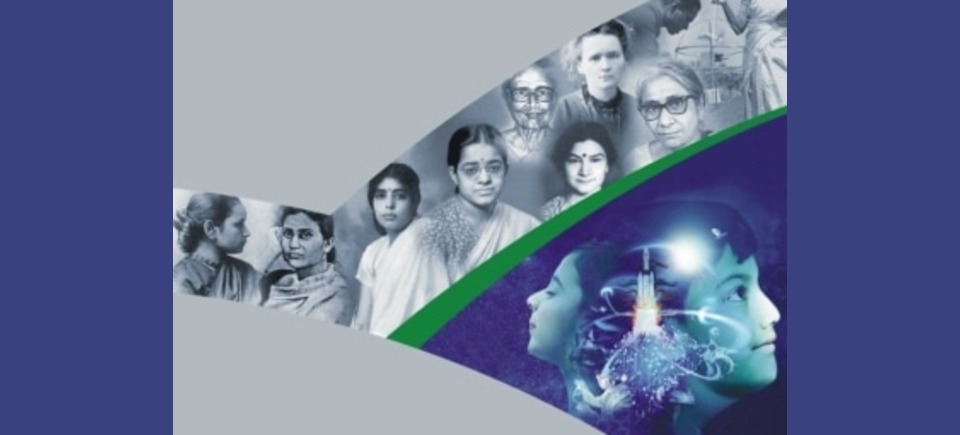
Washington, Jan 27 (PTI) A top India-centric American business advocacy group, in collaboration with various US government agencies and a prestigious university, has announced an alliance to increase the number of women in STEM education and the workforce in India.
The launch of the US-India Alliance for Women’s Economic Empowerment STEM Collaborative was announced by Mukesh Aghi, president and CEO of the US-India Strategic and Partnership Forum during the US-India Alliance Shatter Summit.
“India and the US tech synergy is well evinced in India being an IT powerhouse and the US having the most robust tech economy. However, there is still a lacuna in the number of male and female STEM graduates,” Aghi said.
More information
https://www.ptinews.com/news/international/alliance-launched-to-increase-number-of-women-in-stem-education-workforce-in-india/501950.html

A top India-centric American business advocacy group, in collaboration with various US government agencies and a prestigious university, has announced an alliance to increase the number of women in STEM education and the workforce in India.
The launch of the US-India Alliance for Women’s Economic Empowerment STEM Collaborative was announced by Mukesh Aghi, president and CEO of the US-India Strategic and Partnership Forum during the US-India Alliance Shatter Summit.
India and the US tech synergy is well evinced in India being an IT powerhouse and the US having the most robust tech economy. However, there is still a lacuna in the number of male and female STEM graduates, Aghi said.
For India to unleash its full potential, there needs to be a concerted effort to get more young girls and women in STEM (science, technology, engineering and maths), he said.
The US-India Alliance for Women’s Economic Empowerment is a public-private partnership between the State Department, USAID, USISPF, and George Washington University designed to catalyse transformational commitments to foster women’s economic advancement and inclusion in India, he said.
Under this Alliance, one of the key priorities has been to accelerate women in STEM education and the workforce, the USISPF said, adding that the new catalytic US-India Alliance for Women’s Economic Empowerment STEM Collaborative aims to identify barriers and create opportunities for advancing women and girls in STEM in India.
Radhika Shah, co-president of Stanford Angels and Entrepreneurs and Collaborative Founder and Co-Chair, in her remarks, said as a product of both the Indian and American STEM education systems and having grown up in Ahmedabad under the influence of a Gandhian grandfather, it is her honour to co-found and co-chair the catalytic collaborative.
We live in a moment of unprecedented opportunity as we race into the digital age an opportunity to ensure every girl and woman benefits from the digital revolution, including access to early STEM education, well-paying STEM jobs, and leadership at the very helm, she said.
The Collaborative intends to work with leaders across the public and private sectors in both countries’ tapping resources and expertise in government, civil society, and the private sector in order to foster dialogue and catalyse collaboration, resources, innovative solutions, and knowledge sharing, according to USISPF.
Temina Madon, Co-Founder of The Agency Fund and Collaborative Founder Co-Chair said, “To achieve our ambitious goals, we think it will be important to learn from Indian civil society organisations that have been supporting and empowering women for generations.
We also need to incorporate insights from economics and psychology, including how to cultivate a sense of belonging for women in technical work. Science and technology can uplift our countries and our diverse communities. But only if women are equal participants, she said.
Leaders in technology and those driving social change will be successful in increasing women’s participation in AI-related fields only if more girls are given the opportunity to pursue STEM, said Deepali Khanna, vice president and managing director, Asia Office, The Rockefeller Foundation, Collaborative Champion.
Michelle Nunn, CEO of CARE USA, Collaborative Champion said she is thrilled to see the launch of the bold collaborative.
CARE’s programmes around the world, including in India, focus on STEM activities as a key strategy to teach and train skills to help women and girls succeed and to transform communities and nations, she said.
Increased participation by Indian women in STEM is crucial for India to grow a healthy, diverse scientific ecosystem, helping to address a number of pressing societal concerns in public health, climate change, said Rajesh Gopakumar, director International Center for Theoretical Sciences, Collaborative Champion.
According to Cole Wilbur, president emeritus, The David and Lucile Packard Foundation, Collaborative Champion the philanthropy sector can play a key role in collaboration with the private sector and governments in bringing about this transition.
It has never been more important now to accelerate women and girls’ leadership in STEM, Wilbur said.
More information
https://www.business-standard.com/article/international/alliance-launched-to-boost-number-of-women-in-stem-workforce-in-india-123012700069_1.html
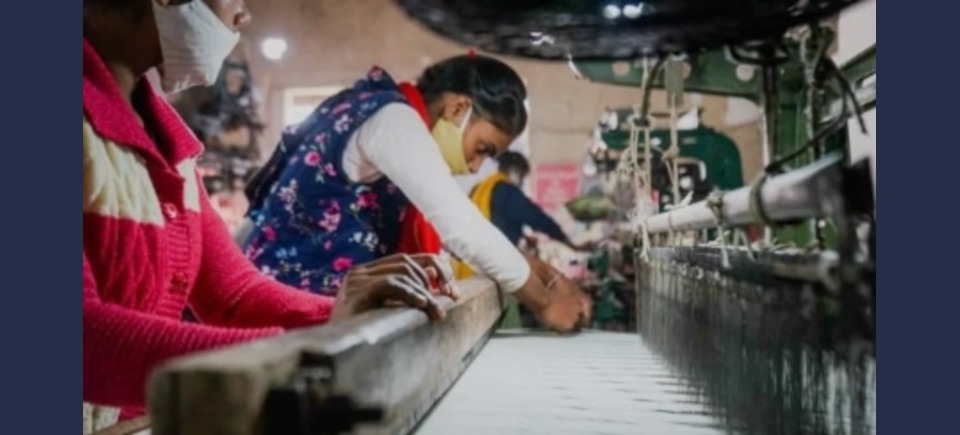
Washington, Jan 27 (PTI) A top India-centric American business advocacy group, in collaboration with various US government agencies and a prestigious university, has announced an alliance to increase the number of women in STEM education and the workforce in India.
The launch of the US-India Alliance for Women’s Economic Empowerment STEM Collaborative was announced by Mukesh Aghi, president and CEO of the US-India Strategic and Partnership Forum during the US-India Alliance Shatter Summit.
“India and the US tech synergy is well evinced in India being an IT powerhouse and the US having the most robust tech economy. However, there is still a lacuna in the number of male and female STEM graduates,” Aghi said.
“For India to unleash its full potential, there needs to be a concerted effort to get more young girls and women in STEM (science, technology, engineering and maths),” he said.
The US-India Alliance for Women’s Economic Empowerment is a public-private partnership between the State Department, USAID, USISPF, and George Washington University designed to catalyse transformational commitments to foster women’s economic advancement and inclusion in India, he said.
Under this Alliance, one of the key priorities has been to accelerate women in STEM education and the workforce, the USISPF said, adding that the new catalytic US-India Alliance for Women’s Economic Empowerment STEM Collaborative aims to identify barriers and create opportunities for advancing women and girls in STEM in India.
Radhika Shah, co-president of Stanford Angels and Entrepreneurs and Collaborative Founder and Co-Chair, in her remarks, said as a product of both the Indian and American STEM education systems and having grown up in Ahmedabad under the influence of a Gandhian grandfather, it is her honour to co-found and co-chair the catalytic collaborative.
“We live in a moment of unprecedented opportunity as we race into the digital age an opportunity to ensure every girl and woman benefits from the digital revolution, including access to early STEM education, well-paying STEM jobs, and leadership at the very helm,” she said.
The Collaborative intends to work with leaders across the public and private sectors in both countries’ tapping resources and expertise in government, civil society, and the private sector in order to foster dialogue and catalyse collaboration, resources, innovative solutions, and knowledge sharing, according to USISPF.
Temina Madon, Co-Founder of The Agency Fund and Collaborative Founder Co-Chair said, “To achieve our ambitious goals, we think it will be important to learn from Indian civil society organisations that have been supporting and empowering women for generations.”
“We also need to incorporate insights from economics and psychology, including how to cultivate a sense of belonging for women in technical work. Science and technology can uplift our countries and our diverse communities. But only if women are equal participants,” she said.
“Leaders in technology and those driving social change will be successful in increasing women’s participation in AI-related fields only if more girls are given the opportunity to pursue STEM,” said Deepali Khanna, vice president and managing director, Asia Office, The Rockefeller Foundation, Collaborative Champion.
Michelle Nunn, CEO of CARE USA, Collaborative Champion said she is thrilled to see the launch of the ‘bold’ collaborative.
“CARE’s programmes around the world, including in India, focus on STEM activities as a key strategy to teach and train skills to help women and girls succeed and to transform communities and nations,” she said.
“Increased participation by Indian women in STEM is crucial for India to grow a healthy, diverse scientific ecosystem, helping to address a number of pressing societal concerns in public health, climate change,” said Rajesh Gopakumar, director International Center for Theoretical Sciences, Collaborative Champion.
According to Cole Wilbur, president emeritus, The David and Lucile Packard Foundation, Collaborative Champion the philanthropy sector can play a key role in collaboration with the private sector and governments in bringing about this transition.
It has never been more important now to accelerate women and girls’ leadership in STEM, Wilbur said.
More information
https://www.moneycontrol.com/news/business/alliance-launched-to-increase-number-of-women-in-stem-education-workforce-in-india-9944731.html

Washington, Jan 27 (PTI) A top India-centric American business advocacy group, in collaboration with various US government agencies and a prestigious university, has announced an alliance to increase the number of women in STEM education and the workforce in India.
The launch of the US-India Alliance for Women’s Economic Empowerment STEM Collaborative was announced by Mukesh Aghi, president and CEO of the US-India Strategic and Partnership Forum during the US-India Alliance Shatter Summit.
“India and the US tech synergy is well evinced in India being an IT powerhouse and the US having the most robust tech economy. However, there is still a lacuna in the number of male and female STEM graduates,” Aghi said.
“For India to unleash its full potential, there needs to be a concerted effort to get more young girls and women in STEM (science, technology, engineering and maths),” he said.
The US-India Alliance for Women’s Economic Empowerment is a public-private partnership between the State Department, USAID, USISPF, and George Washington University designed to catalyse transformational commitments to foster women’s economic advancement and inclusion in India, he said.
Under this Alliance, one of the key priorities has been to accelerate women in STEM education and the workforce, the USISPF said, adding that the new catalytic US-India Alliance for Women’s Economic Empowerment STEM Collaborative aims to identify barriers and create opportunities for advancing women and girls in STEM in India.
Radhika Shah, co-president of Stanford Angels and Entrepreneurs and Collaborative Founder and Co-Chair, in her remarks, said as a product of both the Indian and American STEM education systems and having grown up in Ahmedabad under the influence of a Gandhian grandfather, it is her honour to co-found and co-chair the catalytic collaborative.
“We live in a moment of unprecedented opportunity as we race into the digital age – an opportunity to ensure every girl and woman benefits from the digital revolution, including access to early STEM education, well-paying STEM jobs, and leadership at the very helm,” she said.
The Collaborative intends to work with leaders across the public and private sectors in both countries’ tapping resources and expertise in government, civil society, and the private sector in order to foster dialogue and catalyse collaboration, resources, innovative solutions, and knowledge sharing, according to USISPF.
Temina Madon, Co-Founder of The Agency Fund and Collaborative Founder Co-Chair said, “To achieve our ambitious goals, we think it will be important to learn from Indian civil society organisations that have been supporting and empowering women for generations.” “We also need to incorporate insights from economics and psychology, including how to cultivate a sense of belonging for women in technical work. Science and technology can uplift our countries and our diverse communities. But only if women are equal participants,” she said.
“Leaders in technology and those driving social change will be successful in increasing women’s participation in AI-related fields only if more girls are given the opportunity to pursue STEM,” said Deepali Khanna, vice president and managing director, Asia Office, The Rockefeller Foundation, Collaborative Champion.
Michelle Nunn, CEO of CARE USA, Collaborative Champion said she is thrilled to see the launch of the “bold” collaborative.
“CARE’s programmes around the world, including in India, focus on STEM activities as a key strategy to teach and train skills to help women and girls succeed and to transform communities and nations,” she said.
“Increased participation by Indian women in STEM is crucial for India to grow a healthy, diverse scientific ecosystem, helping to address a number of pressing societal concerns in public health, climate change,” said Rajesh Gopakumar, director International Center for Theoretical Sciences, Collaborative Champion.
According to Cole Wilbur, president emeritus, The David and Lucile Packard Foundation, Collaborative Champion the philanthropy sector can play a key role in collaboration with the private sector and governments in bringing about this transition.
It has never been more important now to accelerate women and girls’ leadership in STEM, Wilbur said.
More information
https://theprint.in/world/alliance-launched-to-increase-number-of-women-in-stem-education-workforce-in-india/1337535/

The US industry has urged FM to rationalize and simplify direct and indirect taxes in India.
A top US strategic and business advocacy group has urged Finance Minister Nirmala Sitharaman to simplify and rationalize India’s direct and indirect taxation system. The group believes that this move would increase the confidence of global investors and lead to greater foreign direct investment.
In its submission to the Finance Ministry ahead of the annual budget presentation, US-India Strategic and Partnership Forum (USISPF) has urged the ministry to rationalize corporate tax rates for foreign companies and harmonize holding periods and rates for different instruments for capital gain tax reforms.
It also urged the Finance Minister to extend the concessional tax regime to Foreign Portfolio Investment (FPI) from investing in securities while requesting her to reiterate India’s commitment towards the global tax deal.
The top recommendations of the US-based forum include advocating for a stable and predictable tax environment, improving the ease of doing business environment, rationalizing the cost of doing business, and rationalizing tax rates and tariffs. It has also sought tax incentives for specific sectors like renewable energy and R&D investment in the health sector.
On the topic of indirect taxes, USISPF has recommended reducing the customs duty rates for x-ray machines from 10 percent to 7.5 percent and provision of customs duty exemption on all items imported by specified research and development units while seeking clarification on the customs duty exemptions provided to oil and natural gas companies.
Additionally, USISPF urged the finance minister to reverse the increase in customs duty on nutritional products, recognizing the importance of the product and encouraging the availability of scientifically designed nutritional food in India.
In terms of customs tariffs and duties, the group advocated for addressing ambiguities in the customs tariff act on telecom products, extending concessional customs duty to advanced biofuel projects, and strengthening the process on the ground with regard to trade facilitation schemes such as CAROTAR and Faceless Assessment.
In an interview with CNBC-TV18, USISPF President Mukesh Aghi emphasized that India has the potential to target $100 Billion in FDI while stating that the upcoming budget has to be micro-focused on capex and infrastructure spending to fulfill this goal.
More information
https://www.livemint.com/news/india/budget-2023-top-us-body-urges-fm-to-simplify-direct-indirect-taxes-in-india-11674879952146.html
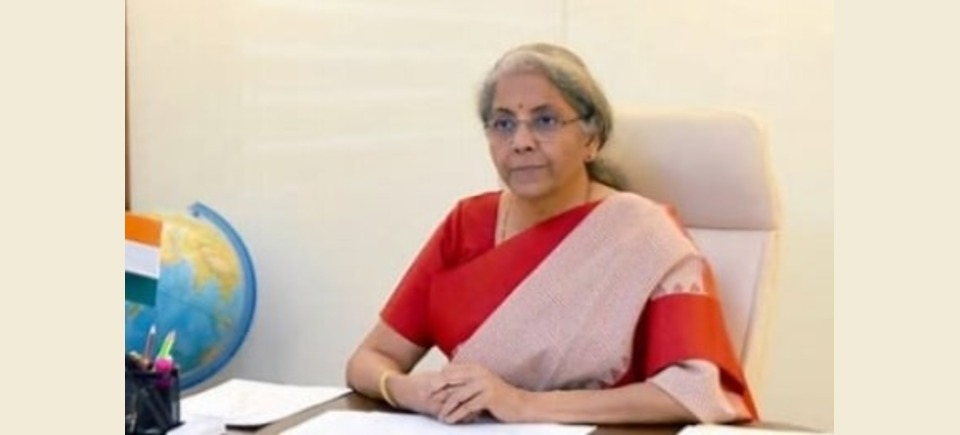
Ahead of the annual budget presentation, an India-centric top US strategic and business advocacy group has urged Union Finance Minister Nirmala Sitharaman to simplify and rationalise direct and indirect taxation system in India, a move it believes would increase the confidence of global investors and yield greater foreign direct investment.
Direct taxes can be in the form of income tax, capital gains tax or securities transaction tax, while indirect taxes such as GST, Customs Duty or VAT are levied on all end-consumers to buy any goods or services.
“Rationalise corporate tax rates for foreign companies,” said the US-India Strategic and Partnership Forum (USISPF) in its submission to the finance ministry ahead of the annual budget presentations on February 1. It said that the rate for foreign companies, including banks be reduced to bring parity and sought to rationalise tax for new manufacturing companies.
Urging India to simplify capital gain tax reforms, USISPF sought harmonising holding periods and rates of different instruments.
“Reiterate India’s commitment to the global tax deal,” it said and urged the Union Finance Minister to extend the concessional tax regime to Foreign Portfolio Investment (FPI) from investment in securities. USISPF has also suggested tax incentives to specific sectors like renewable energy and R&D investment in the health sector.
Among the Forum’s recommendations include advocating for a stable and predictable tax environment, improving the ease of doing business environment, rationalisation of the cost of doing business, and rationalisation of tax rates and tariffs.
On indirect taxes, the USISPF sought clarification on customs duty exemptions provided to oil and natural gas companies, reduction in customs duty rates for x-ray machines from 10 per cent to 7.5 per cent and providing customs duty exemption on all items imported by specified research and development units.
USISPF urged the finance minister to roll back the customs duty increase on nutritional products considering the importance and significance of the product and encourage the availability of scientifically designed nutritional food in India.
More information
https://www.dailypioneer.com/2023/business/us-industry-urges-fm-to-rationalise–simplify-direct-and-indirect-taxes-in-india-us-industry-urges-fm-to-rationalise–simplify-direct-and-indirect-taxes-in-india.html
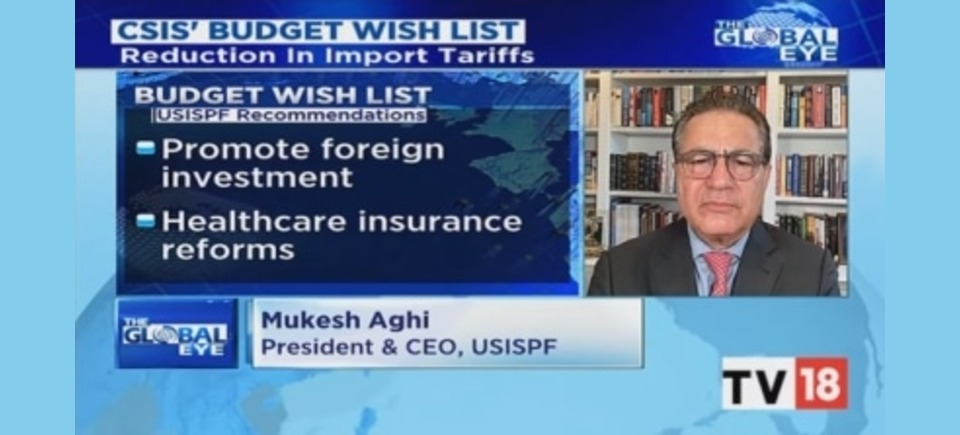
By Parikshit Luthra
Budget 2023 is around the corner and the US-India Strategic Partnership Forum (USISPF) has some key asks from Finance Minister Nirmala Sitharaman and these include — promoting digital payments, reforms in healthcare and insurance segments and lastly simplifying foreign investments.
The Center for Strategic and International Studies (CSIS) recommends expediting settlement of contractual disputes, reducing import tariffs and improving infrastructure for MSMEs for ease of doing business with India.
The government has been taking steps to attract foreign companies to set up manufacturing plants in India — the government has also taken steps to simplify regulations for foreign investors.
Mukesh Aghi, President & CEO of USISPF, believes that India has a significant opportunity to attract foreign investment in the coming years. He notes that the country has the potential to target $100 billion in FDI by 2023 but emphasises the importance of a budget that is “micro-focused” on capex and infrastructure spending in order to achieve this goal.
“India is the chair of the G20, India is the fastest growing economy in the world today and there is a global disruption in supply chain. So that means it is an opportunity for India to target at least $100 billion FDI in this year itself. So that means we need to have a budget which is much more focused on capital investment and infrastructure investment. So what we are looking for is a budget which is lot more focused on growth for the next 10 years,” Aghi said.
Arvind Panagariya, the former Vice Chairman of NITI Aayog, notes that India has a great opportunity to capitalise on the “China +1” trend but emphasises the need for more liberalisation in order to make the most of this opportunity.
“China +1 is really a great opportunity for India to capitalise on the changed environment in which virtually all multi-nationals are seeking at least one more destination for their supply chains. So from that perspective, India has to continue to generally open up the economy and so the progress on the free trade agreements is extremely important. So free trade agreements and in general trade liberalisation are key,” Panagariya said.
Anit Mukherjee, an Adjunct Fellow at Wadhwani and the Chair of US-India Policy Studies at CSIS, also sees India as a beacon of stability in a difficult world. However, he cautions that a populist budget in 2023 could undermine this stability and notes that the budget should focus on enabling infrastructure, while providing foreign investors with stability in the taxation and investment regime.
Aghi also emphasised on the need for India to make dispute resolution faster and smoother, as well as making the ease of doing business much easier to match on a global basis.
Overall, these experts agree that India has a significant opportunity to attract foreign investment and become a hub for alternative supply chains in the coming years. However, they also stress the importance of liberalisation and a focus on infrastructure and ease of doing business in order to achieve this goal.
More information
https://www.cnbctv18.com/economy/budget-2023-capex-infrastructure-spending-usispf-nirmala-sitharaman-15787551.htm

Washington, DC: As we bid adieu to 2022, we reflect on the milestones that New Delhi has achieved, none as important as celebrating 75 years of Independence, a landmark in the country’s journey from its humble beginnings as a newly independent country to now a robust economy, the fifth largest global economic powerhouse.
The clock moves forward to 2023, and earlier on 1 December 2022, India assumed the Presidency for the G-20 summit from Indonesia. The outlook for next year has global economic headwinds as the Russia-Ukraine conflict will continue to dominate global affairs. As a result of which, we are witnessing inflationary trends, rising interest rates, and signs of recession, followed by escalating energy prices and worries about food shortage.
As I previously note, India’s G-20 Presidency propels New Delhi’s role as an emerging leader in the global scenario. India has long espoused a multilateral world order over a previously bipolar or unipolar world. New Delhi has stated that key stakeholders need to reflect on the evolution of the global economy over the past 70 years. The G-20 agenda for 2023 focuses on numerous ideas and issues including climate financing, energy security, international development cooperation as well as inclusive, equitable, and sustainable growth
India’s leadership will give a stronger voice to the challenges the developing world faces. New Delhi’s priorities include climate action, critical and emerging technologies, resilient supply chains, and vaccines, as we are witnessing a rise in Covid cases with a new variant that has emerged in China. India’s goal will be to build an inclusive ecosystem with holistic mechanisms to address critical global issues for the private sector.
Rebuilding supply chains is a major priority since the pandemic has disrupted the global flow of goods and services. What’s evinced in the boardroom is that companies are increasingly looking for a China-plus-one strategy. Strict Covid protocols in Beijing and followed by the outbreak of a new variant have worried global investors. Furthermore, there is a conscious need to diversify global supply chains to mitigate the proverbial all eggs in one manufacturing basket scenario.
India is a fantastic prospect for global corporations looking for alternate manufacturing destinations. Having interacted with state delegations in Uttar Pradesh, Assam, Gujarat, Tamil Nadu, and Karnataka, there is a conscious effort by state leadership to present their respective states as robust manufacturing destinations.
Global tech giant and innovation leader, Apple is looking to make the iPhone 14 in India. This is courtesy of how the Central government focus on manufacturing in form of PLI schemes and the Make in India strategy is succeeding in wooing top American tech companies. States too, in addition to the Centre’s scheme have interesting initiatives for high-end manufacturers. As India strives to make manufacturing a robust part of its economy through schemes such as Production Linked Incentive (PLI) and Make in India, the G-20 will seek to link global economies closer, and showcase India’s ability as a viable global manufacturing destination.
Apart from manufacturing, climate action, vaccines and supply chains, New Delhi will focus on critical and emerging technologies, space cooperation, AI for good as India continues to spurt unicorns in the new engine of economic growth that it has become.
Prime Minister Narendra Modi’s credo has been a good governance model. New Delhi, now at the helm of G-20, has an important chance to present a clarion call for emerging economies to adopt strong governance and collaborative model on global economic issues.
The G-20 forum is an august platform to discuss global economic issues and not fraught geopolitical ones. However, New Delhi has always espoused diplomatic dialogue and has called for all sides to de-escalate the conflict. Furthermore, Brazil, the next President in 2024, and India are both part of BRICS, along with Russia. India can use its unique position between the West and Moscow and its Presidency to urge for cessation of hostilities and prioritize larger and immediate concerns in health, climate, and supply chains, all of which impact the emerging market world greatly.
Prime Minister Modi has touched on digital transformation and data for good, as India continues to build on its digital economy, one that its Presidency will advocate as key to inclusive growth for the emerging market world. India’s goals for 2023, during its G-20 Presidency, will be to jointly work with its G-20 partners towards this objective. Digital solutions will not just help in innovation for the emerging market world but will be critical in the fight against climate change and mitigate the economic gap between the haves and the have-nots, with the rise in EdTech and MedTech.
India has strong comparative advantages as an investment destination over other economies, and none more so than its demographic dividend, with a large population under 35, New Delhi will project its role as a young, thriving, robust democracy and economic powerhouse at the G-20 summit in 2023.
Mukesh Aghi is the President & Chief Executive Officer of the US- India Strategic Partnership Forum.
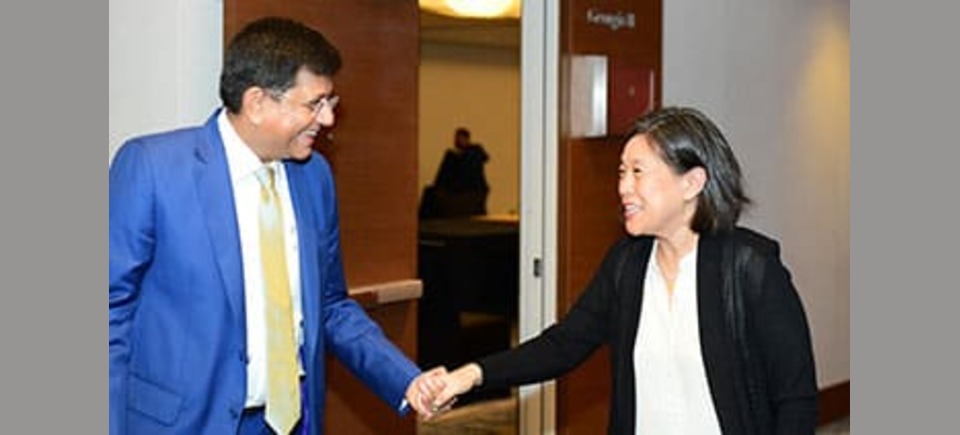
Mukesh Aghi, president & CEO of the US- India Strategic Partnership Forum, said on the occasion of Indian minister Piyush Goyal’s visit to the US that, the trade policy meeting will look into the impediments and how to get rid of them.
Goyal is in the US to participate the 13th Trade Policy Forum (TPF).
“I do not think we will talk about GSP here,” Aghi told indica over the phone.
However, a few experts believe GSP will benefit India, though it’s hard to achieve, now that it’s in the hands of the US Congress.
Aghi feels that instead of the Generalized System of Preferences (GSP), the two countries ought to talk about bigger issues. “We are not just about trade,” he said. “It’s also about geo-politics, security, education, and immigration. Are we basically bringing in more secure supply chains to a country like India from China?”
He said that the US is focused “more on semi-conductor partnership, digital partnership, secure supply chains especially in generic drugs, and on defense manufacturing between two countries. We are also looking at food.”
He said GSP is not an impediment in the discussion at the moment.
He said that India’s hands are full at the moment with free trade agreements (FTAs) signed with the UAE, Australia, Israel and UK. He is not sure of an FTA between the US and India at the moment.
Official data suggests that bilateral trade between the US and India increased to $119.5 billion in 2021-22 from $80.5 billion in 2020-21. India received $55.61 billion in foreign direct investment from the US between April 2000 and June 2022.
The TPF is chaired by commerce and industry minister from the Indian side and United States Trade Representative (USTR) from the US side.
The TPF is designed to resolve trade and investment issues between the two countries, and consists of five focus groups: Agriculture, Investment, Innovation and Creativity (intellectual Property Rights), Services, and Tariff and Non-Tariff Barriers.
Dinsha Mistree, a research fellow at the Hoover Institution, at Stanford University, where he manages the Program on Strengthening US-Indian Relations said about Goyal’s visit that GSP would be good for India and should be part of any US- India trade discussion. “US and India should be doing a lot more to improve trade and investment, GSP is perhaps the most politically tractable policy to revisit. But GSP requires congressional reauthorization and only then can India be classified,” Mistree said.
Mistree added, “It is mostly in Congress’s hands and it’s still too early to say if it gets politicized. GSP is mostly out of India’s hands. Doing things to attract supply chains are much more doable in theory, but India has always been really bad at industrial policy.”
Mistree also pointed to tariffs says the Indian government has increased tariffs in a number of areas, including input goods. Infrastructure is a factor as well. “India also needs to become much more friendly to foreign business operations,” Mistree said. “Why do you think Ford and Citibank exited from India last year?”
He added, “They were smart enough not to blame government and said they were streamlining operations, but it’s no secret that both companies have had difficulties operating in India. Citi had been there for quite a while, like almost a century as well. It’s a challenging business environment.”
He said, “It’s the overall environment, but tax rationalization could help.”
Mark Linscott, senior fellow with the Atlantic Council’s South Asia Center, stated on the council website: “The first and fifth largest economies in the world have compelling national interests in solidifying and expanding their strategic partnership, yet the trade relationship is stuck with prospects for improvements dim. Two possibilities for 2023 could substantially alter the dynamics and put the trade relationship on a better, healthier course for the future. The first would be reauthorization of the US Generalized System of Preferences (GSP) program by Congress so that the two sides could come back to the table in the TPF with enticements to offer for concluding a wide-ranging trade agreement. If the United States could offer the reinstatement of India’s GSP benefits, the prospects are strong that the two sides could reach an agreement on a series of issues, covering agriculture, health-sector products, digital services, and new trade issues (e.g., environmental sustainability and more equitable distribution of the benefits of trade).”
He added, “The second would be a reversal of the Biden administration’s allergy to negotiating free trade agreements (FTAs), which has handicapped the United States in competing in global markets as their trading partners negotiate preferential trade terms among themselves (India concluded an FTA with the United Arab Emirates (UAE) and an interim FTA with Australia in 2022 and is actively negotiating with the United Kingdom, European Union, and Canada). The playing field has become less level for US export interests as a result, and a more captive US domestic market is neither realistic nor more beneficial. While it is unlikely that India would be at the top of the list for early negotiation of an FTA if the Biden administration changes course (the United Kingdom and Kenya are more likely candidates), even the start of an exploratory process for a US-India FTA would kick-start the expansion of the trade relationship.”
If neither of these possibilities emerge over the next year, it is likely that the TPF will continue to fall short of expectations. Both governments should consider the consequences of a trade relationship that has been going nowhere for too long.
Another senior fellow at the Atlantic Council, Atman Trivedi says in his statement on the council website, “Those searching for a silver-lining can hope the ministerial will inject new momentum into bilateral trade discussions for when the GSP is back in play. Ambassador and US Trade Representative Katherine Tai and Indian Minister of Commerce and Industry Piyush Goyal are thought to enjoy a good rapport. A positive and constructive session would be welcome in advance of India hosting the next round of Indo-Pacific Economic Framework negotiations on February 8-11. Those discussions will center on supply chains, clean economy, and fair economy, but not market access. India opted not to join IPEF’s trade pillar last September but signed-up for the other trade-adjacent topics.”
More Information
https://indicanews.com/will-gsp-help-in-us-india-trade-mukesh-aghi-says-no-other-experts-differ/
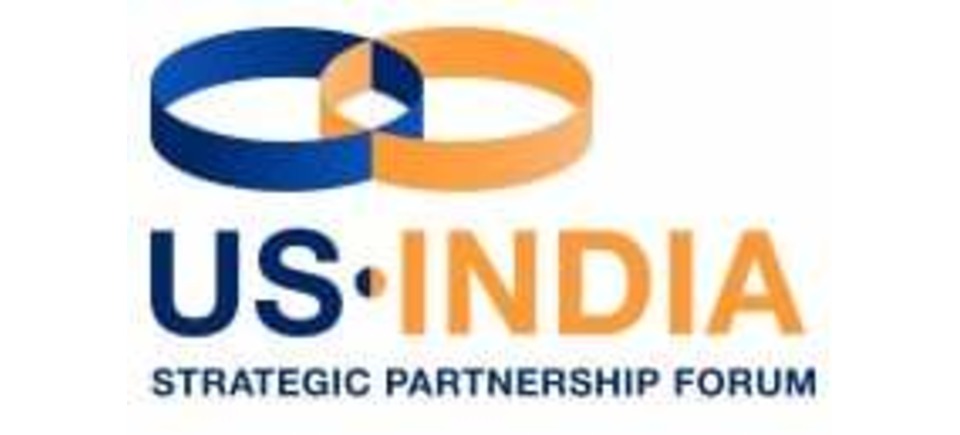
New Delhi, Delhi, India: Quad+, a journal dedicated to the intersection of geopolitics and technology, has been launched by the US-India Strategic Partnership Forum (USISPF). The journal will have a special focus on understanding and analyzing the implications of the Quad, the new strategic coalition between the United States, India, Australia, and Japan.
From its origins as a humanitarian response to the Asian tsunami, the Quad has come to represent a new model of a plurilateral organization. While informal and non-binding, it is now defining the strategic landscape of supply chains and critical technologies across half the world. While it has no doctrine, it is anchoring the emerging Indo-Pacific strategic environment. Quad+ will seek to monitor and explain the organization’s evolution in the coming years and how it reflects the rise of critical technology in contemporary geopolitics.
The first edition will lead with an interview by Dr. S Jaishankar, the Indian Minister of External Affairs, about the centrality of technology to world events today. It also includes four articles by strategic thinkers from the four Quad member-states on the relevance of the organization to their respective countries. There is also an article by Anirudh Suri, author of the book The Great Tech Game, on how and why technology has become the defining element of world affairs.
Commenting on the launch, Mukesh Aghi, President, and CEOof USISPF stated, “Washington and New Delhi have strengthened their bilateral partnership through the Quad. Hence with Quad+, our focus has been to seek contributions in the form of timely, thought-provoking, riveting articles and analyses that highlight issues across the realm of geopolitics, business, trade, tech, climate, and healthcare pertaining to the four partners. The Quad+ will be housed under the USISPF banner but will remain editorially independent and non-partisan.”
Pramit Pal Chaudhuri, a New Delhi-based journalist of almost 35 years of experience, has been appointed the editor for the Quad+. He will be assisted by USISPF teams across the US and India.
The Quad+ will be a quarterly journal, targeting four publications for the year. Each quarterly will have a unique theme set by the editor.
About the U.S.-India Strategic Partnership Forum (USISPF)
The US-India Strategic Partnership Forum (USISPF) is committed to creating the most powerful partnership between the United States and India. As the only independent not-for-profit institution dedicated to strengthening the U.S.-India partnership in Washington, D.C., and in New Delhi, USISPF is the trusted partner for businesses, non-profit organizations, the diaspora, and the governments of India and the United States.
More Information
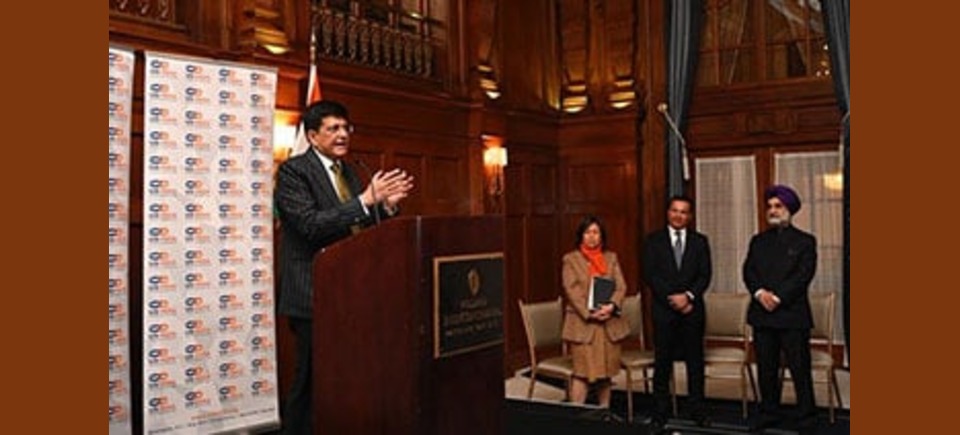
He spoke about the deepening of India-US trade engagement and the tremendous opportunities that lie ahead for both nations.

At the 13th Trade Policy Forum (TPF) ministerial talks held in Washington DC, Union ministerPiyush Goyal and US trade representative Katherine Tai hailed the fact that bilateral trade in goods and services had reached $160 billion in 2021, but also recognised that the full potential of the trade relationship remained “unfulfilled”.
Washington: Committing themselves to expanding their already growing trade relationship, India and the United States (US) have decided to build on the environment of trust to create resilient supply chains, resolve their existing trade disputes at World Trade Organisation (WTO) through bilateral mechanisms, work on expanding market access for each other’s products, and intensify their engagement through meetings of specific trade-related working groups on a quarterly basis.
At the 13th Trade Policy Forum (TPF) ministerial talks held in Washington DC on Wednesday, union minister for commerce and industry Piyush Goyal and US Trade Representative Katherine Tai hailed the fact that bilateral trade in goods and services had reached $160 billion in 2021, but also recognised that the full potential of the trade relationship remained “unfulfilled”, according to a joint statement released at the end of the talks.
Goyal told reporters that the TPF, since its relaunch in November 2021, had evolved into a “robust and outcome-oriented discussion” and was helping create a “smoother, more friendly and trusted environment for businesses to expand their trade and investment between the two countries”.
“The TPF is truly one platform where we have free and frank discussions, some which are predefined and some which emerge from the discussions.” These include issues of mutual interest as well as issues on which there are concerns on either side, the minister said.
US welcomes draft data law
Goyal said that the US has welcomed, prime facie, India’s draft Digital Personal Data Protection Bill that was released for public consultations at the end of November and appreciated American suggestions in the regard.
Both the US administration and tech industry had been concerned about India’s data localisation requirements, but the new proposed legislation states, “The Central Government may, after an assessment of such factors as it may consider necessary, notify such countries or territories outside India to which a Data Fiduciary may transfer personal data, in accordance with such terms and conditions as may be specified.” This is seen as opening the doors for cross-border data flows to trusted partners and geographies, of which the US is viewed as a key candidate.
Goyal said, “I must place on record our deep appreciation for the many guidance notes or suggestions we have received from the US from time to time on our digital laws and data protection and privacy laws so that we can align them with the needs of the world and help Indian businesses with their outreach with digital technologies.”
Pointing out that India is one of the largest suppliers on the information technology services side to the US, and that there is a “shared interest on both sides” to have a greater flow of data, Goyal said, “The new law placed for public consultations by ministry of electronics and information technology (Meity) was very very much appreciated by the US side and they do see that our effort to align the needs of industry, while maintaining the highest standards of data protection and privacy, has been brought out beautifully in the new law. The US side has expressed their prima facie satisfaction with the new law and will continue to engage with Meity.”
The joint statement said that both sides affirmed the importance of a conducive ecosystem for digital trade and agreed to enhance their engagement on the issue. In addition, the statement said that Goyal highlighted India’s interest in the potential of digital health, “particularly telemedicine services as an element of continuity of care during health emergencies.”
Trade convergences and divergences
Building on the achievements of the 2021 TPF, which enabled pork exports from US and mango exports from India among other steps, Wednesday’s talks opened up the prospect of the export of wild caught shrimps from India to the US.
The joint statement said that both sides had welcomed the finalisation of the turtle excluder device (TED) design, whose trials will help minimise the impact of fishing on sea-turtle populations. Goyal explained that wild caught shrimp exports had been banned by the US because of the concerns of the impact on turtles. “We hope that these trials in India will complete in the coming few months so that wild caught shrimps can be exported to the US. It was a product of good acceptance in the US market, good taste and has good potential for trade between the two countries.”
India and the US have also agreed to create a new working group on resilient trade.
The group, according to the joint statement, will focus on trade facilitation “which is particularly relevant to the construction of durable and resilient supply chains”; sustainable and inclusive growth “including cooperative engagement to promote labour rights and workforce development”; expanding dialogue on “good regulatory practices”; and the role of trade in contributing to environmental protection, including issues related to “mobilisation of sustainable finance and scaling up of clean technologies”, circular economy, and sustainable lifestyle choices.
India also highlighted, according to the joint statement, its interest in restoration of its beneficiary status under the US Generalized System of Preferences (GSP), which was revoked by the Donald Trump administration. But Goyal said that while he had placed the demand on record, it was not an issue that ranked high up on Indian priorities.
“I have not heard any significant clamour from Indian industry to focus our energies on the GSP issue. I have raised it. It is an issue that the Congress will have to take a call on. But it is not an issue that is high on our priority list or something on which we spend a lot of time. It was discussed, but more in passing. I can assure you that trade continues to expand very rapidly and I don’t think GSP withdrawal has been to the detriment of our growing trade ties.”
The two sides also discussed the contentious issue of intellectual property (IP), with the US, according to the joint statement, welcoming India’s ongoing domestic consultations regarding the “administration of its IP regime, including on the treatment of business confidential information related to working of patents, procedures for patent application oppositions, and streamlining of trademark infringement investigations”.
The two ministers also acknowledged that there remained work to be done to finalise access for certain agricultural products of interest to both sides and expressed their intent to increase dialogue on food and agricultural trade issues in 2023.
Among other issues, the ministers spoke about India’s draft Drugs, Medical Devices and Cosmetics Act; the streamlining of regulations under the Mandatory Testing and Certification of Telecommunication Equipment and Compulsory Registration Order; enhancing trade in professional services between the two countries; and cooperation in the fin tech sector.
Mobility and totalisation pact
The minister said that India found resonance vis a vis its request that business visa processing times need to be expedited so that trade, investment and business doesn’t suffer.
“India has made the request to the US that it may speed up issuance of regular business visas where people come for short trips. We are delighted that the movement of professional and skilled workers, students, investors, business travellers are expanding between the two countries. We are grateful that the US was able to process student visas on an expedited visas so that our students were able to come in the post-Covid context in the fall of 2022.”
On the long-pending issue of the totalisation pact — which deals with the issue of social security deposits of Indian professionals during their residency in the US and is a key Indian concern — the joint statement said that the ministers had acknowledged recent discussions on the issue, and “upon the receipt of additional information” from India, encouraged further engagement to arrive at an early outcome.
Industry responses
Commenting on the TPF, Mukesh Aghi, president and chief executive officer of the US India Strategic Partnership Forum, said that trade was a core pillar of the India-US strategic partnership – and since TPF’s relaunch, both sides had come together to resolve outstanding issues, find new areas of cooperation, and explore new areas of mutual interest.
“Despite the pandemic, the trade relationship is growing leaps and bounds. Numbers show that the US has overtaken China to be India’s largest trading partner,” Aghi said, adding that the creation of the working group on resilient trade was a milestone.
Ambassador (retired) Atul Keshap, the president of the US-India Business Council, said that the forum was an important step in sustaining the effort to strengthen bilateral commercial ties. “We are especially encouraged by both sides’ expressed intent to reconvene the TPF on a quarterly basis and the statement’s clear recognition that the potential of the bilateral relationship remains unfulfilled.” Keshap said that the creation of the working group on resilient trade reflected the urgent demand for a “high-standard, high-trust, and highly dependable trading ecosystem from industry and civil society”.
Experts offered a mixed assessment of the talks and Goyal’s visit. Richard M Rossow, the Wadhwani Chair in US India Policy Studies at The Center for Strategic and International Studies in Washington DC and an authority on the bilateral economic relationship, said that the minister’s visit was probably more notable for its engagements with business leaders than the formal talks with his counterpart. “As companies further look to diversify regional manufacturing out of China, India is under consideration—and Minister Goyal is a very good spokesperson and shepherd.”
Rossow said that the TPF itself lacked quantifiable outcomes that will alter trade. “But such summits can accelerate action behind the scenes. And some of the points outlined in the Joint Statement like the possible resumption of GSP and continuing talks over a Social Security totalisation agreement will have a stimulative effect on commercial ties if they are ultimately concluded.”
More Information
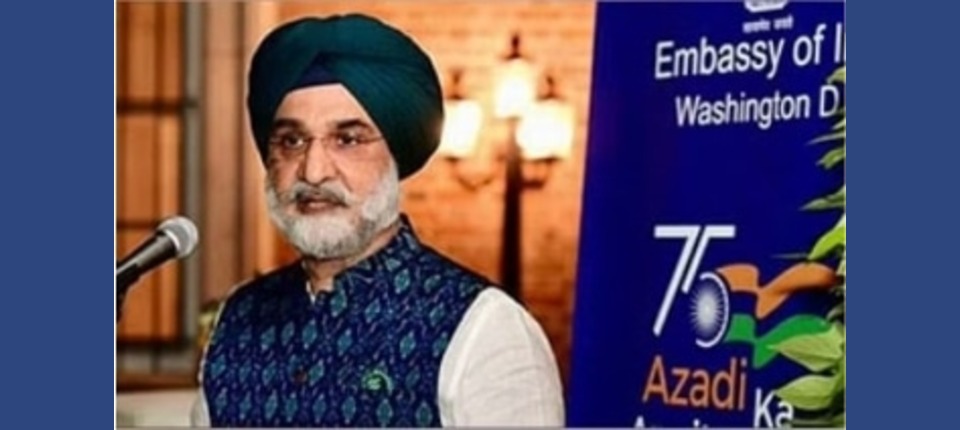
Washington [US], December 1 (ANI): After the Indian government extended Ambassador Taranjit Singh Sandhu’s tenure, a US-based business advocacy group, US-India Strategic Partnership Forum (USISPF) welcomed the decision and said that this would help in shepherding the relationship to new heights.
Mukesh Aghi, President and CEO of USISPF, said, “I congratulate Ambassador Sandhu on his extension till 2024. Apart from being a veteran of US-India relations, I am proud to say Ambassador Sandhu has also been a dear friend of USISPF and an exceptional asset to the US-India partnership, shepherding this relationship to new heights.”
“He has seen the evolution of the strategic partnership through his multiple years of experience in the US, from his earlier years in the foreign service in the late 90s to his stint as DCM and now as Ambassador in Washington. Ambassador Sandhu brings unparalleled expertise and experience in his interactions with both the legislature and executive branches of the US government. His extension will help consolidate US-India relations and take it to new heights,” he added.
Earlier, in November, a notification reads that Ambassador Taranjit Singh Sandhu is reemployed for a period of one year with effect from 01.02.2023 to 31.01.2024 or until further orders.
Earlier, in 2020, Taranjit Singh Sandhu took charge as the new Indian Ambassador to the United States from his predecessor Harsh Vardhan Shringla, who is now G20 chief coordinator.
Sandhu was, earlier, the High Commissioner of India to Sri Lanka. He previously served as the Deputy Chief of Mission at the Embassy of India in Washington DC from 2013 to 2017. The Ambassador had also previously served in the Indian mission in DC between 1997 to 2000 and is generally believed to be a familiar face in the Washington DC circle.
Official sources also told ANI that Sandhu’s appointment will be announced ‘soon’ in light of the possibility that US President Donald Trump is likely to visit India on a standalone visit towards the end of February.
The official also said that the procedures of the new appointee are also underway in Washington DC.
More information
https://theprint.in/world/us-business-body-welcomes-extension-of-indian-envoy-taranjit-singh-sandhu/1243418/?amp
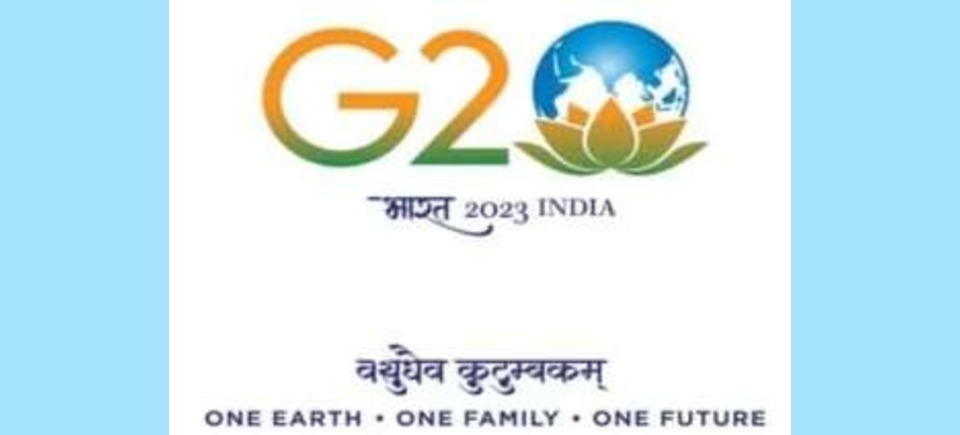
By Mukesh Aghi
India has long espoused a multilateral world order where the key stakeholders need to reflect the evolution of the global economy over the past 70 years. The G20 agenda for 2023 focuses on numerous ideas and issues including climate financing, energy security, international development cooperation as well as inclusive, equitable, and sustainable growth.
Today, December 1, 2022, India formally takes over from Indonesia as G20 President.
Prime Minister Modi’s message ahead of the next G20 Summit has been that India’s Presidency will be based on the importance of equitable growth and a shared future for all.
The messaging was clear that “India’s G20 presidency is coming at a time of crisis and chaos in the world”, from the pandemic and conflicts and therefore, lotus, the national flower of the country, is its symbol projecting peace and “Vasudhaiva Kutumbhakam” or “One Earth One Family One Future”.
Certainly, the G20 bloc represents the 20 most powerful economies that contribute to around 80 percent of global GDP and over 75 percent of global trade. It started in 1999 with the aim of discussing policies in order to achieve international financial stability. But it wasn’t until the financial crisis of 2008 that the forum gained ground as a vehicle to address the global financial crisis. Since then, the G20 had its greatest significance in strengthening the global financial system, promoting economic cooperation, and preventing new global financial crises. Each year the host nation brings a unique perspective and touches on key policy issues.
India should use this august platform, to state its priorities for the region and the emerging market world. New Delhi has already outlined priorities pertaining to climate action, critical and emerging technologies, resilient supply chains, and vaccines, which still remain a priority until COVID-19 has been eradicated.
As the US Treasury Secretary Janet Yellen pointed out in her recent visit to India, India’s G20 Presidency in the upcoming year provides an extensive opportunity to further advance the bilateral partnership and to fulfill broader goals, as Washington throws its weight behind India, in its G20 Presidency. “Friendshoring” was the key term that the Secretary stated in the latest effort toward rebuilding supply chain resilience.
India has long espoused a multilateral world order where the key stakeholders need to reflect the evolution of the global economy over the past 70 years. The G20 agenda for 2023 focuses on numerous ideas and issues including climate financing, energy security, international development cooperation as well as inclusive, equitable, and sustainable growth. New Delhi can strive towards building an inclusive ecosystem with holistic mechanisms to address key global issues for the private sector.
One of the key issues being digital transformation, as Prime Minister Modi echoed as the “most remarkable change” of this era, has been digitization- a key priority, where a digital economy is the key to inclusive growth and one that can uplift millions out of the morass of poverty.
Prime Minister Modi stated “India will work jointly with G20 partners towards this objective”, referring to digitization. The principle of ‘data for development’ will be an integral part of the overall theme of our Presidency ‘One Earth, One Family, One Future”. Furthermore, digital solutions will also be helpful in the fight against climate change, as India, like the rest of the world, turned to remote-working and paperless green offices during the pandemic.
Furthermore, this led to an uptick in digital sectors such as EdTech and MedTech. India will use the G20 platform to address joint research and development in climate finance and clean energy technologies, as India recently reiterated at COP 27 in Egypt.
As COP27 ended in Egypt, India reiterated that developing countries need independence in their choice of energy mix, to achieve sustainable development goals (SDG). India has maintained that developed countries need to take the lead in climate action.
Countries couldn’t agree to “phase down” all fossil fuels (not just coal), as India and most of the EU nations reiterated this to be included in the final decision to keep the 1.5-degree Celsius goal alive to limit global warming.
Under the wider theme of sustainability, the US and India can fulfil their bilateral goals and shared agenda under the auspices of the global G20 platform. With the present global order in a state of flux and the changing dynamics of the contemporary international system, India’s presidency assumes greater relevance, at a time when global economies are sluggish, and India is punching above its weight with nearly 7 percent economic growth.
Collective-action initiatives like the Mission LiFE movement (Lifestyle for the Environment) launched by Prime Minister Narendra Modi lead the way towards substantial opportunities for increasing global engagement, especially for countries in the Global South.
India’s G20 Presidency propels its role as an emerging leader in the global scenario, where New Delhi will focus on steering global engagement, growth, and development, environmental concerns, digital economy, and infrastructure in the emerging market. The leadership also gives a stronger voice to the challenges faced by the developing world as it leads the way with its increasingly growing economy.
—Mukesh Aghi is the CEO & President of US- India Strategic Partnership Forum)
More information
https://www.cnbctv18.com/views/views-g20-presidency-finest-opportunity-for-india-to-showcase-its-strengths-15294791.htm

Since India’s economic reforms of 1991, the country has emerged as an economic behemoth, a South Asian tiger and this has helped forge a close economic partnership with US.
The U.S.-India relationship has been dubbed as the most important strategic partnership of the 21st century. India’s economic reforms of 1991 and its emergence as South Asian tiger has helped forge closer economic partnership between our two countries.
By Mukesh Aghi
75 years is a milestone, a monumental one indeed.
This August, we celebrate India’s 75 years of independence, but simultaneously celebrate 75 years of relations between the United States and India.
The US-India relationship has been dubbed as the most important strategic partnership of the 21st century. I have witnessed how the relationship has moved beyond symbolic platitudes between the world’s oldest and largest democracy to robust engagements across trade, defence, climate and technology.
Our political relations may be long, but our economic synergy has been comparatively a shorter story. Since India’s economic reforms of 1991, the country has emerged as an economic behemoth, a South Asian tiger and this has helped forge a close economic partnership between our two countries. From my years in the private sector, particularly the technology sector, I have witnessed how American enterprises have leveraged India’s skilled workforce and burgeoning economic growth and tapped into the Indian market.
In a short period, the bilateral trade between India and the U.S. has crossed the $100 billion mark in 2021. According to official figures, the overall US-India bilateral trade in goods and services reached a record $157 billion, a drastic increase from the 2020 trade figures.
The economic importance of this relationship is well evinced. Washington’s trade with its top 15 partners has increased over the past year; the single biggest jump was with New Delhi in 2021, making India the eighth largest trading partner for the US. The Honorable Commerce and Industry Minister, Piyush Goyal at our Annual Leadership Summit has spoken about a milestone target of a trillion dollars in bilateral trade by the year 2030. For India, to achieve its target of a $ 5 trillion economy, the lion’s share of Foreign Direct Investments (FDI) will need to come from the world’s largest economy.
Our shared objectives, values, and vision lie in securing a free, open, and prosperous Indo-Pacific, adhering to a rules-based international order, and maintaining international security while upholding freedom of navigation. Furthermore, our joint-military engagement along with our Quad partners demonstrates the comprehensive strategic partnership, as we seek to align the Quad to work towards helping regions in the Indo-Pacific address the pernicious threat of climate change, vaccine delivery, and work to secure critical and emerging technologies.
In the Middle East, our mini-lateral cooperation in I2U2, along with Israel and the United Arab Emirates has prioritized our regional interests in the region in cyberspace, food, and energy security, as the conflict in Europe has highlighted the near-term shortcomings.
As we look towards a post-pandemic recovery, we are cognizant of how the pandemic has cost lives and wreaked economic havoc in our two countries. And yet in the new era of social distancing, our two countries have come closer in our vaccine cooperation as we seek to leverage India’s pharmaceutical manufacturing prowess and American logistics to ensure the delivery of safe and cost-affordable vaccines to countries in need.
Our goal is forward-looking and for posterity’s sake, the Quad fellowship seeks to nurture the next generation of scientists as we prioritize education through shared values. The relationship has had its ebbs and flows through the first fifty years to the now robust edifice of strong diplomatic ties that it now rests on.
This relationship is much bigger than government-to-government relations. Its strength lies in the partnership between two kindred spirits. What makes this partnership truly special is an unwavering commitment to democratic values and a mutual affinity that the people share for each other. The story is one of the shared democratic values, codified in both constitutions but above all the power of the populace and hence we believe that the real catalyst to this strategic partnership is the story of the Diaspora, who have helped fructify this colossal partnership of 75 years.
While we look back and celebrate the past 75 years, I am excited about what the future holds for our two economies as we work together to build stronger bonds, strengthen commercial ties, and tackle challenges such as the COVID-19 pandemic and climate change.
So, this August, on behalf of everyone at the US-India Strategic Partnership Forum (USISPF), I wish all my fellow Indian citizens and the diaspora across the world, a very Happy Independence Day.
The author is the CEO & President of US- India Strategic Partnership Forum
More information
https://www.financialexpress.com/defence/celebrating-75-years-of-us-india-relations/2633854/

By Dr Mukesh Aghi and Colonel Baljinder Singh (retd)
The conflict in Ukraine is well into its fourth month, the Russian ground and aerial and ground assault continues to bombard Ukrainian cities. The ripple effects have been pervasive beyond just Ukraine and European security.
At stake, is a supply chain crisis that has barely recovered since the COVID-19 pandemic. The implications for India are substantial and extend to how Indian leaders should manage the defense and national security enterprise.
After UkraineWar: A World of Change
India, with its large consumer demand has just started to see a COVID recovery with a demand uptick. Russia’s increased aggression on its western neighbour has catastrophically escalated oil prices to an energy crisis and critical shortages in food, grain, fertilizer, and chemicals.
Russia and Ukraine are both significant players in global energy, food grains and the fertilizer markets. Russia is the world’s third largest producer and exporter of oil; the second largest producer and the largest exporter of natural gas; and the third largest exporter of coal. Russia is also the world’s single largest exporter of wheat and the second largest exporter of sunflower oil and largest exporter of fertilizers overall.
Ukraine is also significant to global food markets, as the largest exporter of sunflower oil, the fourth largest exporter of maize and the fifth largest exporter of wheat.
Ukraine also provides about one-half of the world’s supplies of neon gas, – required for high-precision laser equipment used to manufacture microchips. Furthermore, Russia provided a large share of U.S. supplies of palladium, used in semiconductors and catalytic converters. U.S. sanctions on Russia, combined with continued war and deliberate sabotage of critical assets by warring forces, have resulted in immediate and significant disruption to supply chains and the movement of goods from the Black Sea and Sea of Azov to the world.
Impact on India’s Economy and Security
The ripple effects like a tsunami have hit Indian shores. The country’s soaring inflation rate led the Reserve Bank of India (RBI) to increase the repo rate for the first time since the COVID-19 pandemic with the most recent 50-basis point increase earlier in June. The Indian government has raised the prices of fuel, with the RBI estimating a growth forecast of nearly 7% (6.9%,)likely to become lower if global disruptions continue.
India is a net commodity importer and has witnessed an incremental increase in the cost of edible oils, combined with rising costs of importing crude oil. Prices of commodities like sunflower oil, a staple for Indians, have spiralled. The surge in fuel prices has impacted the price of food items, especially perishable items, exacerbated by increased logistic costs. Shipping costs are crushing small and medium enterprises in particular.
In the defence sector, pending equipment purchases and maintenance, repair, and operation of equipment (MRO) are of critical concern. More than 70 percent of the equipment used by the Indian armed forces is of erstwhile Soviet origin and India is heavily dependent on Russia for the supply of spare parts and components to keep the fleet functional. Plans for upgrading 86 Sukhoi fighters for $47 billion had to be shelved due to unavailability of semiconductors and other parts. The Ministry of Defence is also concerned about disruptions in supply of spares from both Ukraine and Russia, particularly for several tanks and missile systems currently being used by the Indian Army and for gas turbine engines used by several Indian Navy warships.
Another major effect is the delay in rolling out the S-400 Air Defence Missile System, which India had procured from Russia. The delivery of the system had begun in December 2021. India needs these weapon systems as it continues to face a military challenge from China along its disputed Line of Actual Control (LAC). The Indian government is concerned about the possibility of Chinese encroachment and the fraught geopolitical situation triggered by the conflict in Ukraine. Hence New Delhi is stepping up its infrastructure and militarization of the disputed areas.
Russia has come under a wave of sanctions, namely ousted from the international banking system, SWIFT, and hence this will affect impending payments for the S-400. The joint project to manufacture AK 203 rifles in India will likely be delayed, despite bureaucratic formalities completed.
First the pandemic and now Putin’s consequentes have halted global recovery. The longer the war, the more pronounced the effects. Though the Indian economy is resilient and recovering, it isn’t immune, and the importance of diversification, including continuing investment in self-reliance through Atma-NirbharBharat and indigenization of the defense industry.
As far as defence is concerned, India must diversify weapon purchases from global suppliers with terms that include technology transfer and domestic manufacturing through joint ventures. India should also work with partners to rapidly indigenize spares and sub-systems for Russian-origin equipment, taking over the MRO of these systems and reducing reliance on Russia which will be a more unreliable source due to its own needs to recapitalize and the complications of global sanctions. Over the next few years, India may be able to provide MRO for Russian-origin systems to nations, such as Vietnam, who also possess large inventories of Russian material.
Prime Minister Modi has made clear that Atma-Nirbhar Bharat does not mean India alone and now is the time to think out of the box about how Indian self-reliance can contribute to global resilience.
Partners like the United States, European Union (EU), Israel, Japan and Australia can coalesce in this effort as long as we structure major defence procurements that attract international investment and simultaneously build India’s defense and technology ecosystem.
(Dr Mukesh Aghi is the CEO & President and Colonel Baljinder Singh is Director Aerospace and Defence at US- India Strategic Partnership Forum. Views expressed are personal and do not reflect the official position or policy of Financial Express Online. Reproducing this content without permission is prohibited).
More information
https://www.financialexpress.com/world-news/the-ukraine-crisis-and-the-supply-chain-conundrum/2579599/

(Eds: Disclaimer: The following press release comes to you under an arrangement with Business Wire India. PTI takes no editorial responsibility for the same.)
New Delhi, Delhi, India & Washington, D.C., United States – Business Wire India
The US-India Strategic Partnership Forum (USISPF) announced the dates for its 2022 Annual Leadership Summit, “Celebrating 75 Years of U.S.-India Partnership”. The program will convene in a hybrid format the week of July 18, 2022.
This year, USISPF will recognize Chip Kaye, the CEO of Warburg Pincus, and Sumant Sinha, the Founder, Chairman and CEO of ReNew Power with the Global Leadership Award 2022 for their exceptional leadership in global financial investments and renewable energy projects in India.
Congratulating the awardees, John Chambers, Chairman of the USISPF Board, said, “This year, we honor two USISPF Board Members for their contributions to strengthening business ties between the U.S. and India. Chip and Sumant have been tireless advocates for a more vital U.S.-India economic partnership and we are grateful for their leadership on our Board.”
Mukesh Aghi, President and CEO of USISPF said, “It was Chip who led Warburg Pincus’s investment in Bharti Airtel over two decades back that paved the way through for global private equity firms to start looking at India, and Sumant has emerged as a leader in the new and renewable energy industry. ReNew has already done a lot of work for a sustainable future. Sumant built Renew as an entrepreneur, instilled world-class governance, and providing leading U.S. investors in the first opportunity to invest in Indian renewables and educating global stakeholders in the India opportunity along the way. We are honored to present these two leaders with the 2022 USISPF Global Leadership Awards.”
Chip Kaye has led Warburg Pincus for the past two decades, including during the firm’s expansion into Asia. Under Chip Kaye’s leadership, Warburg Pincus opened their first Asia office in 1994, paving the way for other global private equity firms to enter the region.
Accepting this award, he said, “I share my gratitude for this meaningful recognition with my Warburg Pincus India colleagues who, for more than 25 years, have played a growth catalyst role by partnering with innovative companies in the region. We appreciate our long-standing relationships with Indian entrepreneurs and look forward to continuing to partner with talented management teams to build valuable, sustainable companies.”
Sumant Sinha founded ReNew Power in 2011 and has grown it to become India’s largest renewable energy company. ReNew now generates almost 2% of India’s total electricity annually, and in doing so helps mitigate half a per cent of India’s carbon emissions in a year.
Acknowledging the award, Sumant said, “I am deeply honored and humbled to accept the USISPF 2022 Leadership Award. This recognition is made more meaningful as it comes at a time when businesses in both the U.S. and India are increasing collaboration across sectors; with a focus on innovation, the clean energy transition, fighting climate change, sustainability, and green supply chains. Both countries share similar democratic values and foster a culture of collaboration, inclusion, diversity, innovation and of not accepting the status quo. I am proud that, as chairman of ReNew Power, I have had the opportunity and privilege to contribute to deepening business and economic ties between both nations.”
This year, USISPF for the first time will also give the Distinguished Services Award for contributions to strengthening defense ties between the U.S. and India. The honorees will be General James Mattis, U.S. Marine Corps (Ret.), Former U.S. Secretary of Defense, Davies Family Distinguished Fellow, Hoover Institution, and General Manoj Mukund Naravane, Former Chief of Army Staff, Indian Army. During his time as Secretary of Defense, General Mattis took India to new heights as a strategic partner with the United States and emphasized a commitment to shared values of a safe and secure, prosperous, and free Indo-Pacific. During his time as Chief of Staff of the Indian Army, General Naravane helped to modernize the Indian army, along with improving defense partnerships and growing interoperability between the U.S. and India. USISPF is honored to celebrate these two individuals for their significant contributions to the U.S.-India defense relationship.
The awards ceremony will be part of a hybrid event taking place in Washington D.C. on July 21. The ceremony will be followed by a panel discussion with the honorees.
About the U.S.-India Strategic Partnership Forum (USISPF)
The US-India Strategic Partnership Forum (USISPF) is committed to creating the most powerful partnership between the United States and India. As the only independent not-for-profit institution dedicated to strengthening the U.S.-India partnership in Washington, D.C. and in New Delhi, USISPF is the trusted partner for businesses, non-profit organizations, the diaspora, and the governments of India and the United States.
More information
https://www.theweek.in/wire-updates/business/2022/06/21/pwr21-u.s.-india-strategic-partnership-forum–usispf.html

Washington, D.C., United States & New Delhi, Delhi, India:
The US-India Strategic Partnership Forum (USISPF) announced the dates for its 2022 Annual Leadership Summit, “Celebrating 75 Years of U.S.-India Partnership”. The program will convene in a hybrid format the week of July 18, 2022.
This year, USISPF will recognize Chip Kaye, the CEO of Warburg Pincus, and Sumant Sinha, the Founder, Chairman and CEO of ReNew Power with the Global Leadership Award 2022 for their exceptional leadership in global financial investments and renewable energy projects in India.
Congratulating the awardees, John Chambers, Chairman of the USISPF Board, said, “This year, we honor two USISPF Board Members for their contributions to strengthening business ties between the U.S. and India. Chip and Sumant have been tireless advocates for a more vital U.S.-India economic partnership and we are grateful for their leadership on our Board.”
Mukesh Aghi, President and CEO of USISPF said, “It was Chip who led Warburg Pincus’s investment in Bharti Airtel over two decades back that paved the way through for global private equity firms to start looking at India, and Sumant has emerged as a leader in the new and renewable energy industry. ReNew has already done a lot of work for a sustainable future. Sumant built Renew as an entrepreneur, instilled world-class governance, and providing leading U.S. investors in the first opportunity to invest in Indian renewables and educating global stakeholders in the India opportunity along the way. We are honored to present these two leaders with the 2022 USISPF Global Leadership Awards.”
Chip Kaye has led Warburg Pincus for the past two decades, including during the firm’s expansion into Asia. Under Chip Kaye’s leadership, Warburg Pincus opened their first Asia office in 1994, paving the way for other global private equity firms to enter the region.
Accepting this award, he said, “I share my gratitude for this meaningful recognition with my Warburg Pincus India colleagues who, for more than 25 years, have played a growth catalyst role by partnering with innovative companies in the region. We appreciate our long-standing relationships with Indian entrepreneurs and look forward to continuing to partner with talented management teams to build valuable, sustainable companies.”
Sumant Sinha founded ReNew Power in 2011 and has grown it to become India’s largest renewable energy company. ReNew now generates almost 2% of India’s total electricity annually, and in doing so helps mitigate half a per cent of India’s carbon emissions in a year.
Acknowledging the award, Sumant said, “I am deeply honored and humbled to accept the USISPF 2022 Leadership Award. This recognition is made more meaningful as it comes at a time when businesses in both the U.S. and India are increasing collaboration across sectors; with a focus on innovation, the clean energy transition, fighting climate change, sustainability, and green supply chains. Both countries share similar democratic values and foster a culture of collaboration, inclusion, diversity, innovation and of not accepting the status quo. I am proud that, as chairman of ReNew Power, I have had the opportunity and privilege to contribute to deepening business and economic ties between both nations.”
This year, USISPF for the first time will also give the Distinguished Services Award for contributions to strengthening defense ties between the U.S. and India. The honorees will be General James Mattis, U.S. Marine Corps (Ret.), Former U.S. Secretary of Defense, Davies Family Distinguished Fellow, Hoover Institution, and General Manoj Mukund Naravane, Former Chief of Army Staff, Indian Army. During his time as Secretary of Defense, General Mattis took India to new heights as a strategic partner with the United States and emphasized a commitment to shared values of a safe and secure, prosperous, and free Indo-Pacific. During his time as Chief of Staff of the Indian Army, General Naravane helped to modernize the Indian army, along with improving defense partnerships and growing interoperability between the U.S. and India. USISPF is honored to celebrate these two individuals for their significant contributions to the U.S.-India defense relationship.
The awards ceremony will be part of a hybrid event taking place in Washington D.C. on July 21. The ceremony will be followed by a panel discussion with the honorees.
About the U.S.-India Strategic Partnership Forum (USISPF)
The US-India Strategic Partnership Forum (USISPF) is committed to creating the most powerful partnership between the United States and India. As the only independent not-for-profit institution dedicated to strengthening the U.S.-India partnership in Washington, D.C. and in New Delhi, USISPF is the trusted partner for businesses, non-profit organizations, the diaspora, and the governments of India and the United States.
More information
https://www.businesswireindia.com/us-india-strategic-partnership-forum-to-honor-warburg-pincus-ceo-chip-kaye-and-renew-founder-and-ceo-sumant-sinha-with-2022-global-leadership-award-79423.html

India must adopt an “aggressive approach” to attract multinational corporations to set up and expand their bases in the country, a top Indian-American business advocacy group has said, observing the ongoing Russia-Ukraine war is leading to a tectonic shift in global trade.
“I think India has to play a much more aggressive approach to these corporations. Having a direct dialogue with these corporations and tells them: ‘what do you need’, ‘what can be done for you to come invest in India?’” Mukesh Aghi, president, US-India Strategic and Partnership Forum (USISPF) told PTI in an interview.
Every corporation has a unique requirement, he said.
“Yes, you can’t change the law. But you can define a broad-based policy, which makes it attractive for a lot of these companies to come into India. That’s where India has to reach out to these companies, understand the requirements and then put in place a set of policies which become uniform,” he said.
Aghi said there have been some efforts but those are more of a transactional effort rather than a uniform or a cohesive approach on this.
Aghi said at some point of time India will need to think about its relationship with Russia.
He pointed out when US President Joe Biden was meeting Prime Minister Narendra Modi in Tokyo as part of the Quad summit this week, the Russian and Chinese governments were flying long-range bombers over the Sea of Japan.
“The message was very clear from Russia, that its partner, and his allegiance lies with China and the Indo-Pacific region, rather than India. And to me, it was very stark, that while the Prime Minister of India is there, you have Russian bombers threatening or taking a threatening posture along with the Chinese. To me that’s a very clear message that India has to start thinking about its position with Russia,” he said.
In response to the over two-month-long Russia-Ukraine war, India has called for respect of territorial integrity of nations and the United Nations Charter.
However, New Delhi has not condemned Russia directly.
“The question really becomes: at what stage India will come out and condemn it. I think India as an emerging power has to start taking some positions, which may upset other nations, but that’s the nature of the beast when you are becoming a leading power,” Aghi said.
One thing that has come out clearly from the Ukraine war is that Russian equipment has not performed well, he said.
“Russian Defense Forces and the equipment have been destroyed substantially. Russia’s economic embargo means chips and semiconductors are not moving into Russia. So, Russia will have difficulty providing spare parts not only for his own armed forces, but for countries like India, he said.
“So India has to seriously start thinking what are the alternatives. At the end of the day, India’s biggest challenge is China, not Russia. And we’ve had in the last two years, physical invasion and killing by Chinese and Indian soldiers. That’s where the bigger enemy lies. India has to look at its supply side; this defense strategy from that perspective – as Russia gets weaker both from a supply chain perspective and also as a military problem? Aghi said.
According to Aghi, the Russian invasion of Ukraine has changed in some way the global order, especially the balance of power. We are seeing tectonic shifts taking place, he said.
“Corporate America got weaponised by having to pull out of Russia overnight, and that was not a diktat from the US government. It was a consumer sentiment which drove that decision making. There’s a tremendous amount of empathy for Ukraine and that influences boardroom thinking about being or not to be within Russia and the majority of the companies have pulled out of Russia, he said.
Now the question you have is among the boardroom discussion taking place is what happens if China invades Taiwan then what happens to our investments in China? More important is what is our backup strategy? Yes, you can bring back a lot of stuff manufacturing to the United States, but a lot of them won’t come in because of lack of resources, lack of manpower, he said.
And that’s where India becomes a critical player, both from a market perspective and also from a manufacturing perspective. I think that’s where you need to leverage all of India’s attractive market for these companies to come in and start having a China response strategy as things move forward, Aghi said.
More information
https://www.business-standard.com/article/current-affairs/india-needs-to-adopt-aggressive-approach-to-attract-businesses-usispf-122052700060_1.html
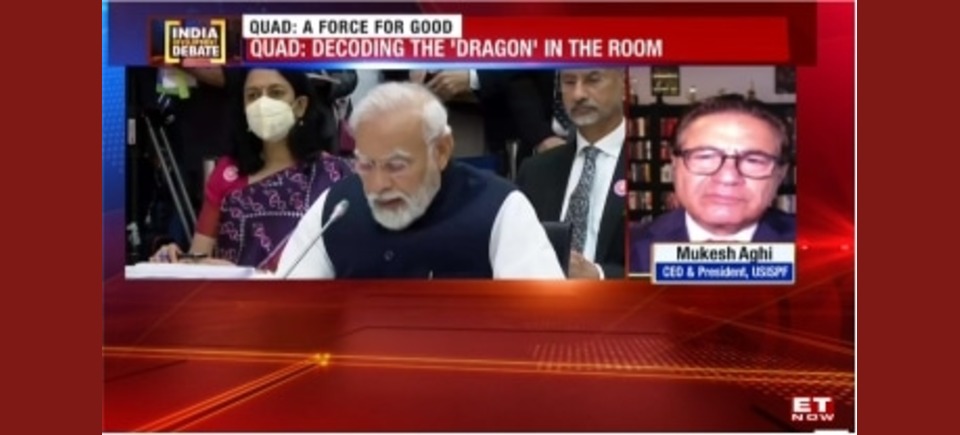
From peace and stability to global health security, read the joint statement by the leaders of India, Australia, Japan and the US at the Quad Summit 2022. The Quad leaders emphasised the need to address climate change and make robust arrangements for cybersecurity while harnessing critical and emerging technologies to ensure prosperity. Another key focus area was the peaceful resolution of disputes and the freedom of navigation in the East and South China Seas. In what may be considered an act of aggression, Chinese H-6K bombers and Russian Tu-95MS bombers conducted joint sorties above the Sea of Japan even while the Quad leaders were in Tokyo. We break down the key takeaways from the crucial summit and decode the ‘dragon’ in the room on the India Development Debate with Ambassador Leela K Ponappa, former career diplomat & former Dy NSA, Nalin Surie, former High Commissioner To UK and Mukesh Aghi, CEO & President, USISPF.
More information
https://www.timesnownews.com/videos/et-now/shows/quad-decoding-the-dragon-in-the-room-india-development-debate-et-now-video-91773382

Keith Krach (left) and John Chambers discuss the critical role trusted technology plays in advancing freedom at the US-India Strategic Partnership Forum West Coast Summit.
MENLO PARK, Calif.–(BUSINESS WIRE)–Keith Krach, Chairman of the Krach Institute for Tech Diplomacy at Purdue, and John Chambers, Chairman Emeritus of Cisco, discussed the critical role trusted technology plays in advancing freedom at the US-India Strategic Partnership Forum (USISPF) West Coast Summit. As the only independent institution dedicated to strengthening the U.S.-India partnership in Washington, DC, MENLO PARK, Calif.–(BUSINESS WIRE)–Keith Krach, Chairman of the Krach Institute for Tech Diplomacy at Purdue, and John Chambers, Chairman Emeritus of Cisco, discussed the critical role trusted technology plays in advancing freedom at the US-India Strategic Partnership Forum (USISPF) West Coast Summit. As the only independent institution dedicated to strengthening the U.S.-India partnership in Washington, DC, and New Delhi, USISPF is the trusted partner for businesses, non-profit organizations, diaspora, and the governments of India and the United States.
“I have worked for Keith Krach at Ariba and now with John Chambers at USISPF,” said the organization’s President and CEO Mukesh Aghi. “They are both true champions of a strong U.S.-India relationship and have done much in their careers to strengthen ties between our two nations.”
“As I think about the influences that have been most important to me over the years, my friend and mentor John Chambers stands out,” observed Keith Krach. “His visionary leadership of one of the world’s most important companies, Cisco, has changed the technology industry, and, in his role as the USISPF Chairman, John’s focus on promoting entrepreneurship, gender equality, and new business creation will continue to improve the lives of people in the U.S., India, and around the world.”
“Keith is one of this generation’s premier multi-sector transformational leaders, as he has proven repeatedly in business, philanthropy, tech, education, and government,” said John Chambers before the USISPF gathering of government and business leaders. “The common thread through all these transformational achievements is Keith’s emphasis on trust. As the Under Secretary of State, Keith was able to accomplish things that have not been done before by deploying his underlying “Trust Principle” doctrine and creating Tech Statecraft, for which he has been recognized with a 2022 Nobel Peace Prize nomination.”
Krach explained that the “Trust Principle” is based on democratic values, such as respect for the rule of law, sovereignty of nations, human rights, labor practices, press freedom, and the environment, as a peaceful alternative to authoritarian regimes’ “Power Principle” doctrine, rooted in brute force, coercion, and intimidation.
Krach described how, as the world was struggling through the worst pandemic in a century, his hybrid public servant-private sector executive team at the State Department put the “Trust Principle” to the test by taking on the Chinese Communist Party’s masterplan to control 5G. The concept resonated globally, as indicated by the success of the Clean Network, which attracted 60 countries, representing two-thirds of the world’s GDP, and more than 200 telecommunications companies rallying around the “Trust Principle.” It also put the Chinese government on notice that its “Power Principle” would no longer go unchallenged.
During their dialogue, Chambers also pointed to Krach as a champion of the U.S. high tech industry, citing his team’s lead role in the onshoring of Taiwan Semiconductor Manufacturing Company (TSMC), which has led to $300 billion investment in the U.S.-based chip manufacturing, and the design of the $250 billion bipartisan U.S. Innovation and Competition Act (USICA), which will fund research in top national security technologies in order to secure America’s high tech leadership for the next generation.
Shifting to the lessons of the war in Ukraine, Chambers brought up Krach’s Fortune article, Present your China contingency plan at the next board meeting, which highlighted the fact that many of the most respected board members in corporate America are demanding a China contingency plan from their CEOs. “What if Xi pulls a Putin?” Krach asked the USISPF attendees. “With Xi’s recent crackdown on private industry and the real probability of an attack on Taiwan, boards increasingly understand doing business with, in, or for China represents tremendous risk. Board members have a fiduciary duty to the shareholders to mitigate significant risks.”
The USISPF discussion concluded with the focus on deepening partnerships between the United States and India as an important aspect of the Krach Institute for Tech Diplomacy. “Democracy is under attack like never before and our two nations’ are the world’s largest democracies. Preserving freedom and peace through trust must be at the heart of our relationship” Krach said, “As one of America’s closest friends, a technological superpower, and a member of the Quad and the Clean Network Alliance of Democracies, India is not only a bulwark against techno-authoritarianism, but also crucial to advancing our shared democratic values through trusted technology.”
About the Krach Institute for Tech Diplomacy at Purdue:
The nonpartisan Krach Institute for Tech Diplomacy at Purdue is the world’s preeminent institution focused on Tech Statecraft, a new model of diplomacy that bridges the high-tech sector with the foreign policy and national security sectors to ensure trusted technology is used to advance freedom. The Krach Institute for Tech Diplomacy is a 501(c)(3) that leverages Purdue’s strength in innovation, deep expertise in technology, and global prowess in educating transformational leaders. It focuses on rallying our allies, leveraging the innovation of the private sector, and amplifying democratic values based on trust.
More information
https://www.businesswire.com/news/home/20220512006044/en/Keith-Krach-and-John-Chambers-Advance-US-India-Ties-Through-Trusted-Technology

“The 2+2 Ministerial Dialogue outlined the path forward to continue building on the ambitious course in the US-India partnership and touched on the secret sauce of this relationship – the importance of people-to-people ties,” Mukesh Aghi, president of US India Strategic and Partnership Forum (USISPF) said.
President Biden and Prime Minister Modi will now look forward to continuing the conversation in May at the next Quad Principal’s meeting in Tokyo, Japan, he said a day after the first virtual bilateral meeting between the two leaders along with the fourth India-US 2+2 dialogue.
The talks reiterated and reaffirmed the strength and robustness of the bilateral partnership.
Washington has made abundantly clear that New Delhi is a key partner in helping secure a “free, open and prosperous Indo-Pacific” as both President Biden and Prime Minister Modi discussed the important aspects of bilateral and global significance, he said.
“Most importantly, both leaders touched on the worrying humanitarian situation with the conflict in Ukraine, as Prime Minister Modi reiterated that diplomacy and dialogue between Ukraine and Russia was essential to ending this conflict,” Aghi said.
External Affairs Minister, S Jaishankar, Defence Minister Rajnath Singh and their counterparts, Secretary of State, Antony Blinken and Secretary of Defense, Lloyd Austin reiterated their respective leaders’ commitment and efforts in the global fight against the COVID-19 pandemic, the urgency of climate action, strengthening resilient supply chains disrupted by the pandemic and the Indo-Pacific Economic Framework and infrastructure, he said.
According to Aghi, this 2+2, like the past editions, touched on key science and technology partnership initiatives and new domains of cooperation in space and cyber and emerging technologies.
The foreign and defense principles outlined the importance of counterterrorism, operationalising the Major Defense Partnership and multilateral co-operation under the Quad umbrella, he noted.
Aghi said the dialogues epitomised the burgeoning military to military cooperation and joint-exercises between the armed forces of both nations as both sides reaffirmed their common strategic interests and an abiding commitment to the rules-based international order, touching on the Indian Ocean region to East and Southeast Asia and Europe.
“Both President Biden and Prime Minister Modi outlined their concern on the food supply shortages arising from the conflict and agreed to maintain close consultations on the ongoing crisis in Ukraine, including on humanitarian assistance efforts, and condemned the loss of civilian life,” he said.
More information
https://m.economictimes.com/news/india/22-ministerial-dialogue-outlined-path-forward-to-continue-building-on-the-ambitious-course-in-india-us-partnership-usispf/amp_articleshow/90806157.cms

“The 2+2 Ministerial Dialogue outlined the path forward to continue building on the ambitious course in the US-India partnership and touched on the secret sauce of this relationship – the importance of people-to-people ties,” Mukesh Aghi, president of US India Strategic and Partnership Forum (USISPF) said.
President Biden and Prime Minister Modi will now look forward to continuing the conversation in May at the next Quad Principal’s meeting in Tokyo, Japan, he said a day after the first virtual bilateral meeting between the two leaders along with the fourth India-US 2+2 dialogue.
The talks reiterated and reaffirmed the strength and robustness of the bilateral partnership.
Washington has made abundantly clear that New Delhi is a key partner in helping secure a “free, open and prosperous Indo-Pacific” as both President Biden and Prime Minister Modi discussed the important aspects of bilateral and global significance, he said.
“Most importantly, both leaders touched on the worrying humanitarian situation with the conflict in Ukraine, as Prime Minister Modi reiterated that diplomacy and dialogue between Ukraine and Russia was essential to ending this conflict,” Aghi said.
External Affairs Minister, S Jaishankar, Defence Minister Rajnath Singh and their counterparts, Secretary of State, Antony Blinken and Secretary of Defense, Lloyd Austin reiterated their respective leaders’ commitment and efforts in the global fight against the COVID-19 pandemic, the urgency of climate action, strengthening resilient supply chains disrupted by the pandemic and the Indo-Pacific Economic Framework and infrastructure, he said.
According to Aghi, this 2+2, like the past editions, touched on key science and technology partnership initiatives and new domains of cooperation in space and cyber and emerging technologies.
The foreign and defense principles outlined the importance of counterterrorism, operationalising the Major Defense Partnership and multilateral co-operation under the Quad umbrella, he noted.
Aghi said the dialogues epitomised the burgeoning military to military cooperation and joint-exercises between the armed forces of both nations as both sides reaffirmed their common strategic interests and an abiding commitment to the rules-based international order, touching on the Indian Ocean region to East and Southeast Asia and Europe.
“Both President Biden and Prime Minister Modi outlined their concern on the food supply shortages arising from the conflict and agreed to maintain close consultations on the ongoing crisis in Ukraine, including on humanitarian assistance efforts, and condemned the loss of civilian life,” he said.

“The 2+2 Ministerial Dialogue outlined the path forward to continue building on the ambitious course in the US-India partnership and touched on the secret sauce of this relationship – the importance of people-to-people ties,” Mukesh Aghi, president of US India Strategic and Partnership Forum (USISPF) said.
President Biden and Prime Minister Modi will now look forward to continuing the conversation in May at the next Quad Principal’s meeting in Tokyo, Japan, he said a day after the first virtual bilateral meeting between the two leaders along with the fourth India-US 2+2 dialogue.
The talks reiterated and reaffirmed the strength and robustness of the bilateral partnership.
Washington has made abundantly clear that New Delhi is a key partner in helping secure a “free, open and prosperous Indo-Pacific” as both President Biden and Prime Minister Modi discussed the important aspects of bilateral and global significance, he said.
“Most importantly, both leaders touched on the worrying humanitarian situation with the conflict in Ukraine, as Prime Minister Modi reiterated that diplomacy and dialogue between Ukraine and Russia was essential to ending this conflict,” Aghi said.
External Affairs Minister, S Jaishankar, Defence Minister Rajnath Singh and their counterparts, Secretary of State, Antony Blinken and Secretary of Defense, Lloyd Austin reiterated their respective leaders’ commitment and efforts in the global fight against the COVID-19 pandemic, the urgency of climate action, strengthening resilient supply chains disrupted by the pandemic and the Indo-Pacific Economic Framework and infrastructure, he said.
According to Aghi, this 2+2, like the past editions, touched on key science and technology partnership initiatives and new domains of cooperation in space and cyber and emerging technologies.
The foreign and defense principles outlined the importance of counterterrorism, operationalising the Major Defense Partnership and multilateral co-operation under the Quad umbrella, he noted.
Aghi said the dialogues epitomised the burgeoning military to military cooperation and joint-exercises between the armed forces of both nations as both sides reaffirmed their common strategic interests and an abiding commitment to the rules-based international order, touching on the Indian Ocean region to East and Southeast Asia and Europe.
“Both President Biden and Prime Minister Modi outlined their concern on the food supply shortages arising from the conflict and agreed to maintain close consultations on the ongoing crisis in Ukraine, including on humanitarian assistance efforts, and condemned the loss of civilian life,” he said.

